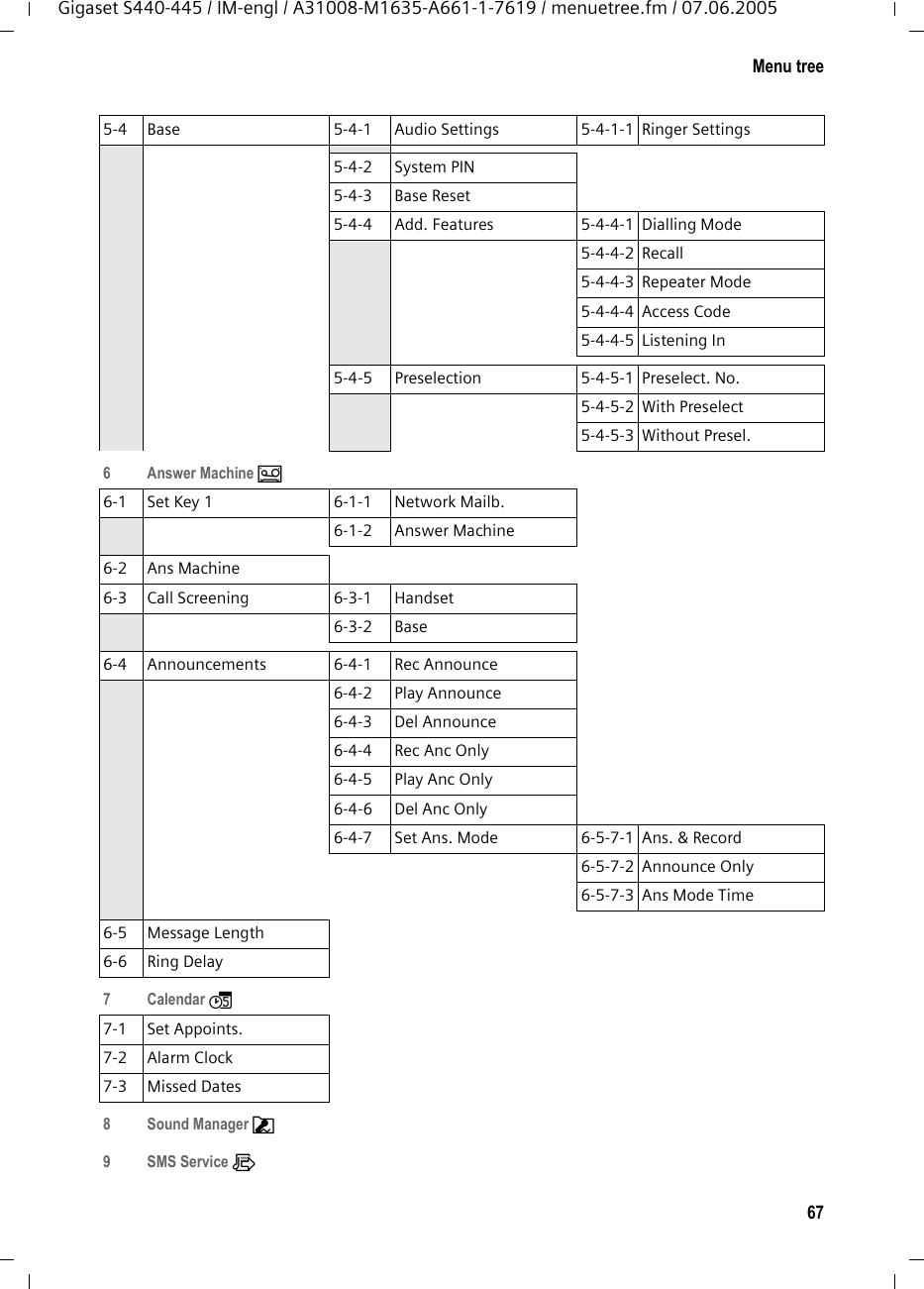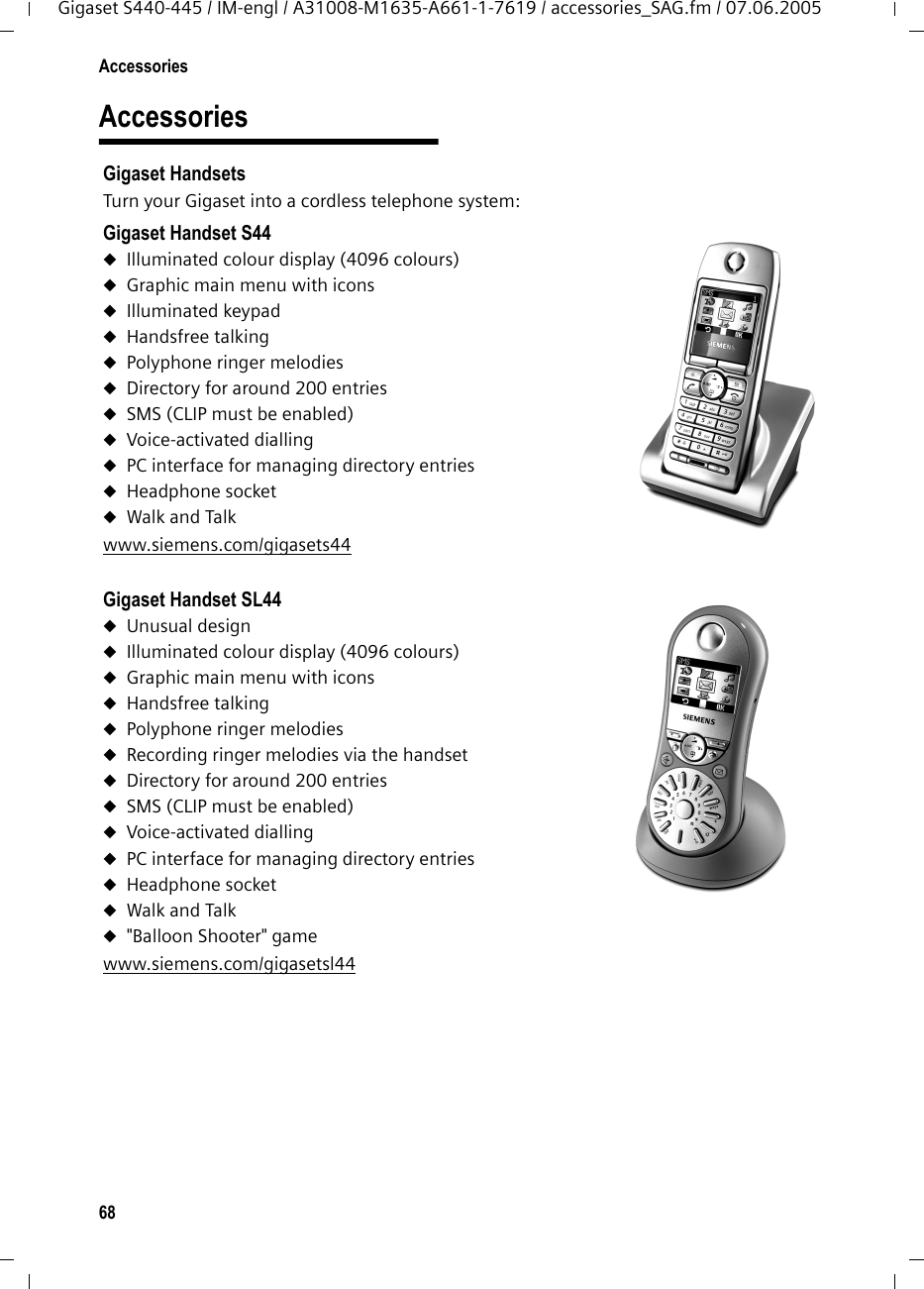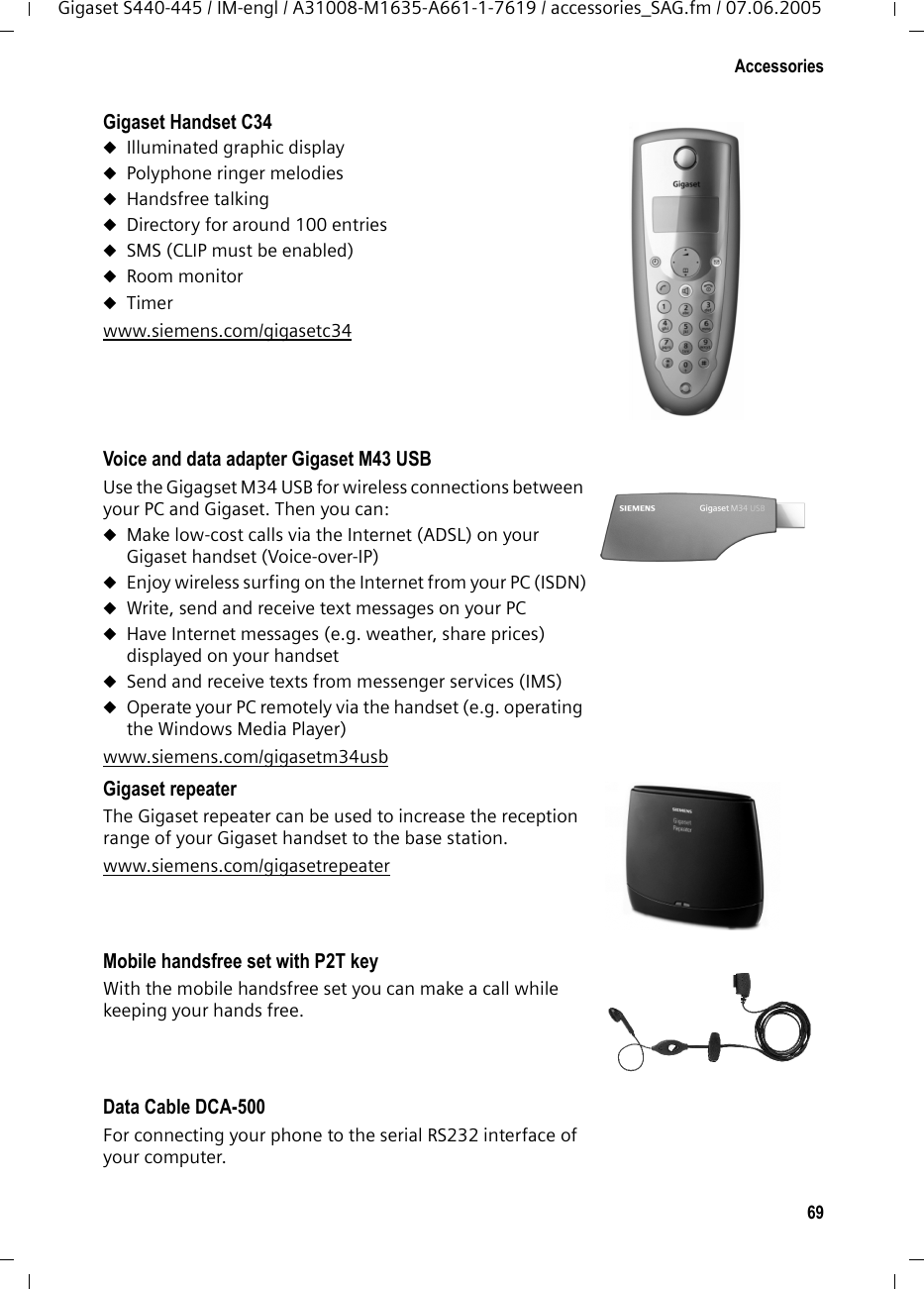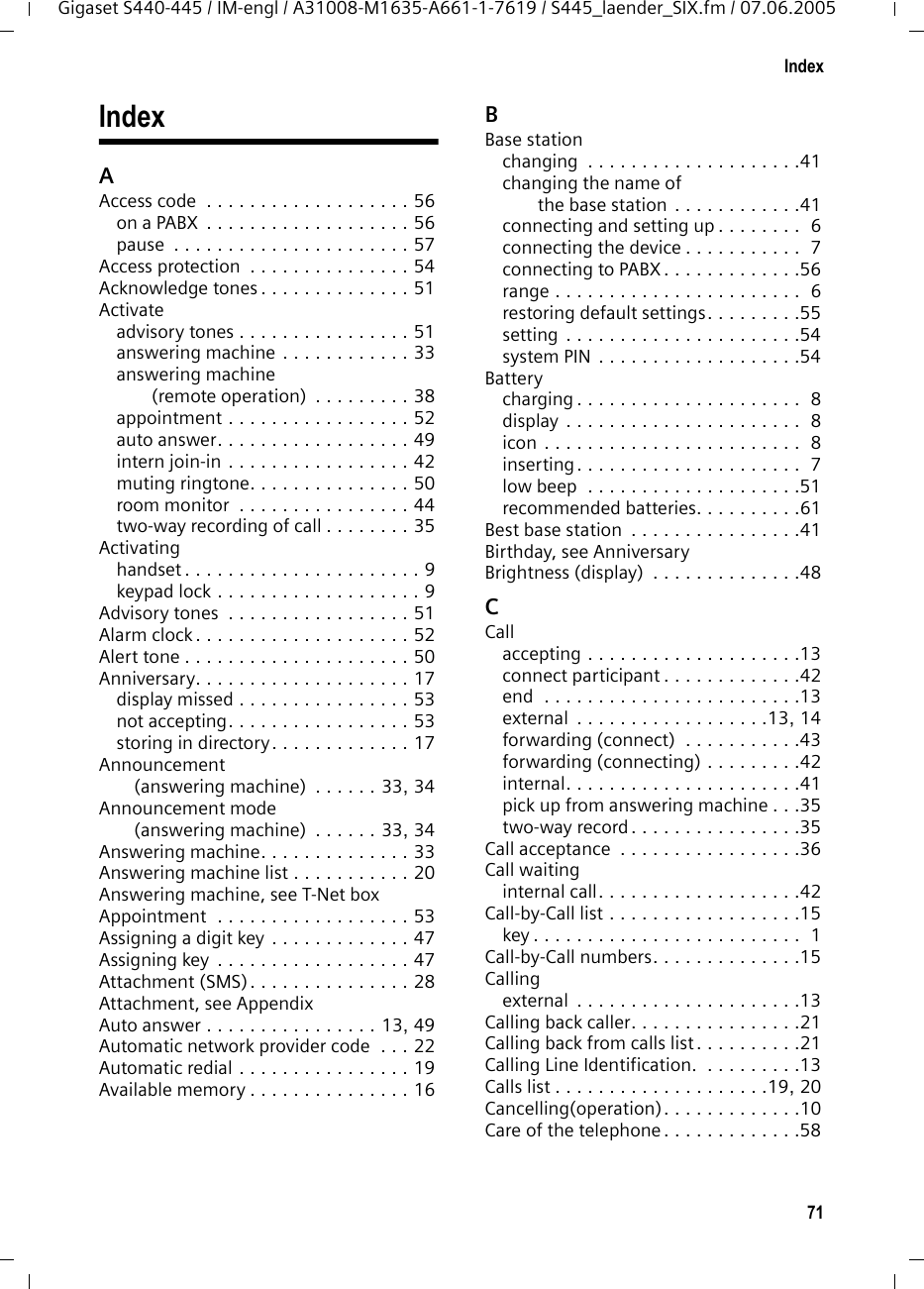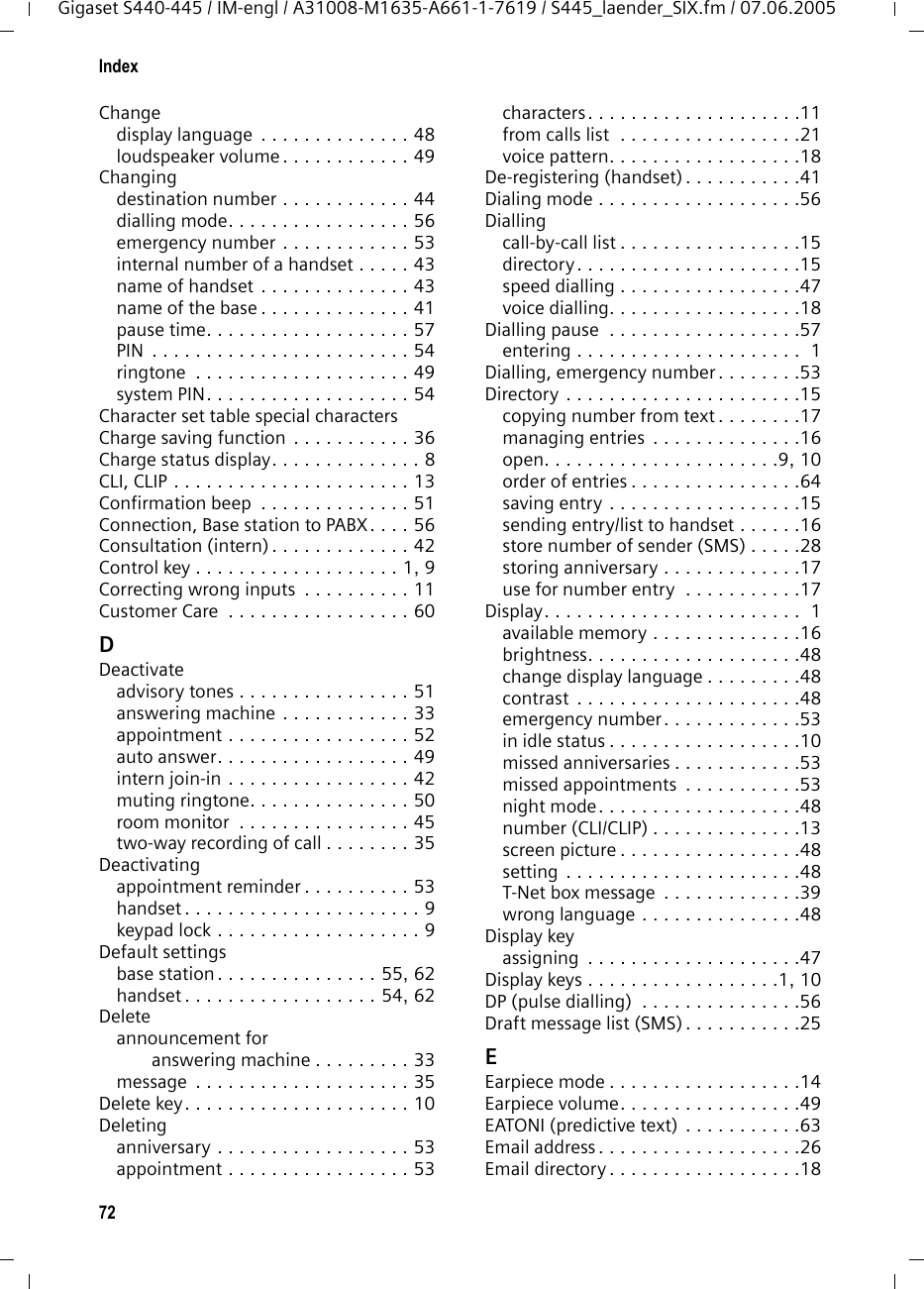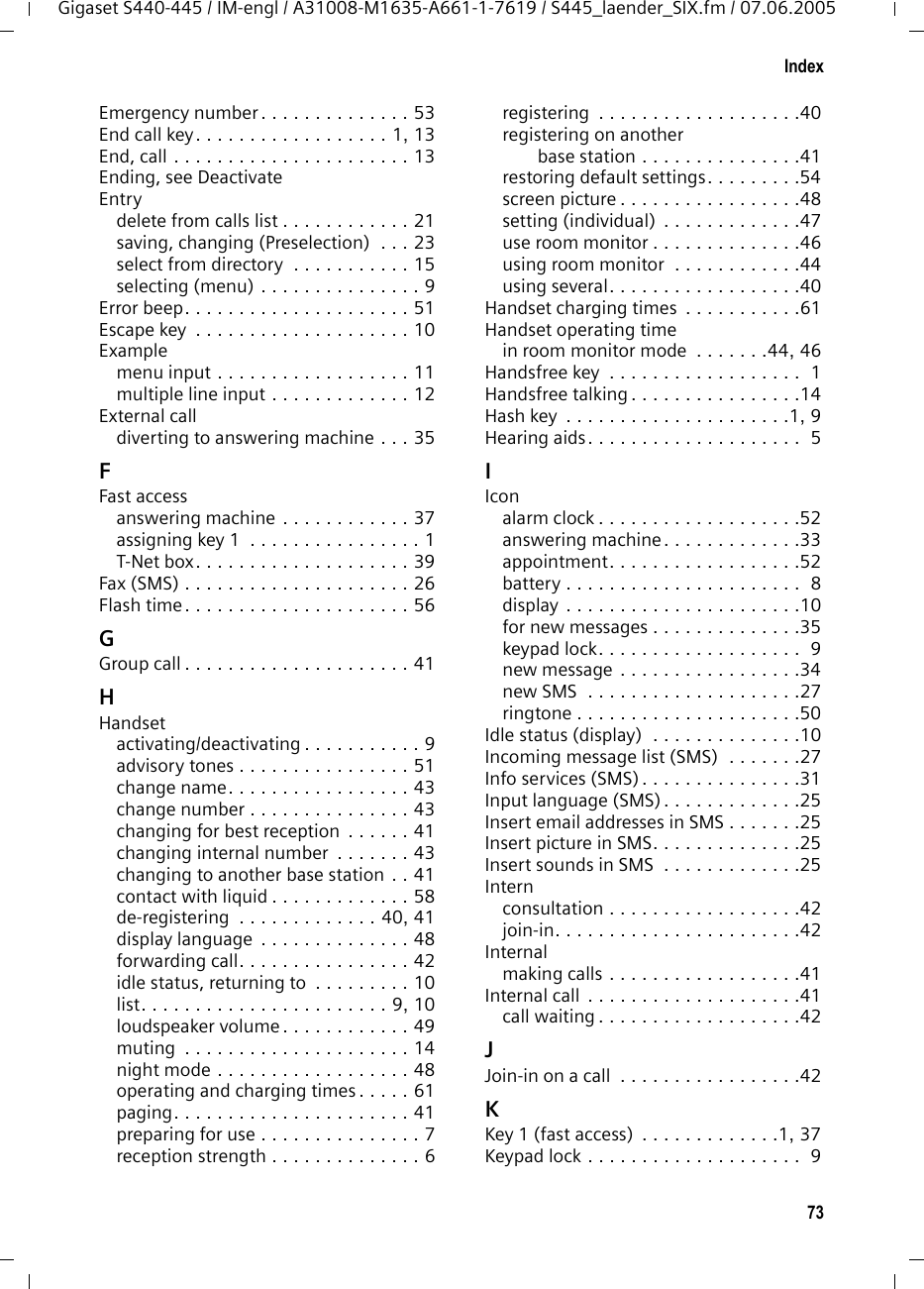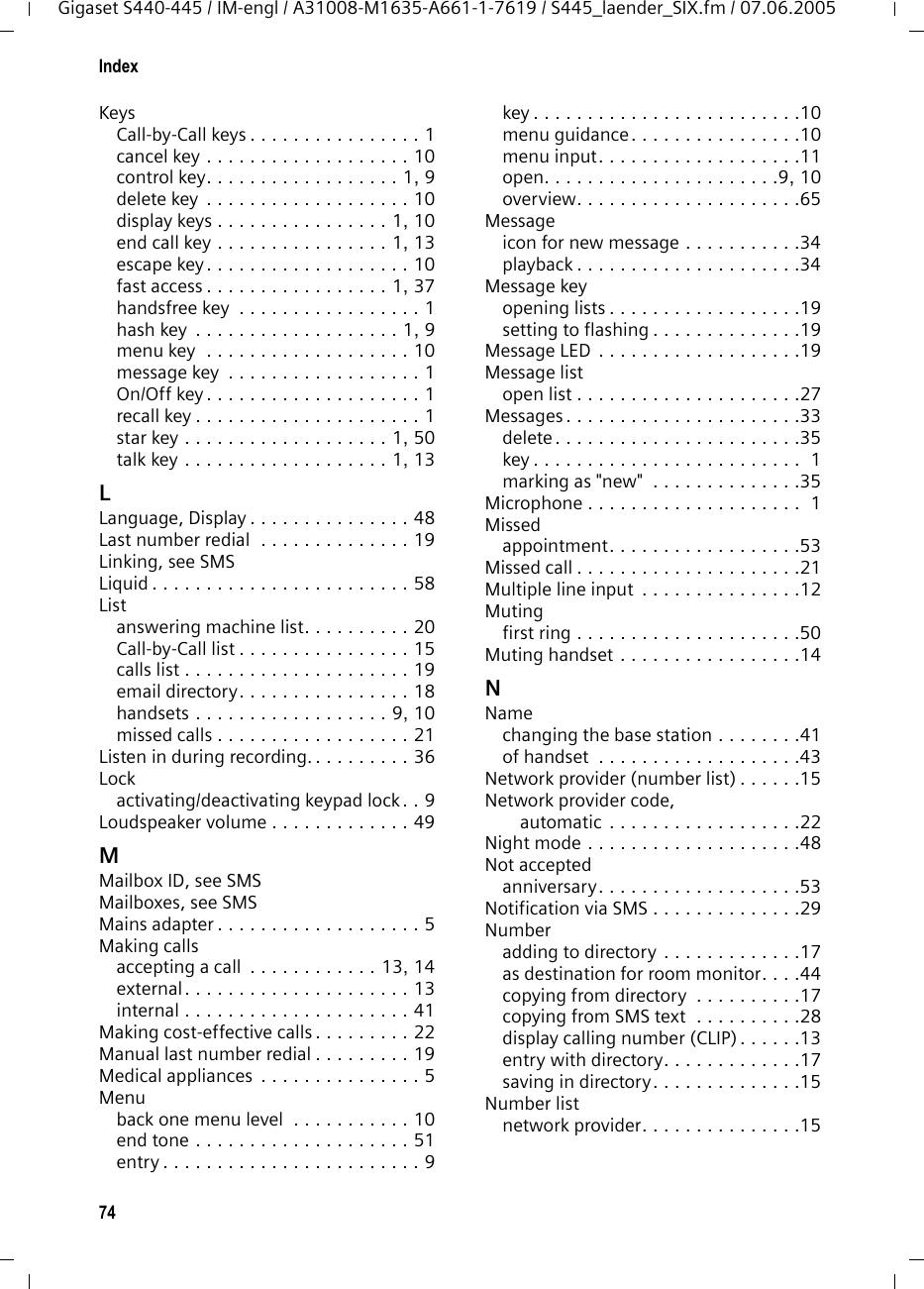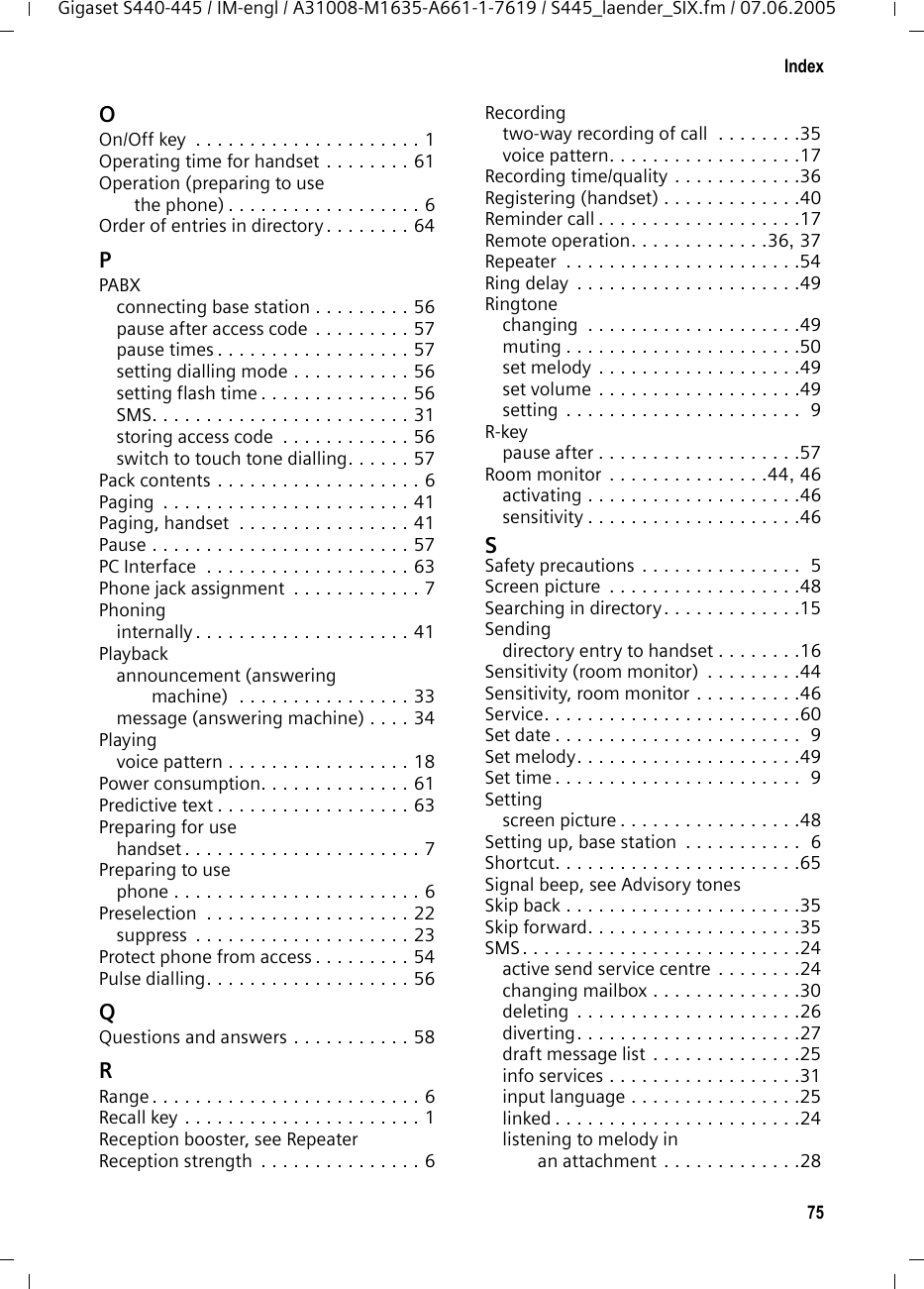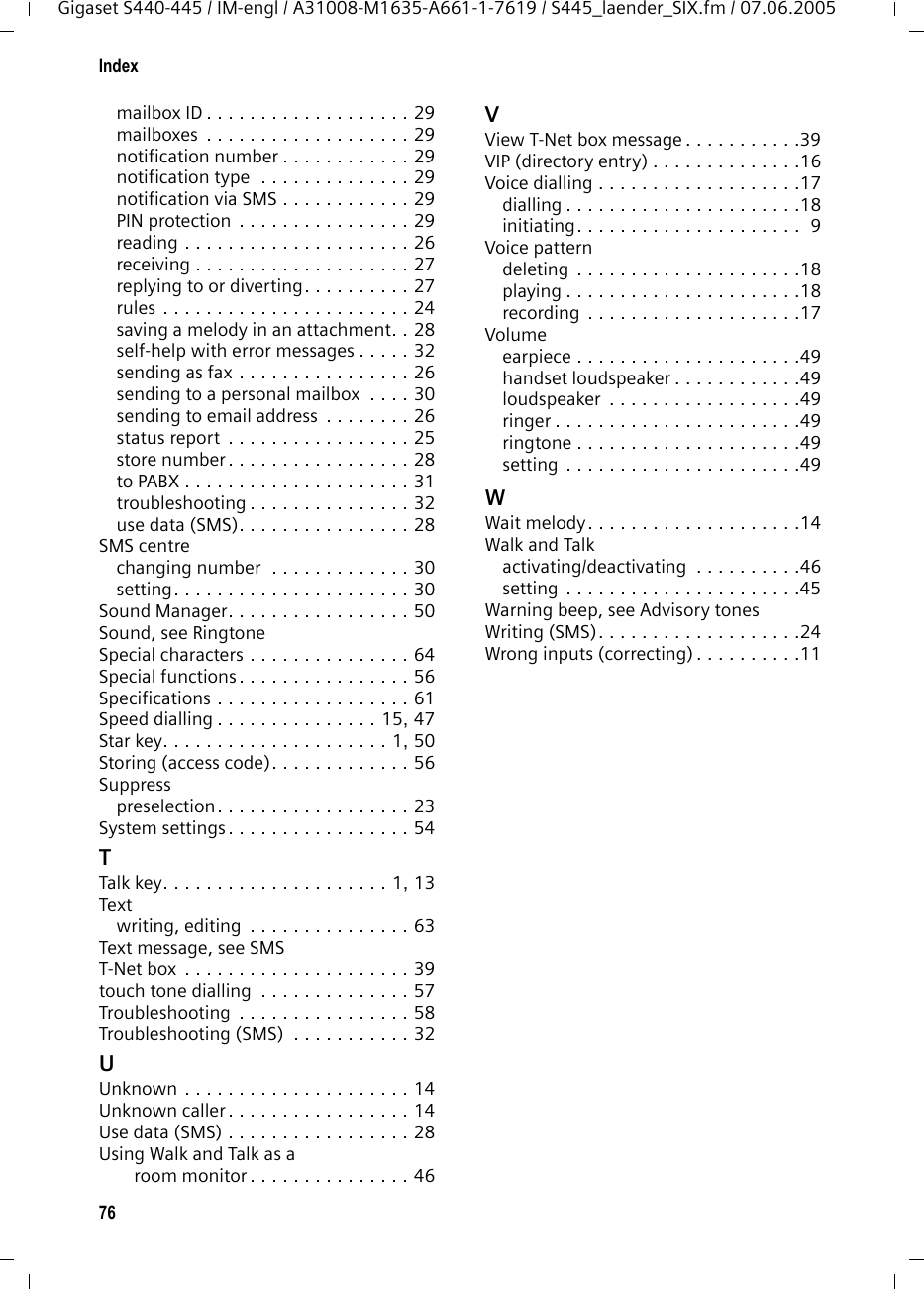Siemens Information and Communication Mobile S445 Cordless Phone Base Station User Manual S445 laender
Siemens Information and Communication Mobile LLC Cordless Phone Base Station S445 laender
Contents
- 1. Users Manual
- 2. Users Manual Addendum
Users Manual Addendum
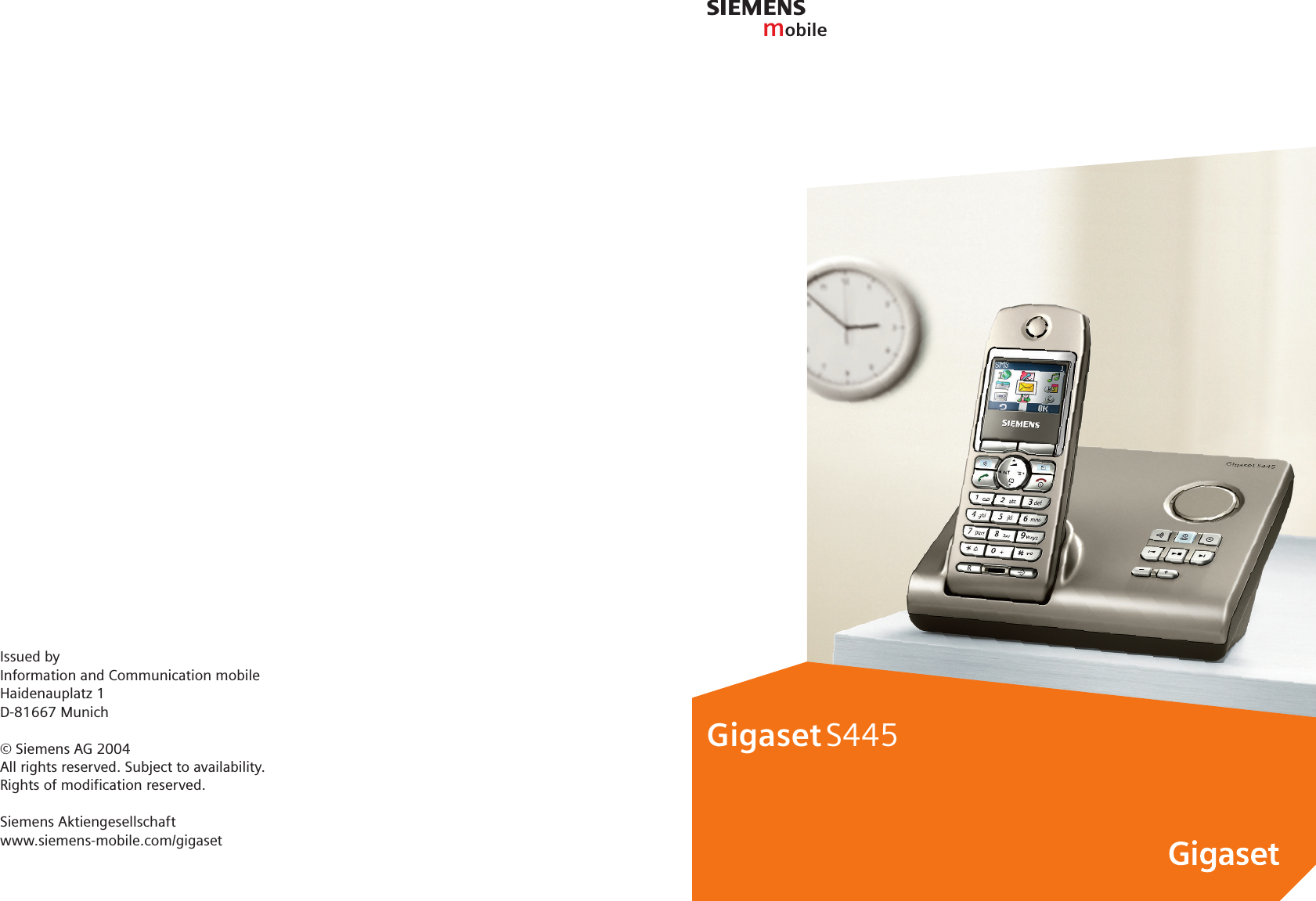
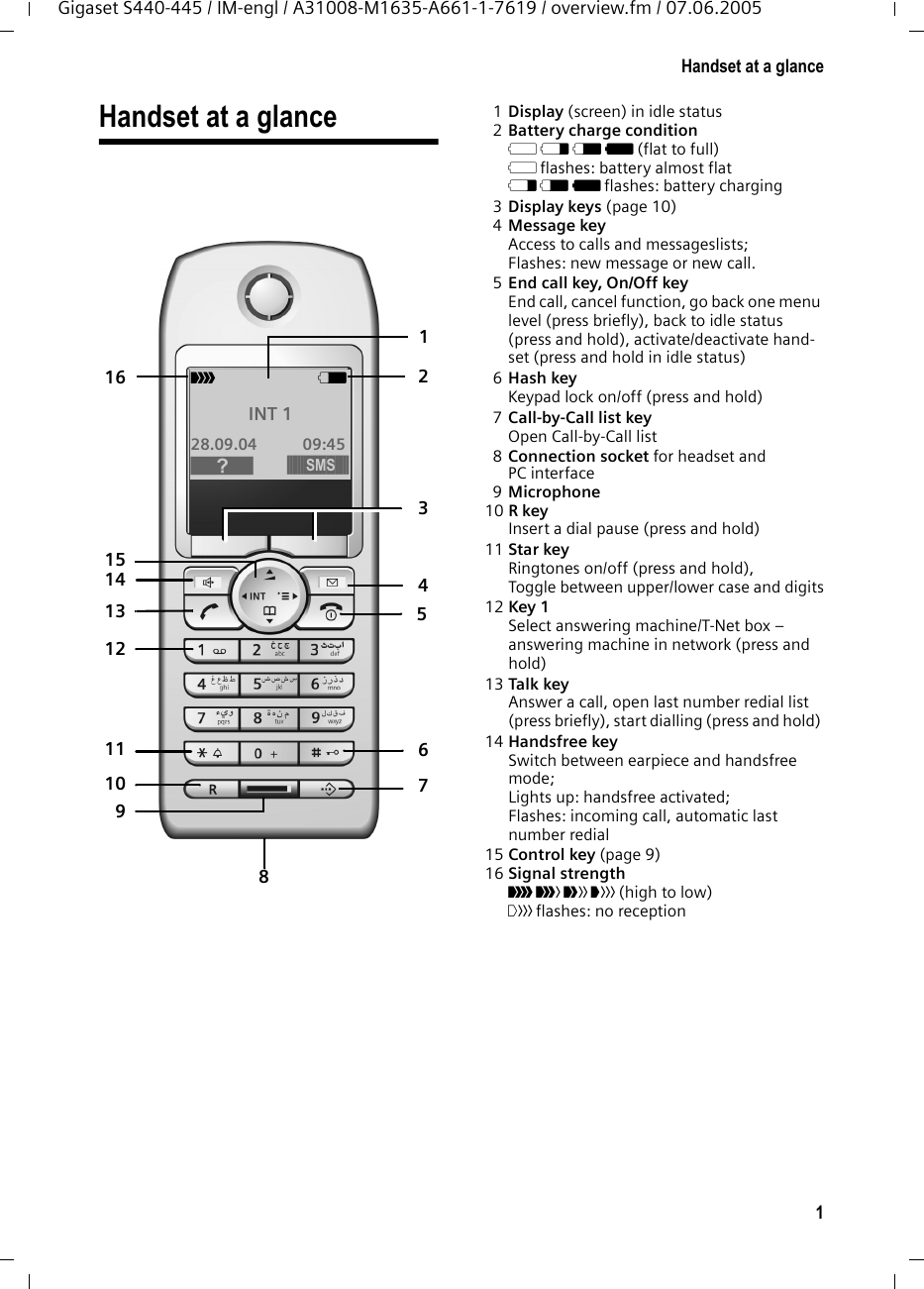
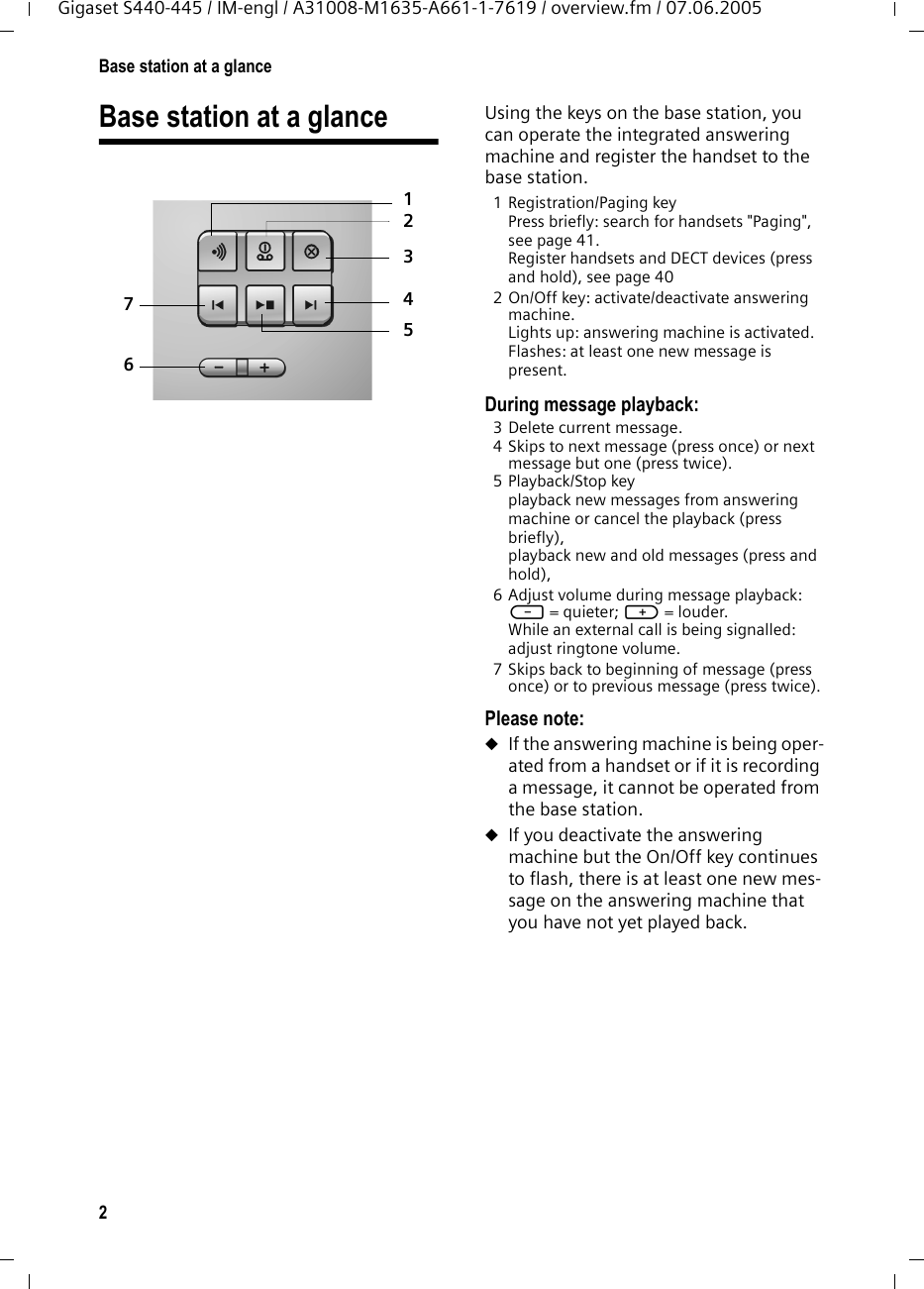
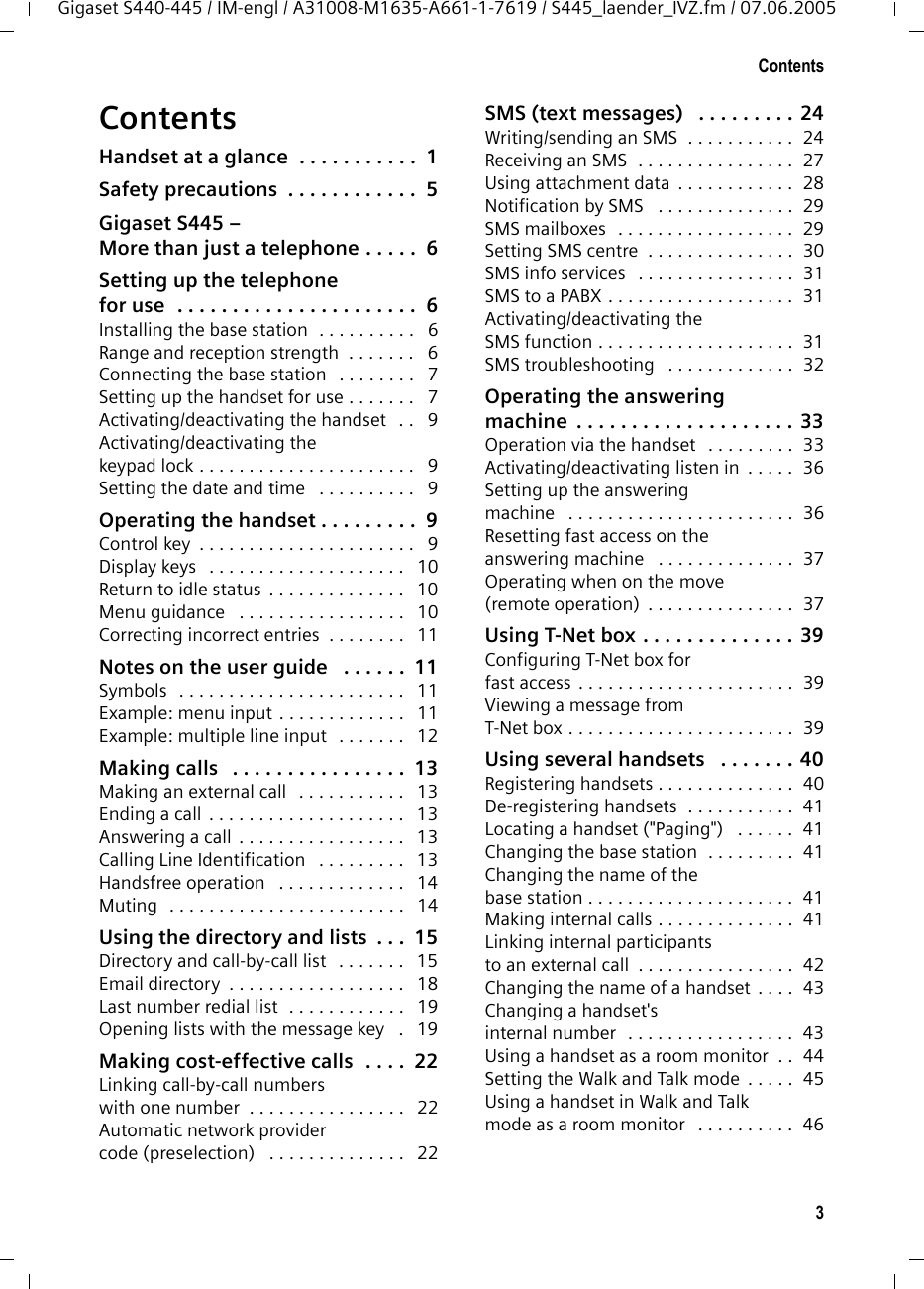
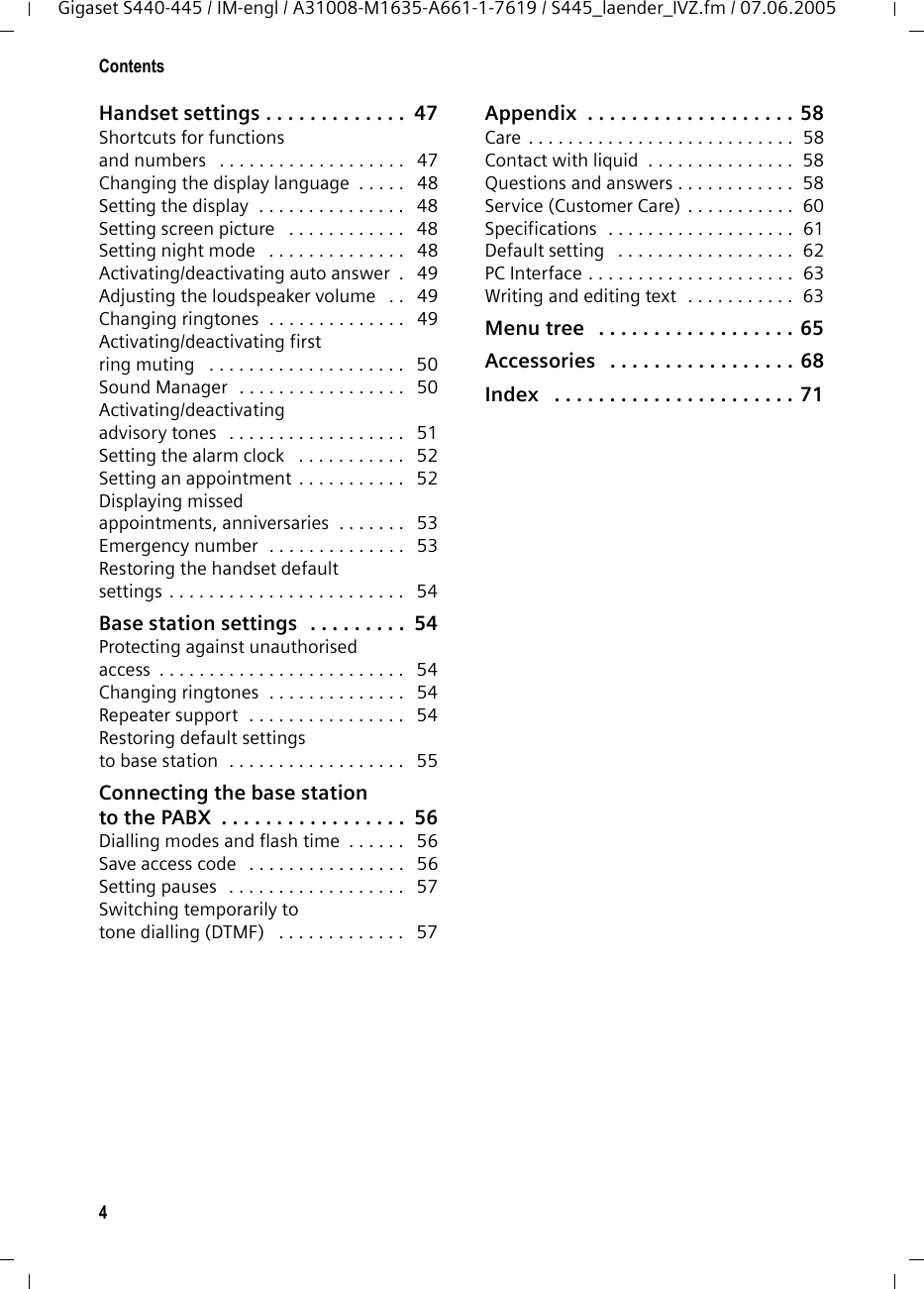
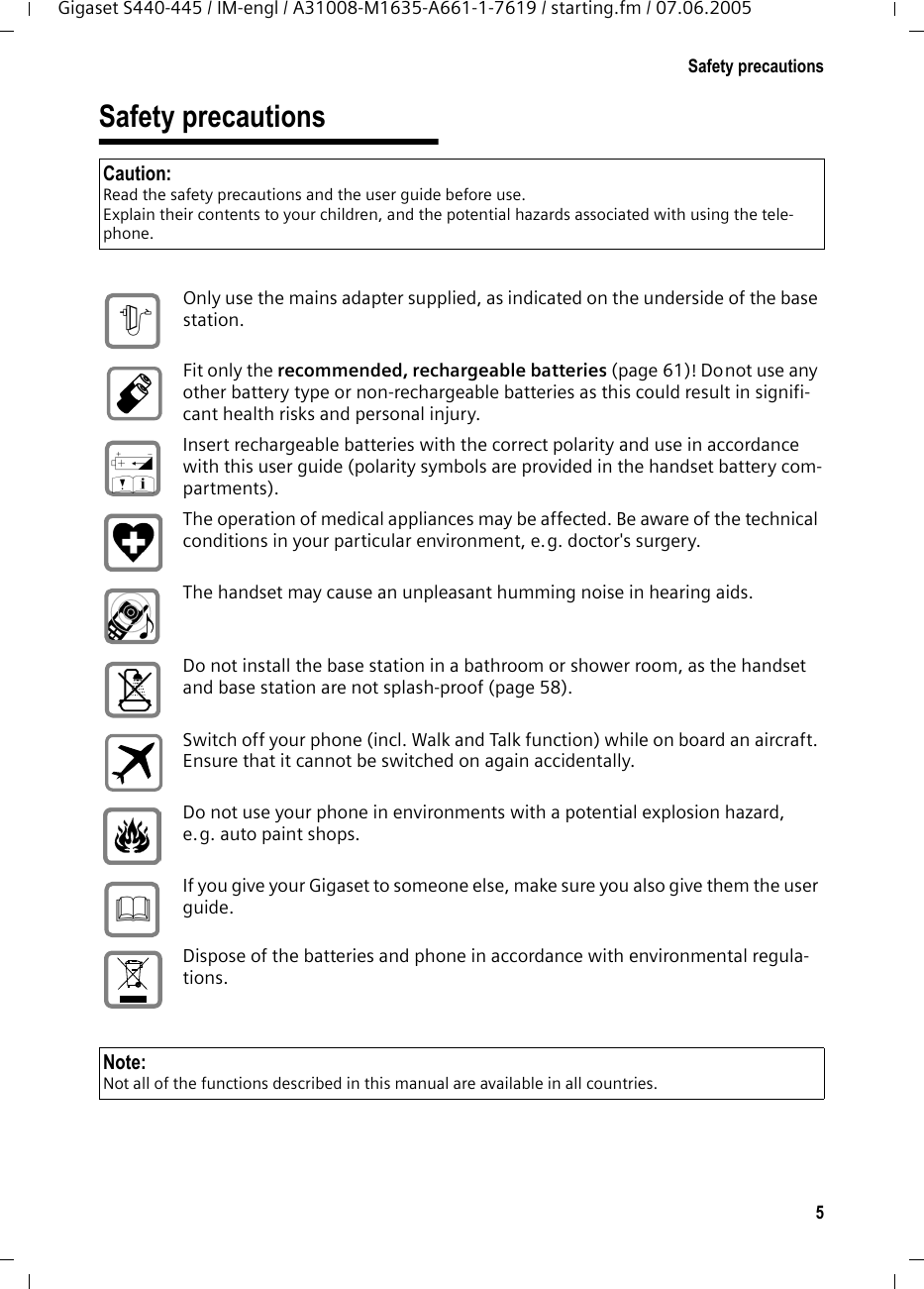
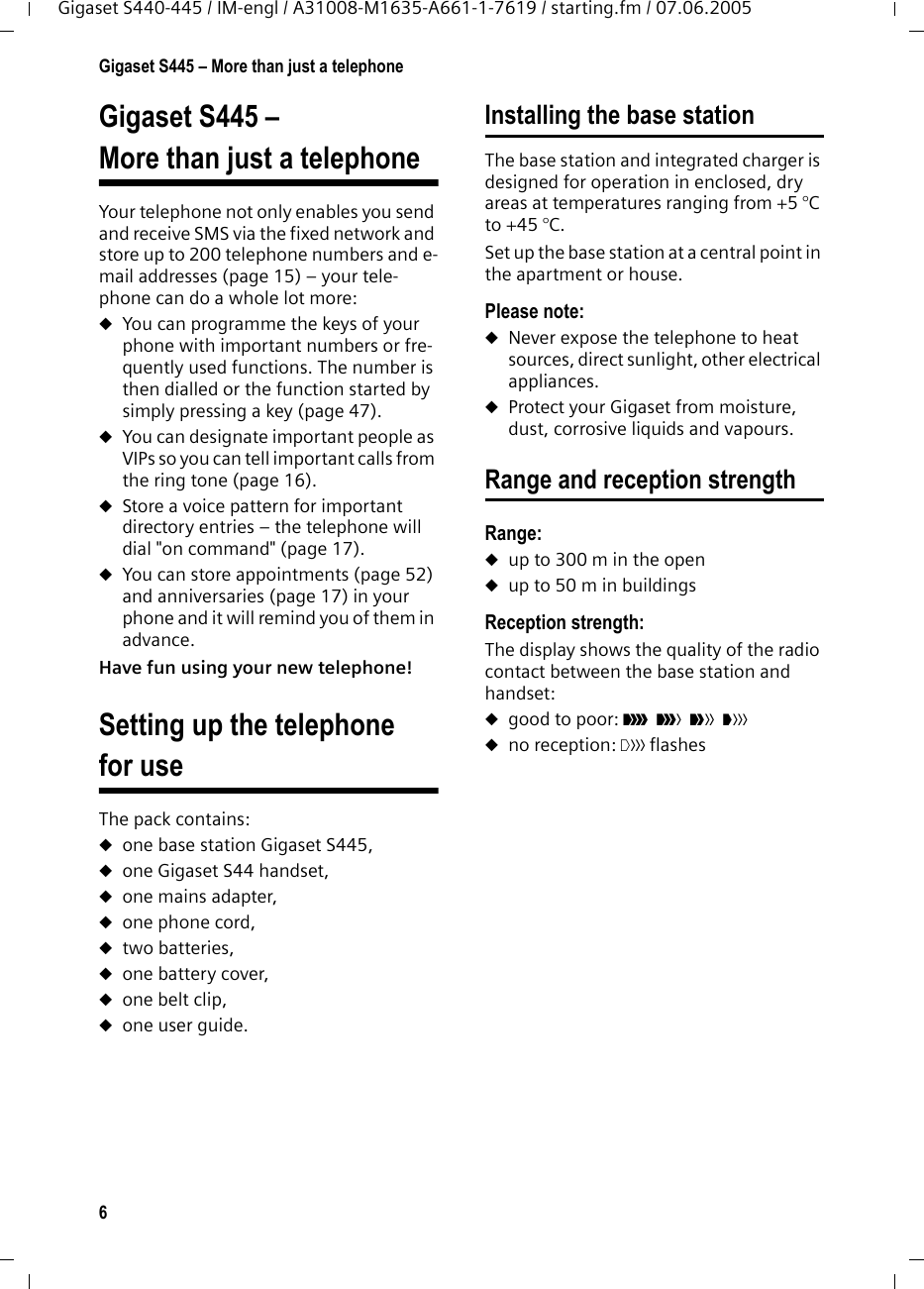
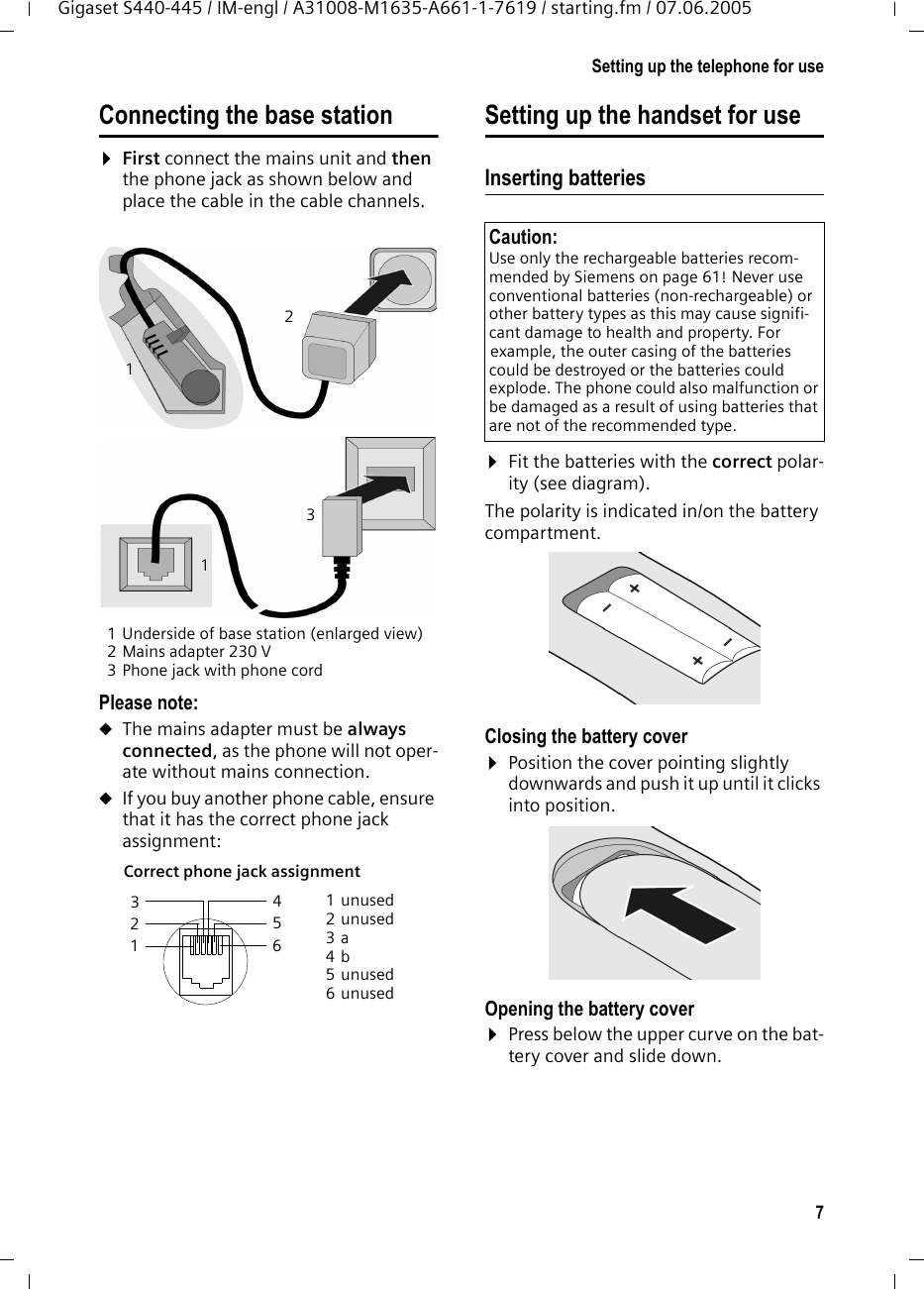
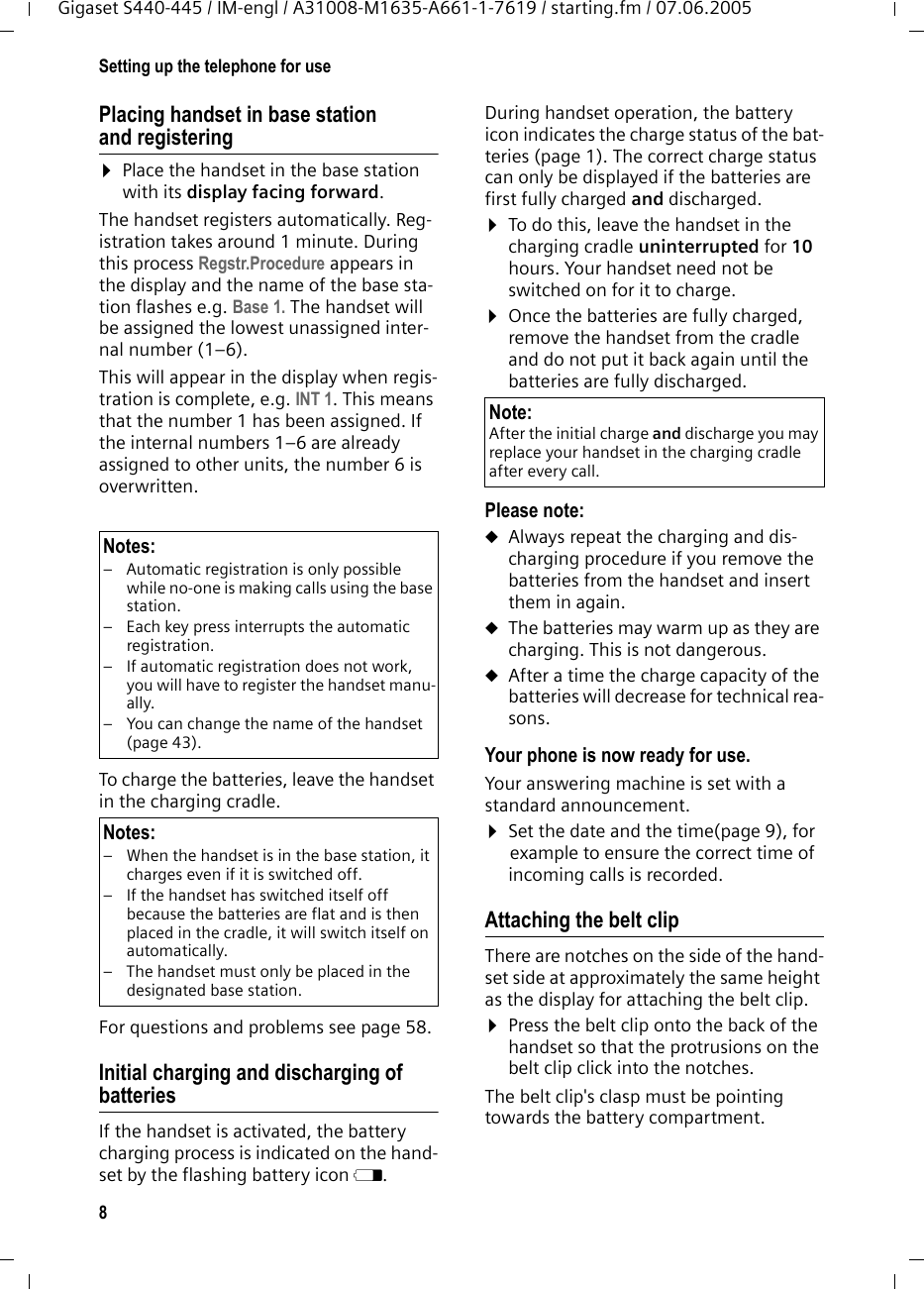
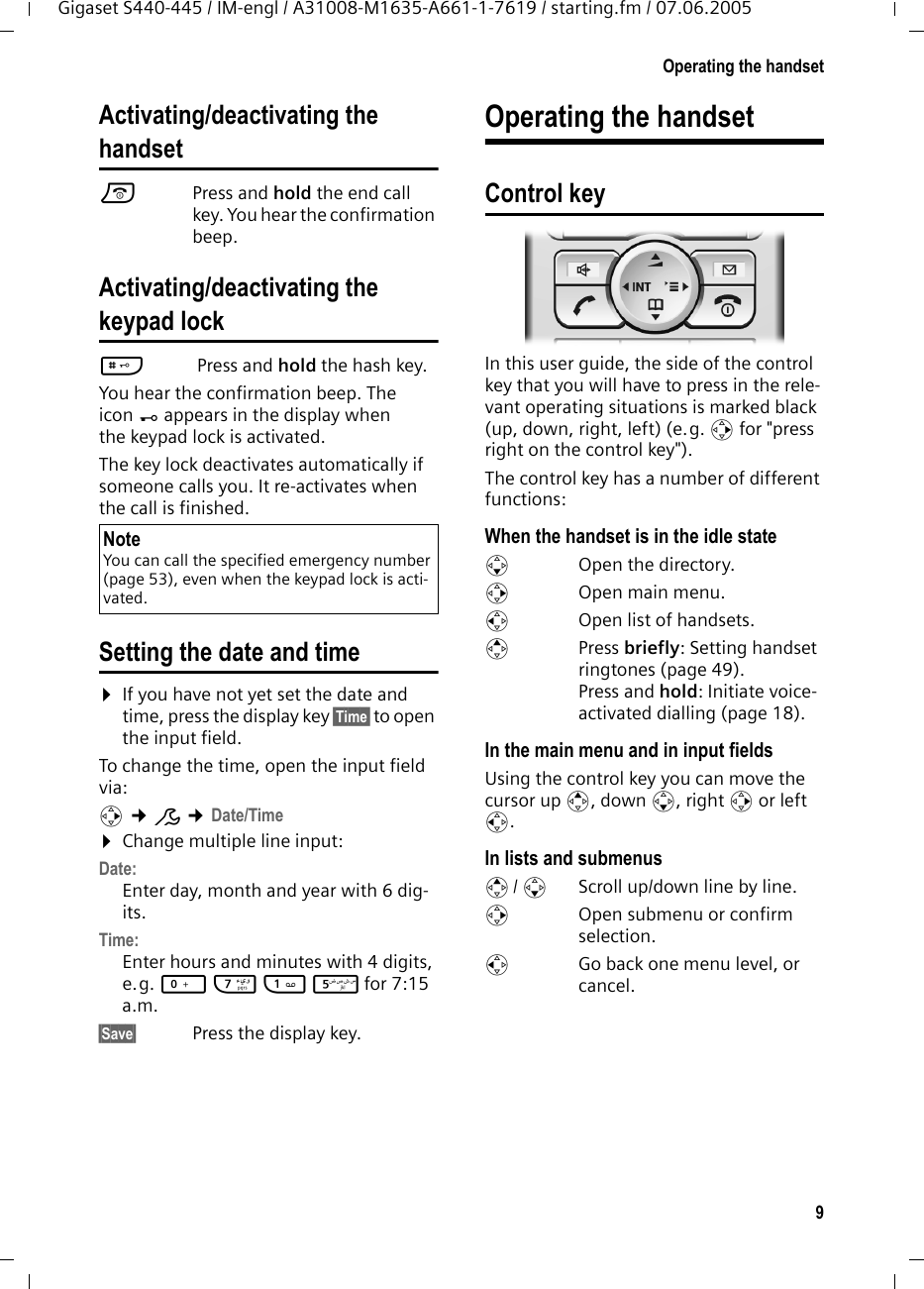
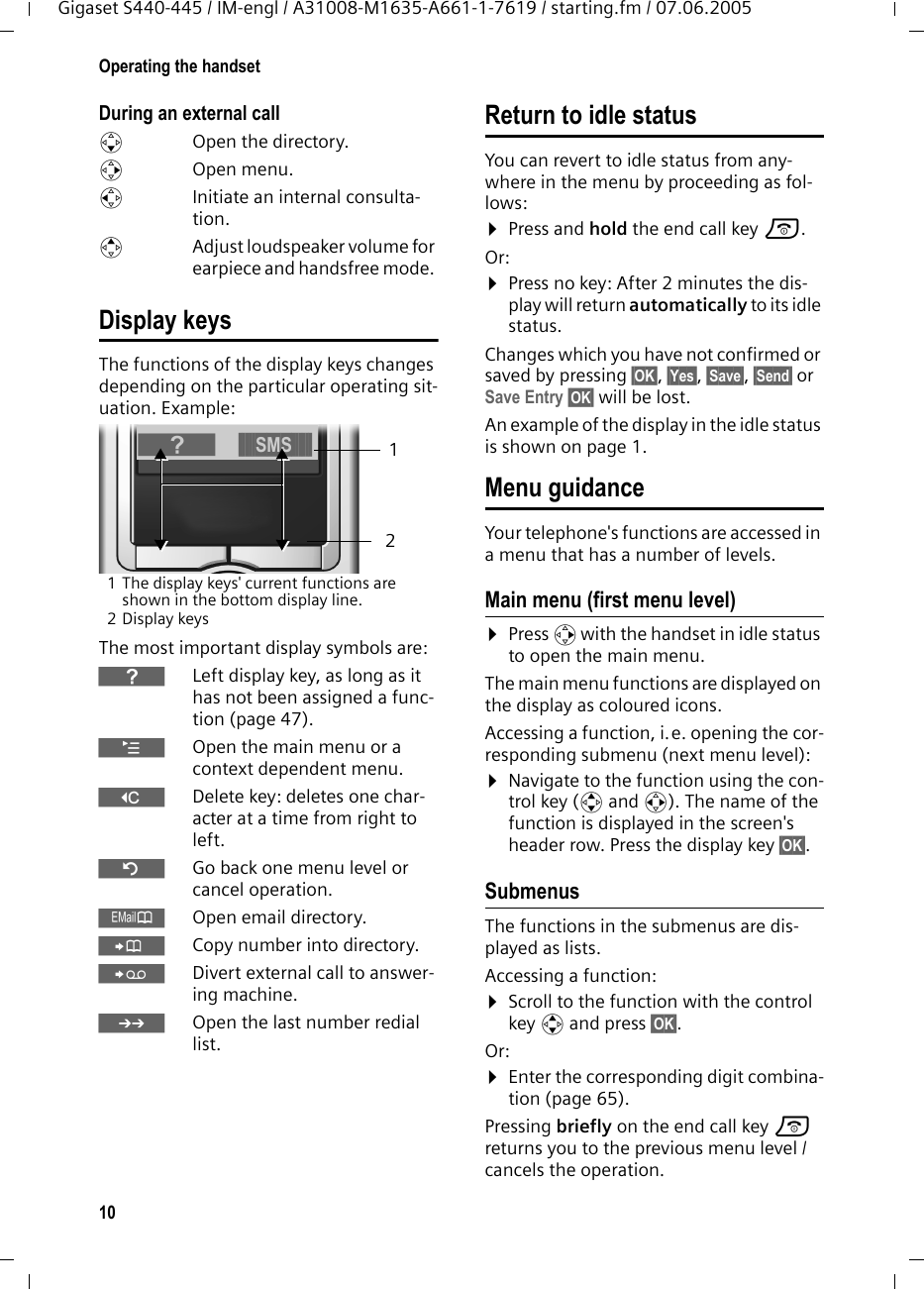
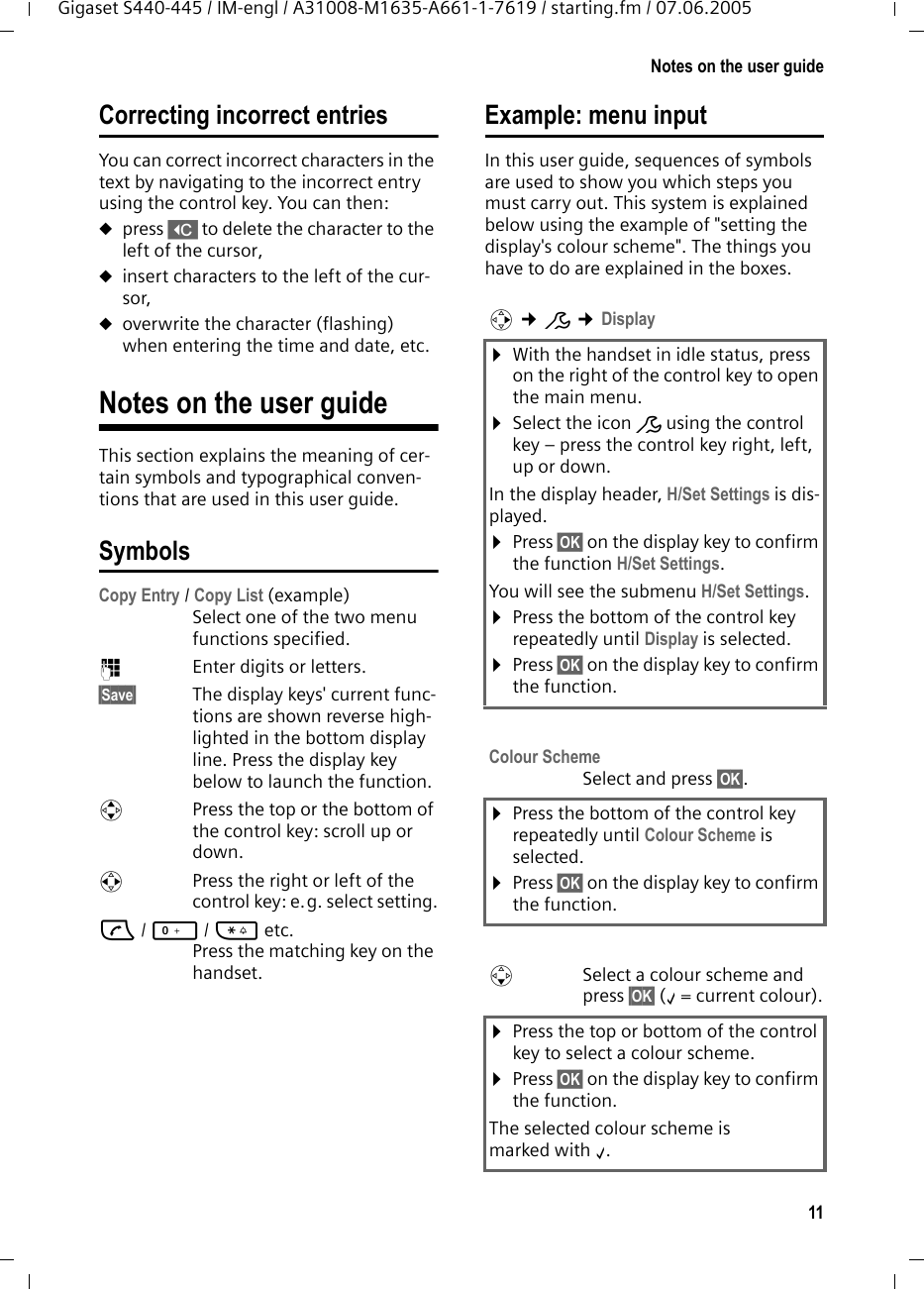
![12Notes on the user guideGigaset S440-445 / IM-engl / A31008-M1635-A661-1-7619 / starting.fm / 07.06.2005Example: multiple line input There are many situations in which you can change the settings of a display or enter data in several lines.In this user guide, sequences of symbols are used to show you multiple line input. This system is explained using the exam-ple of "storing appointments". The things you have to do are explained in the boxes.You will see the following displayed: aPress and hold press (idle sta-tus). ¤Press and hold the end call key until the handset returns to idle status.Appoint.:Select On or Off.¤Press right or left (r) on the control key to select On or Off.Date: Enter day/month in 4-digits format.¤Press the s key to move to the next line.The second line is marked with [ ] to show it is active.¤Enter the date using the digit keys.Appoint.: fOn gDate: 28.09Time: 11:11Notes: Appoint.Χ§Save§§Time:Enter hours/minutes in 4-digit format. ¤Press the s key.The third line is marked with [ ] to show it is active.¤Enter the date using the digit keys.Notes:Press the display key §Edit§. Enter text (max. of 16 characters) and press §OK§.¤Press the s key.The fourth line is marked with < > to show it is active.¤Press the display key §Edit§ to open the input field. Enter the text (page 63).¤Press the display key §OK§.¤Save changes.You will see the ¼ icon.¤Press the display key §Save§.¤Always subsequently press and hold the a key.The handset will change to idle status and display the icon ¼.](https://usermanual.wiki/Siemens-Information-and-Communication-Mobile/S445.Users-Manual-Addendum/User-Guide-594585-Page-13.png)
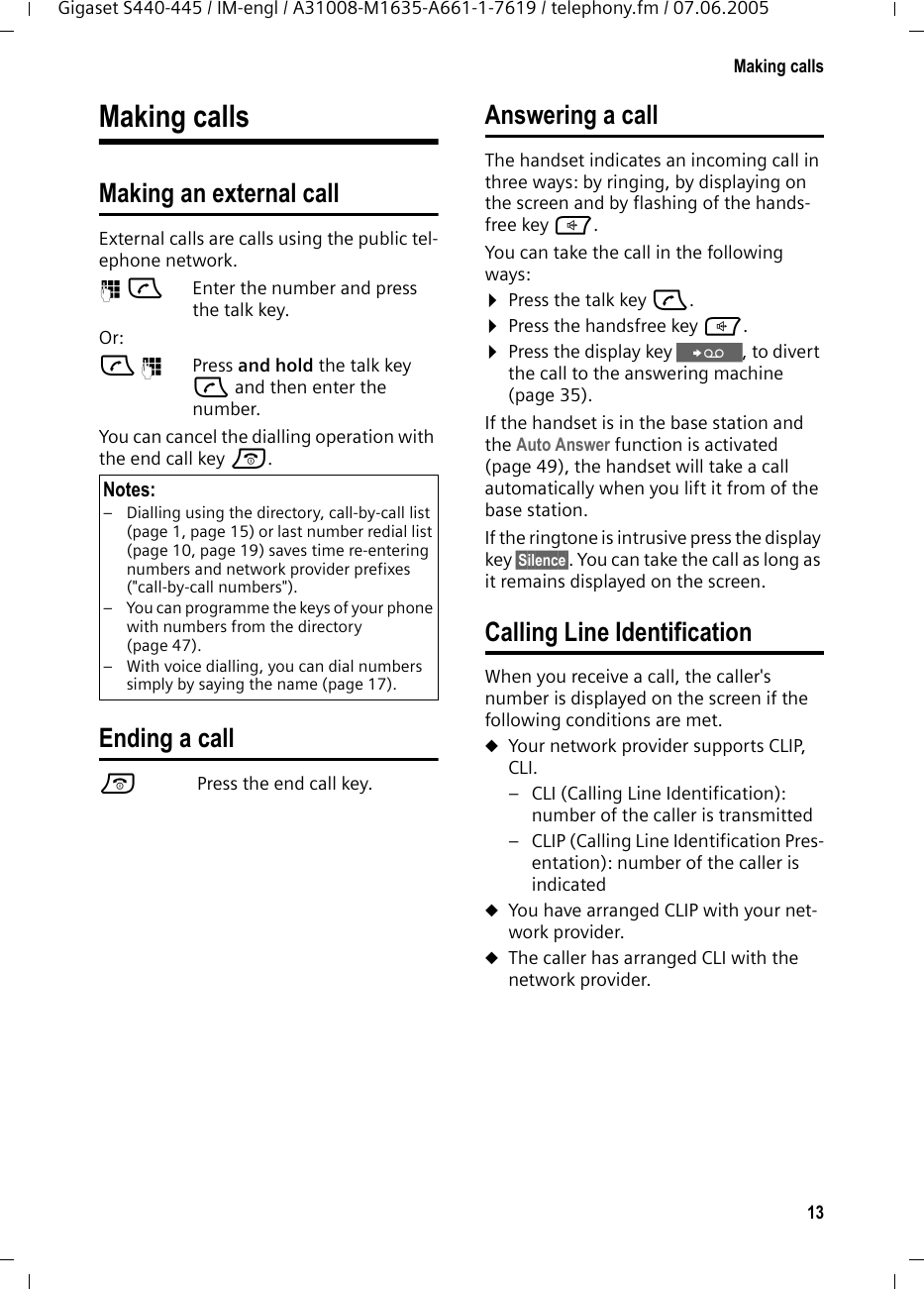
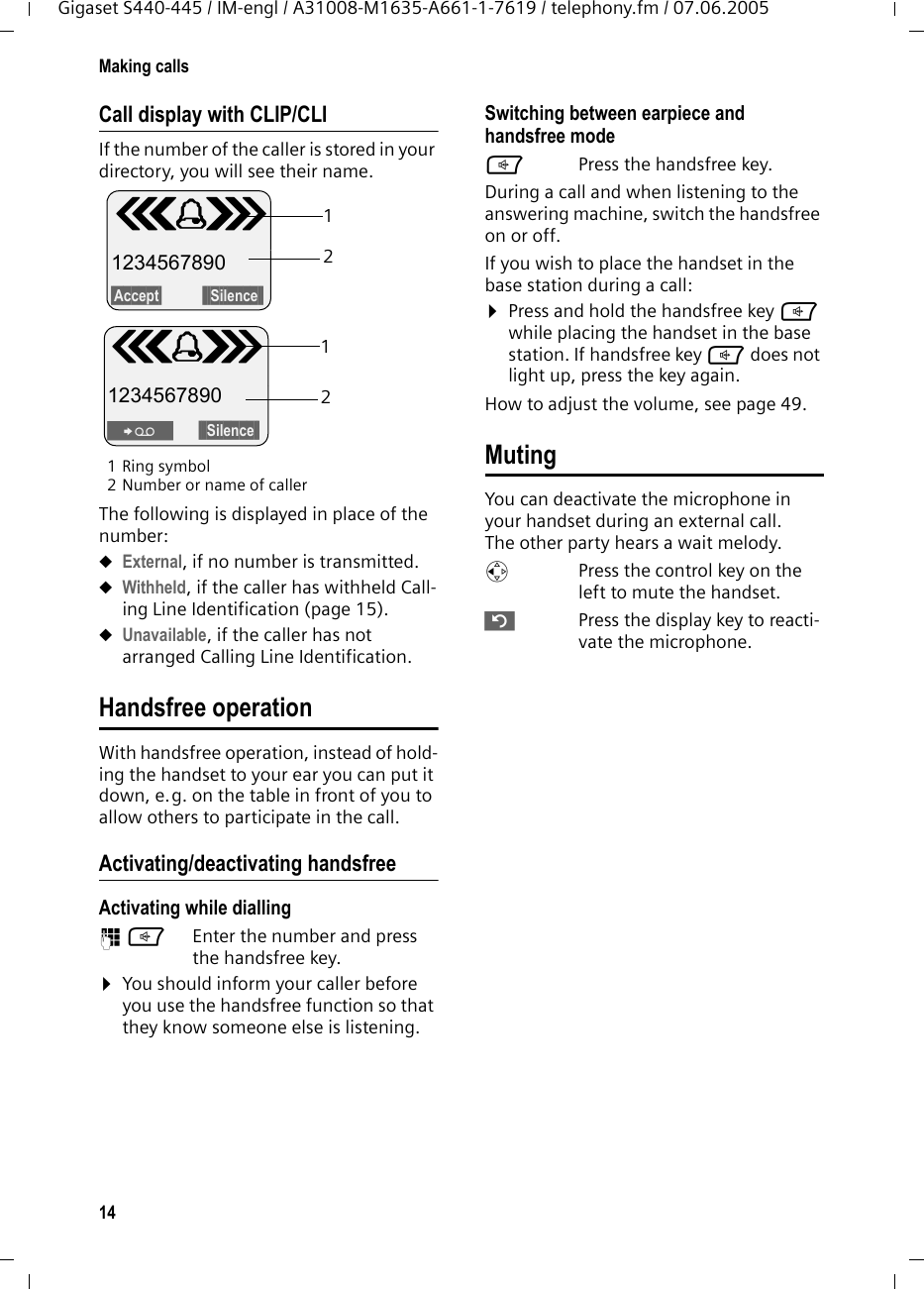
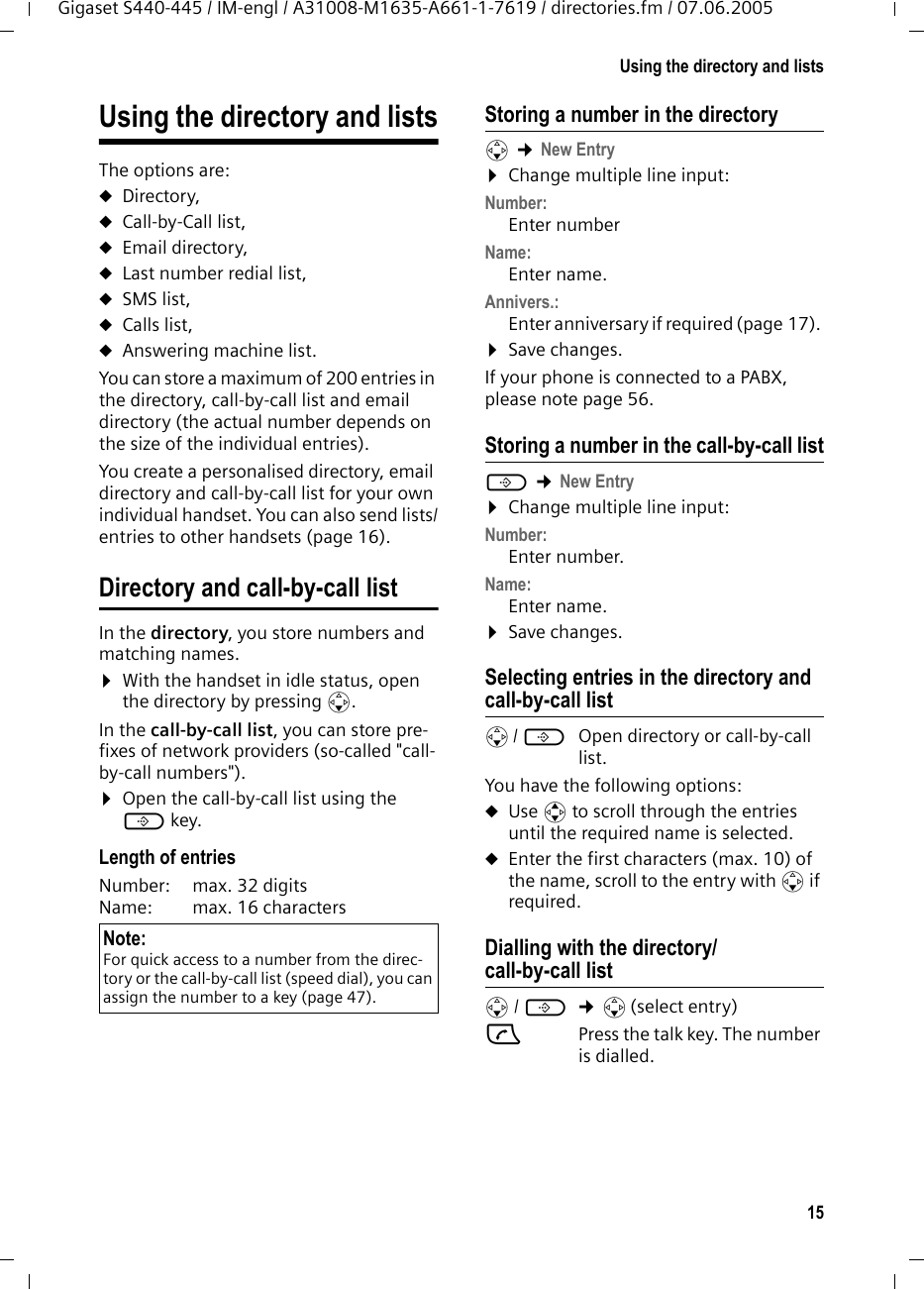
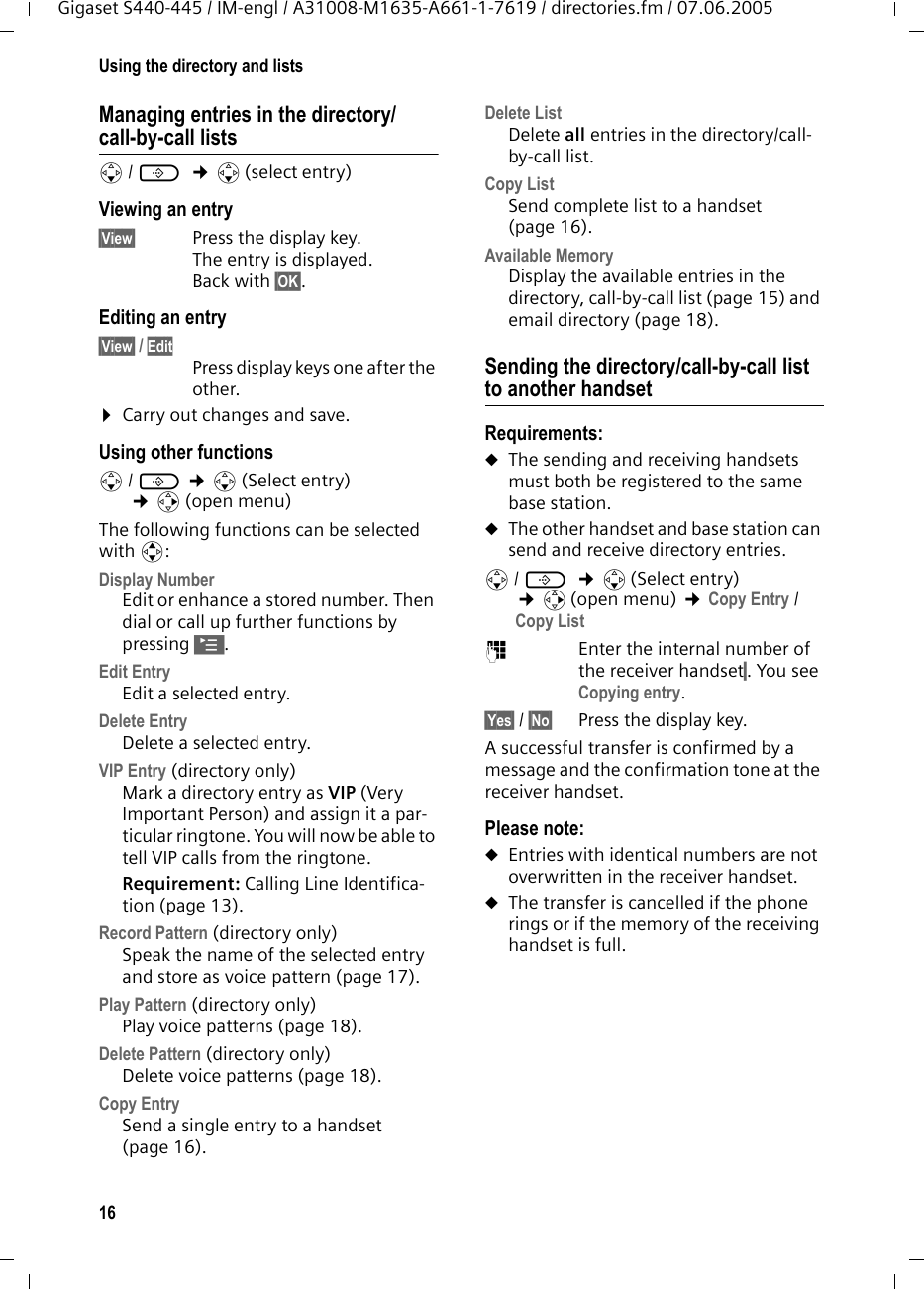
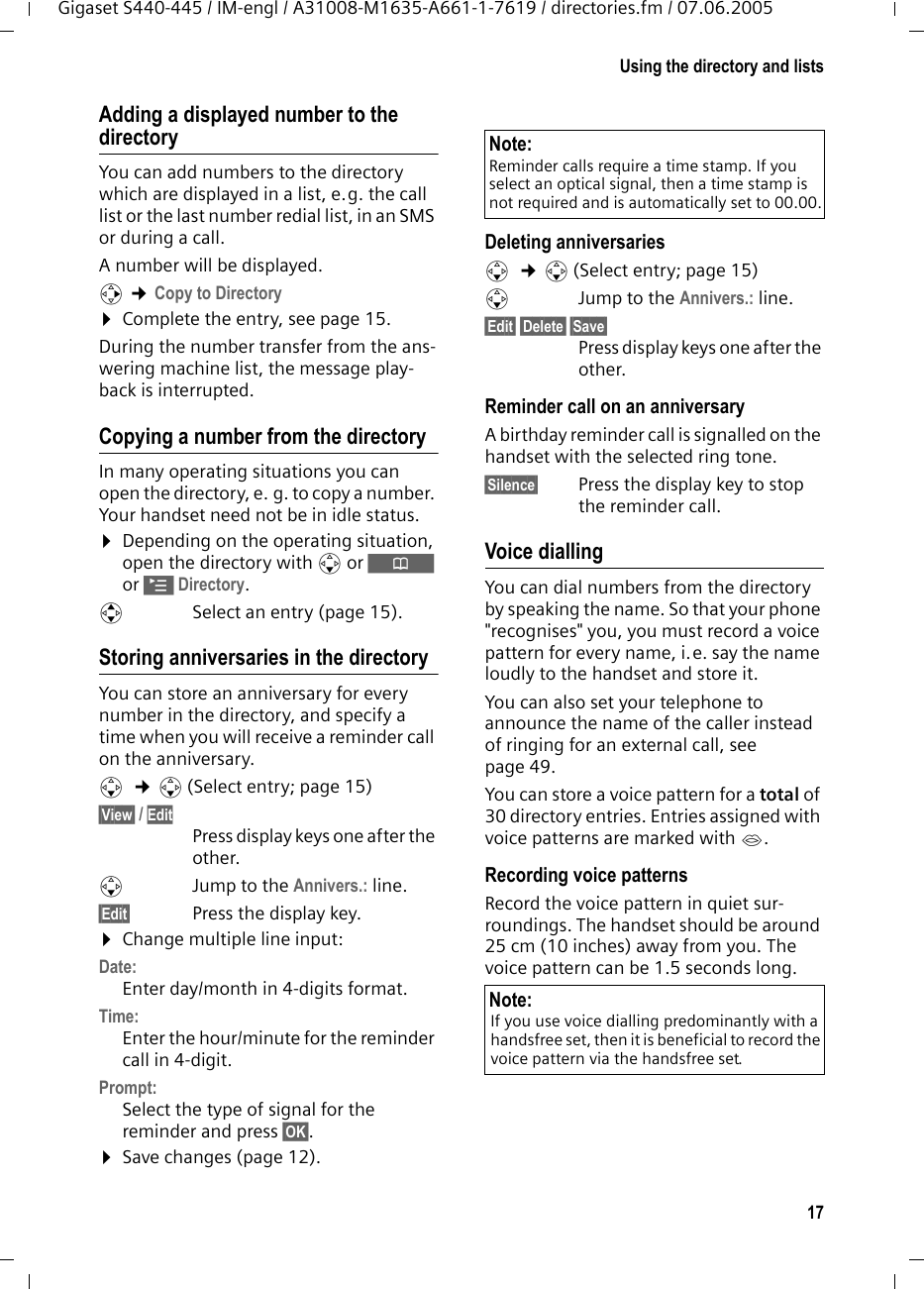
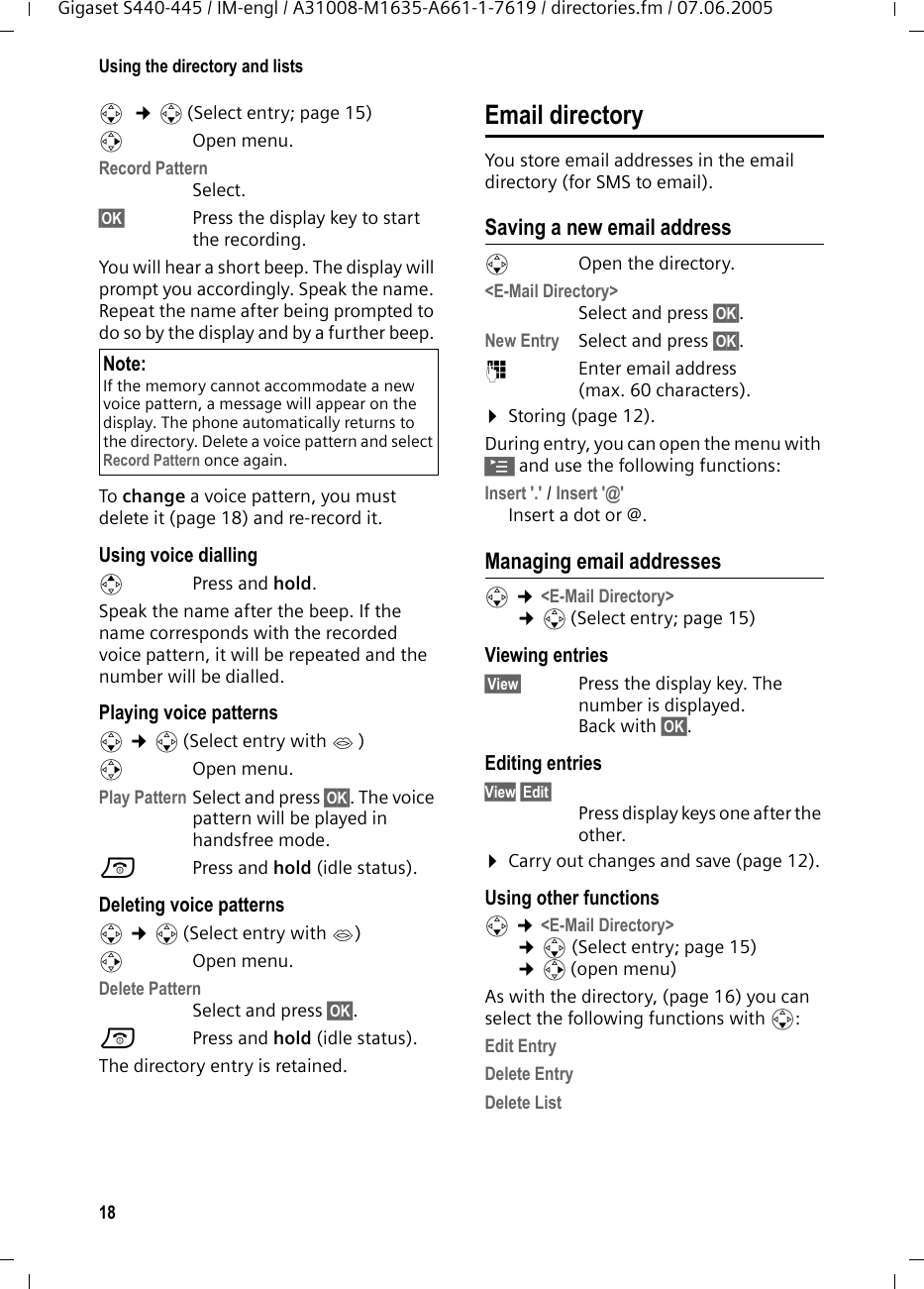
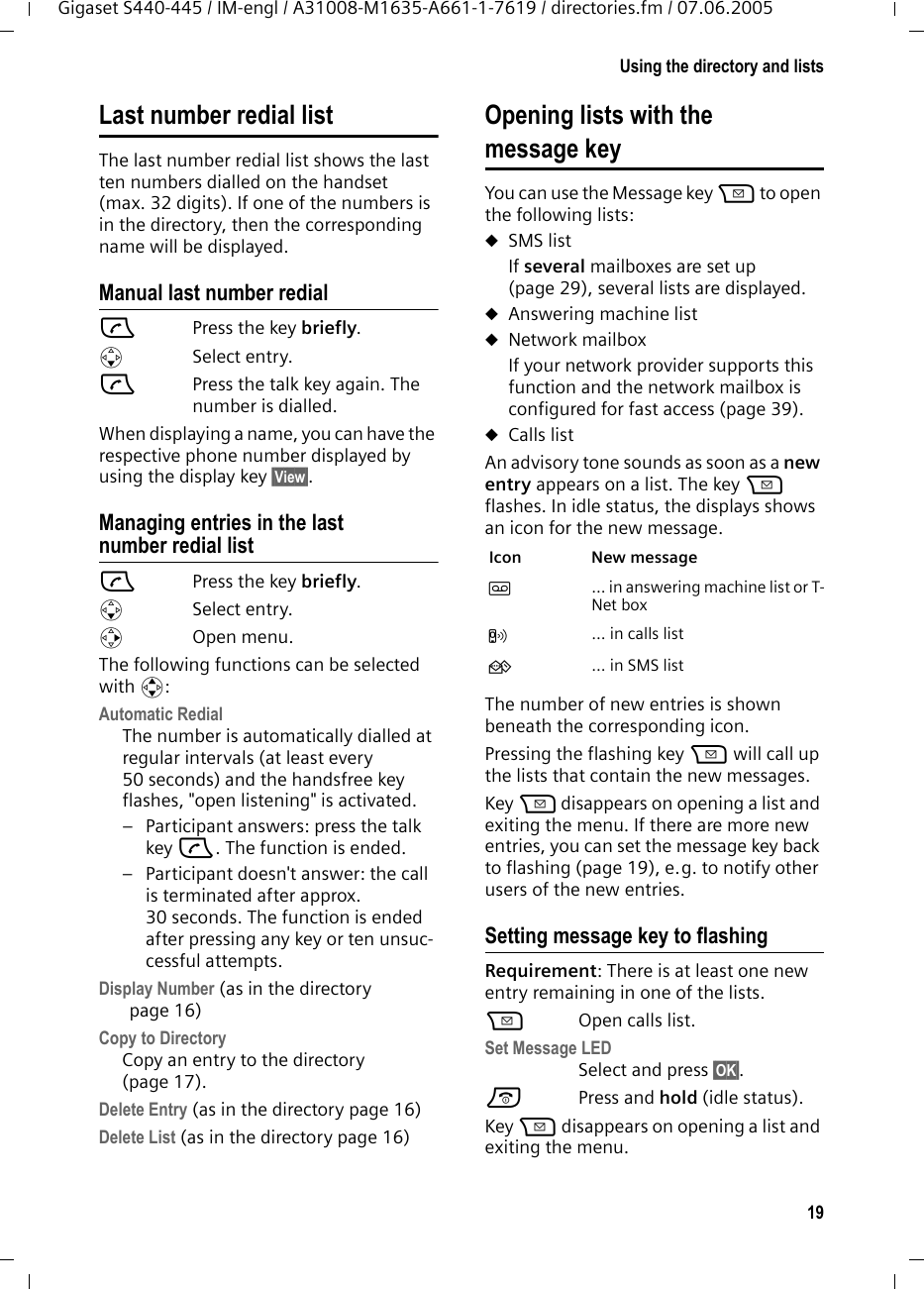
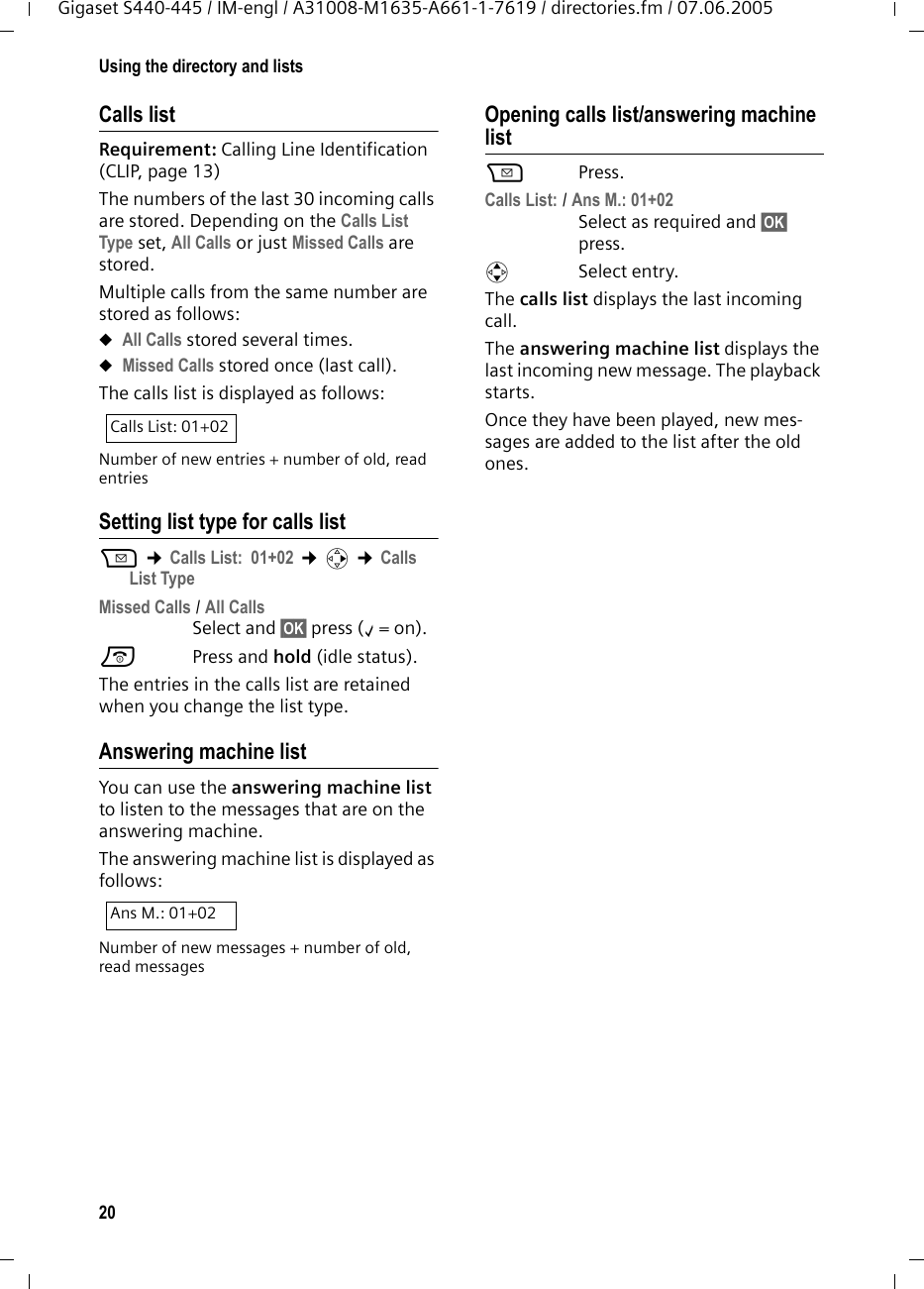
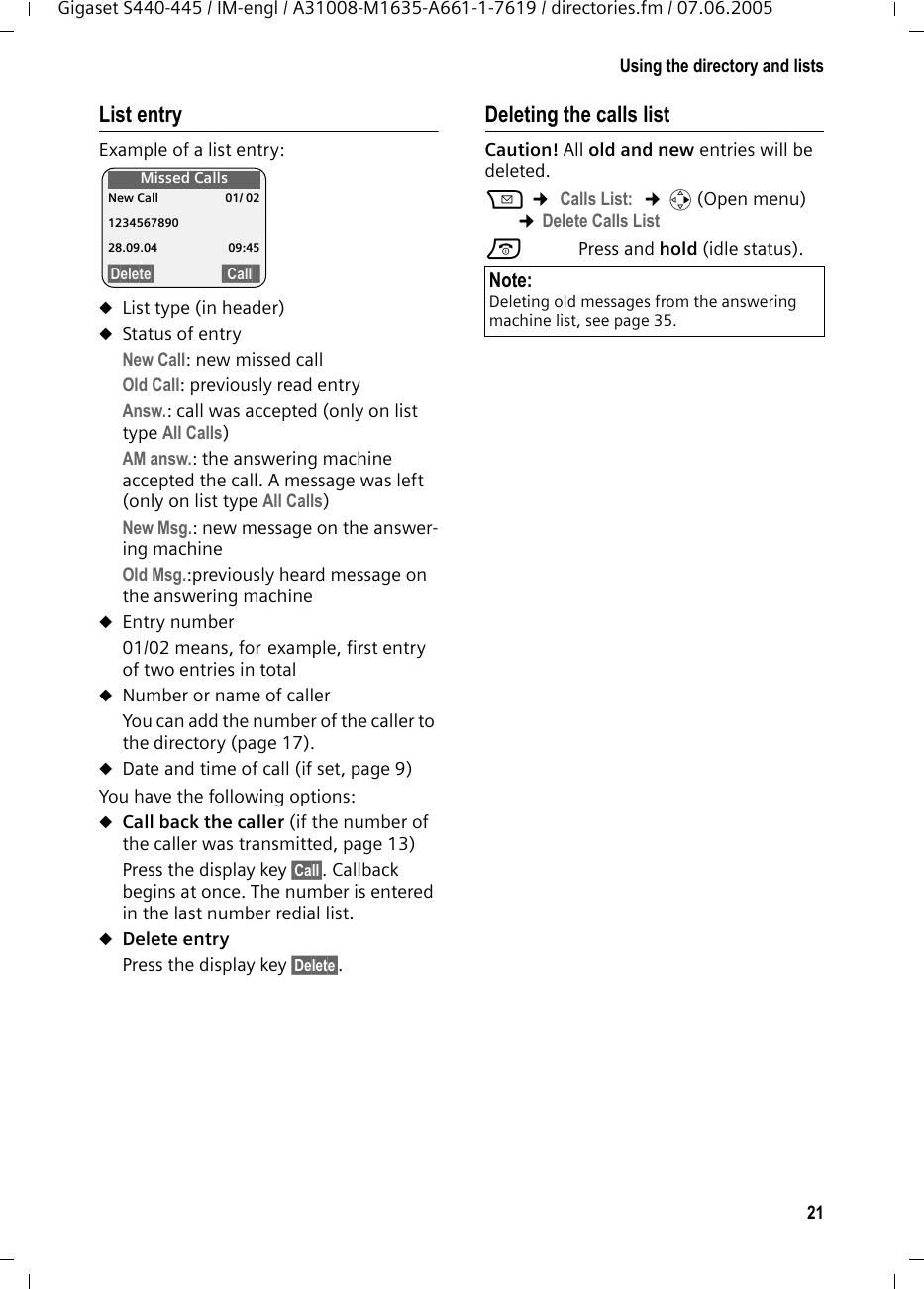
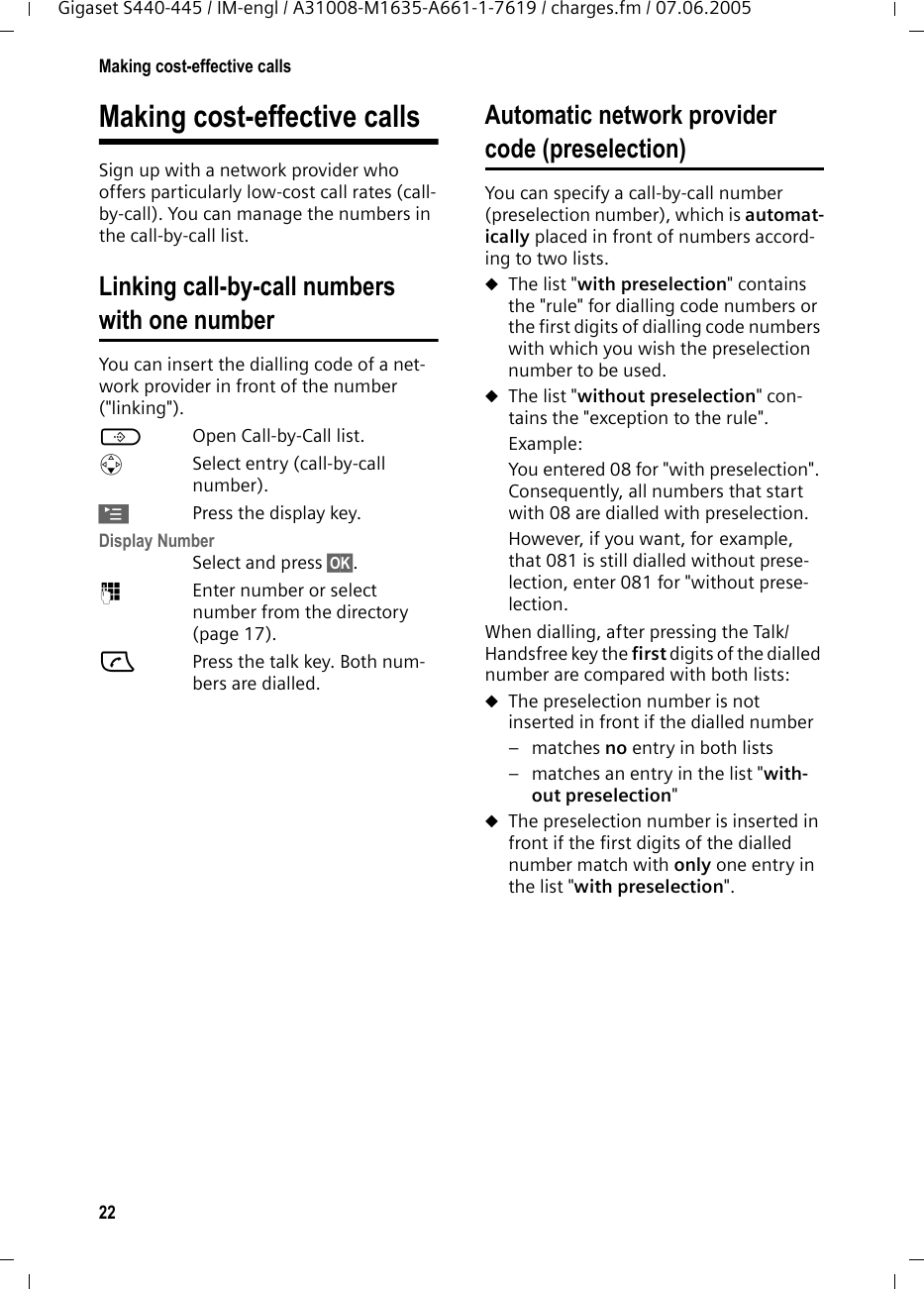
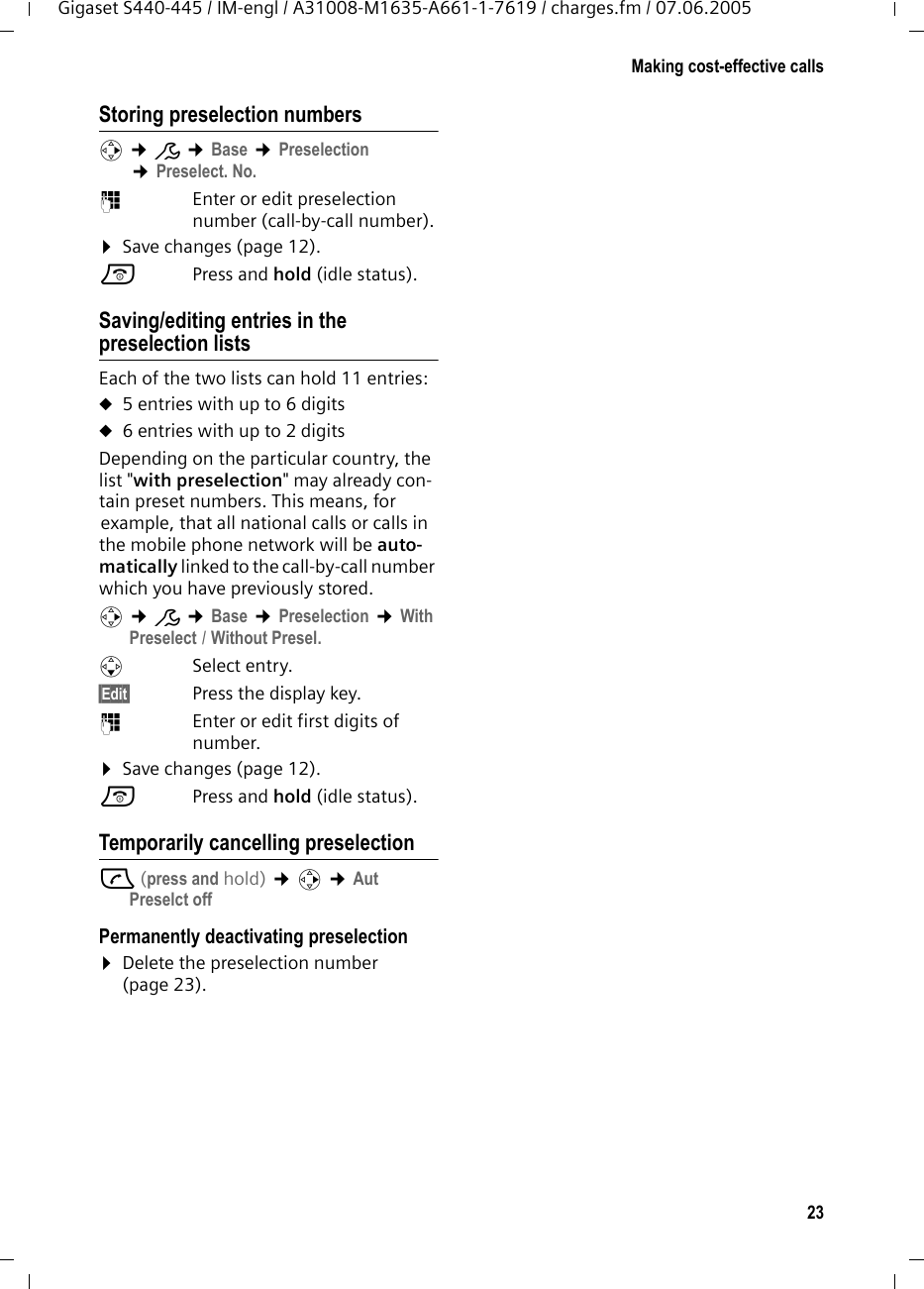
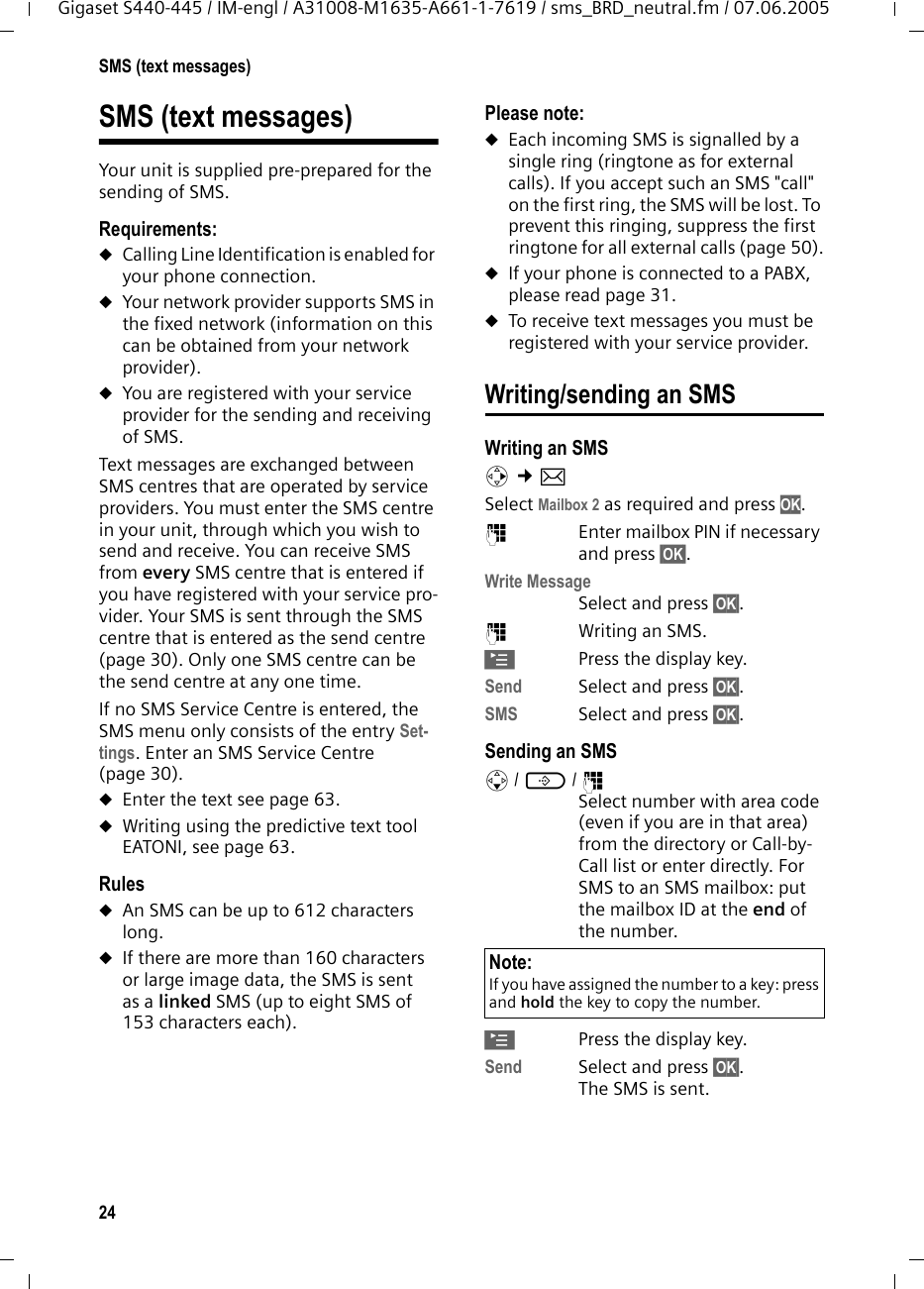
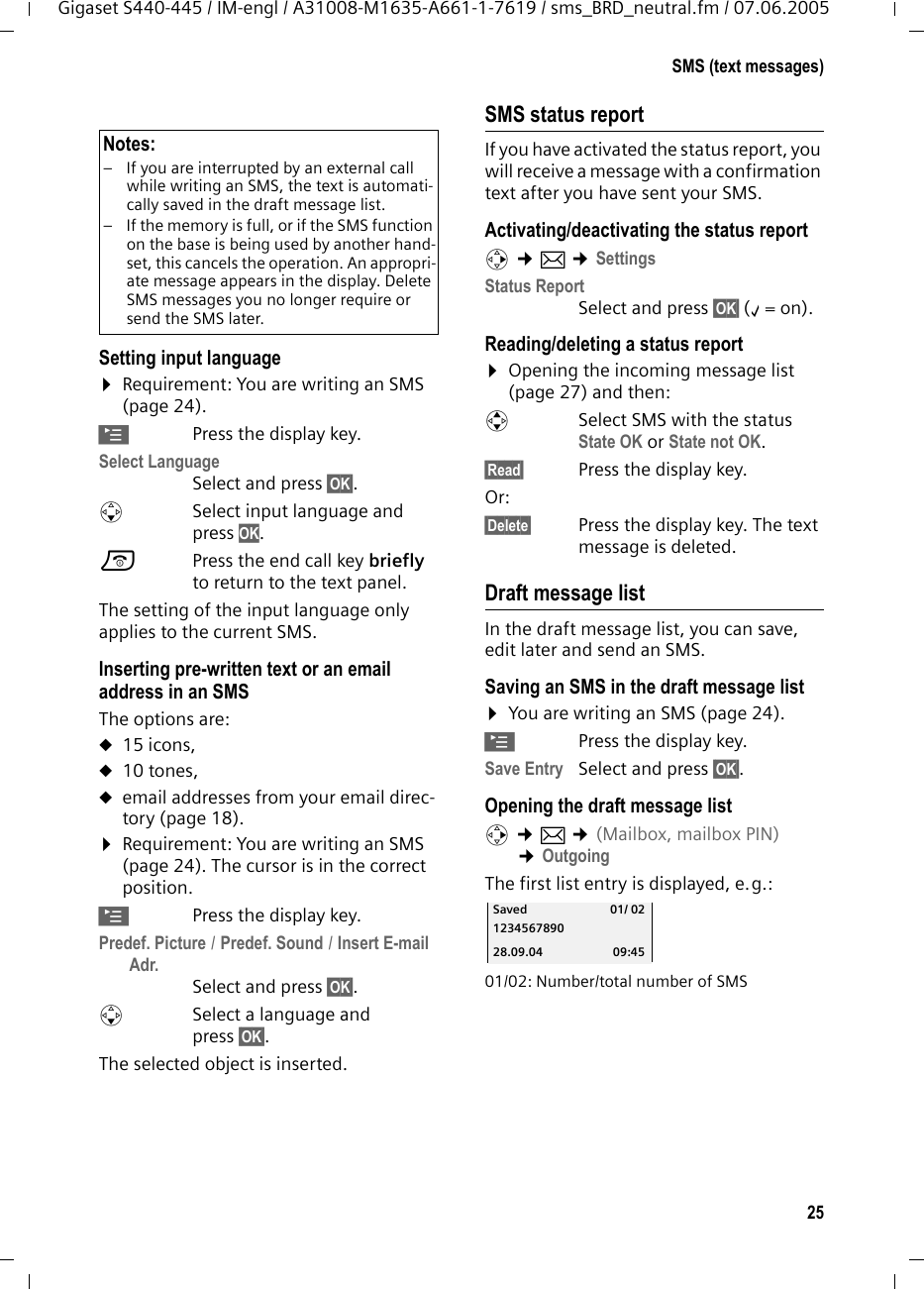
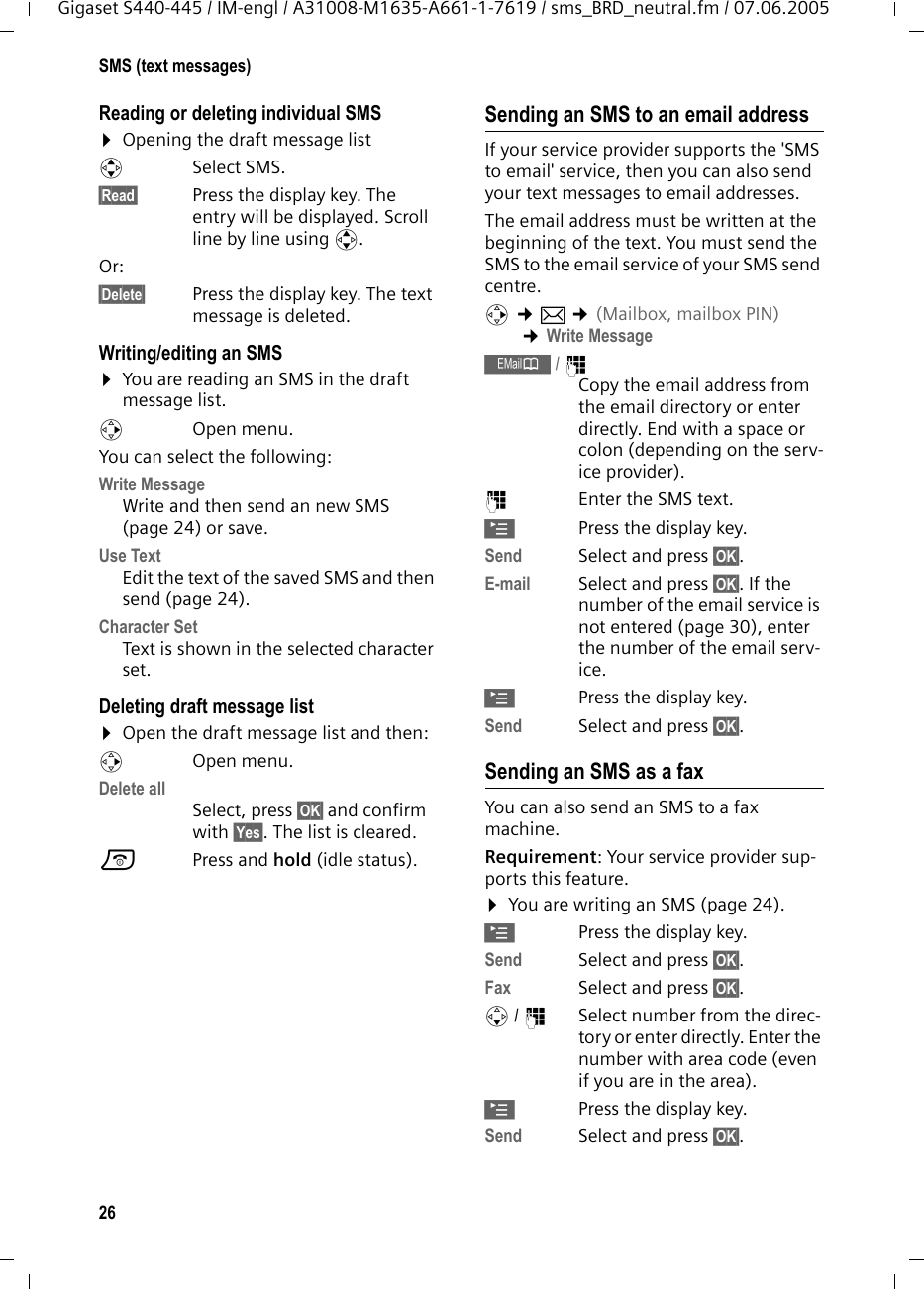
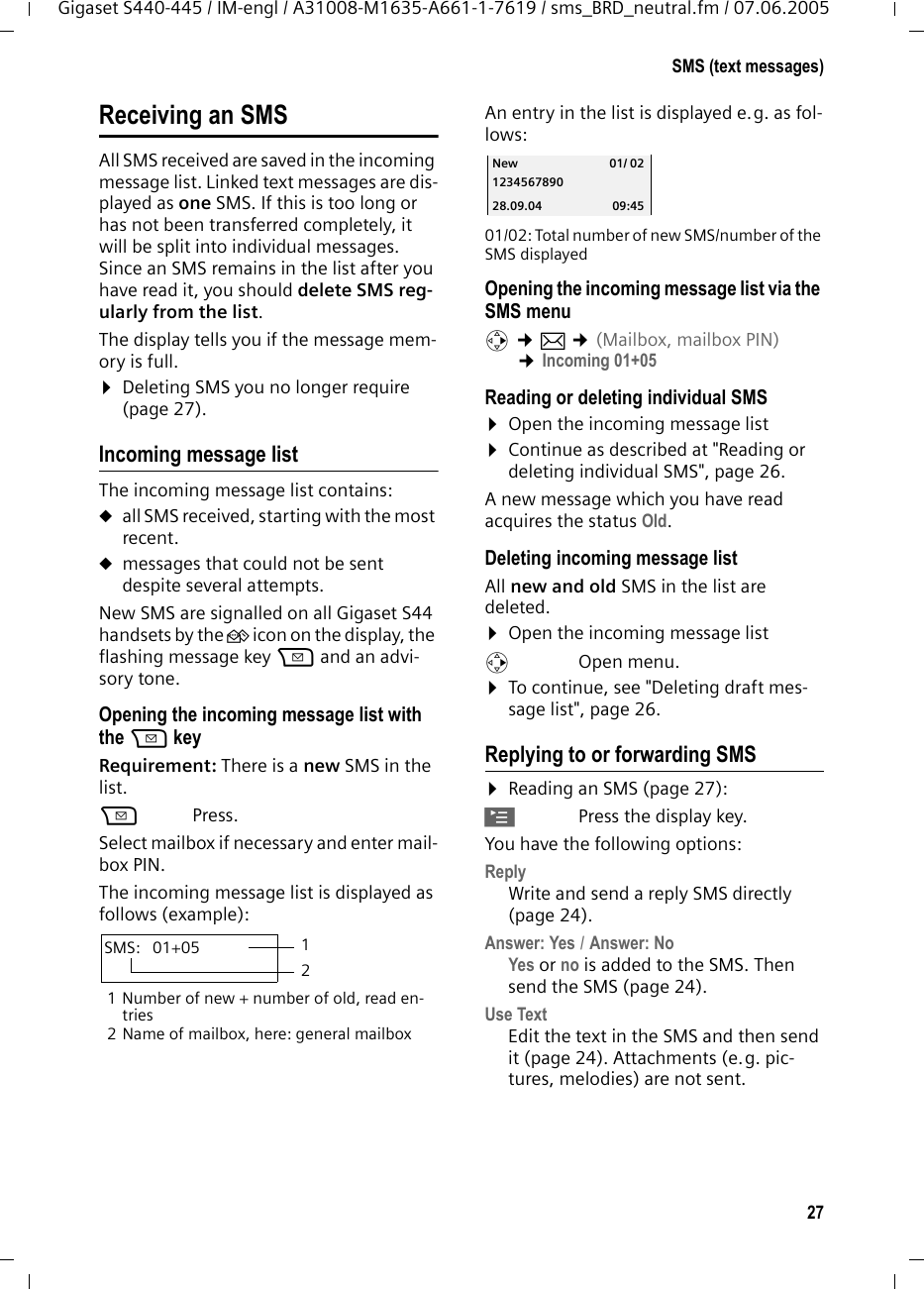
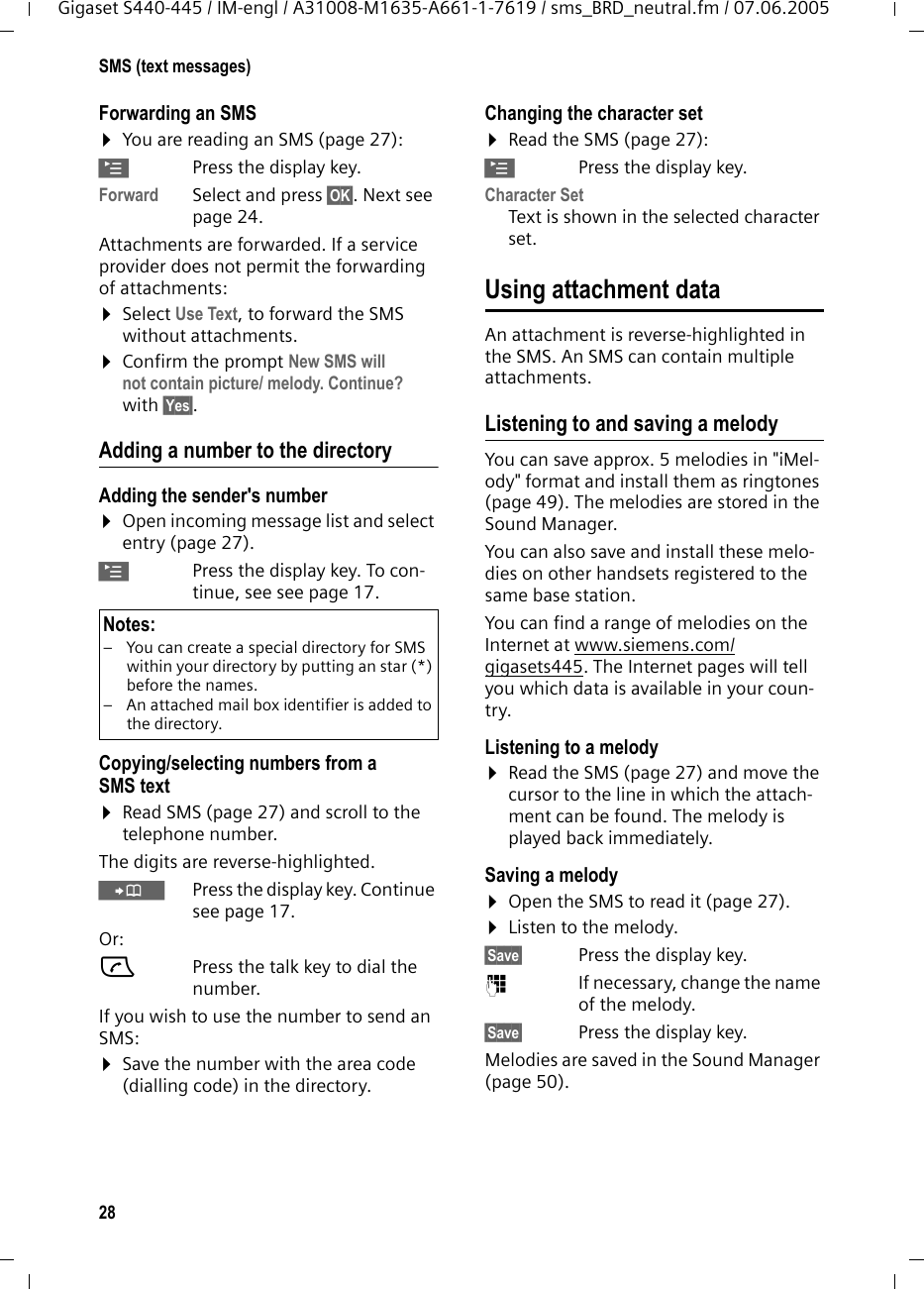
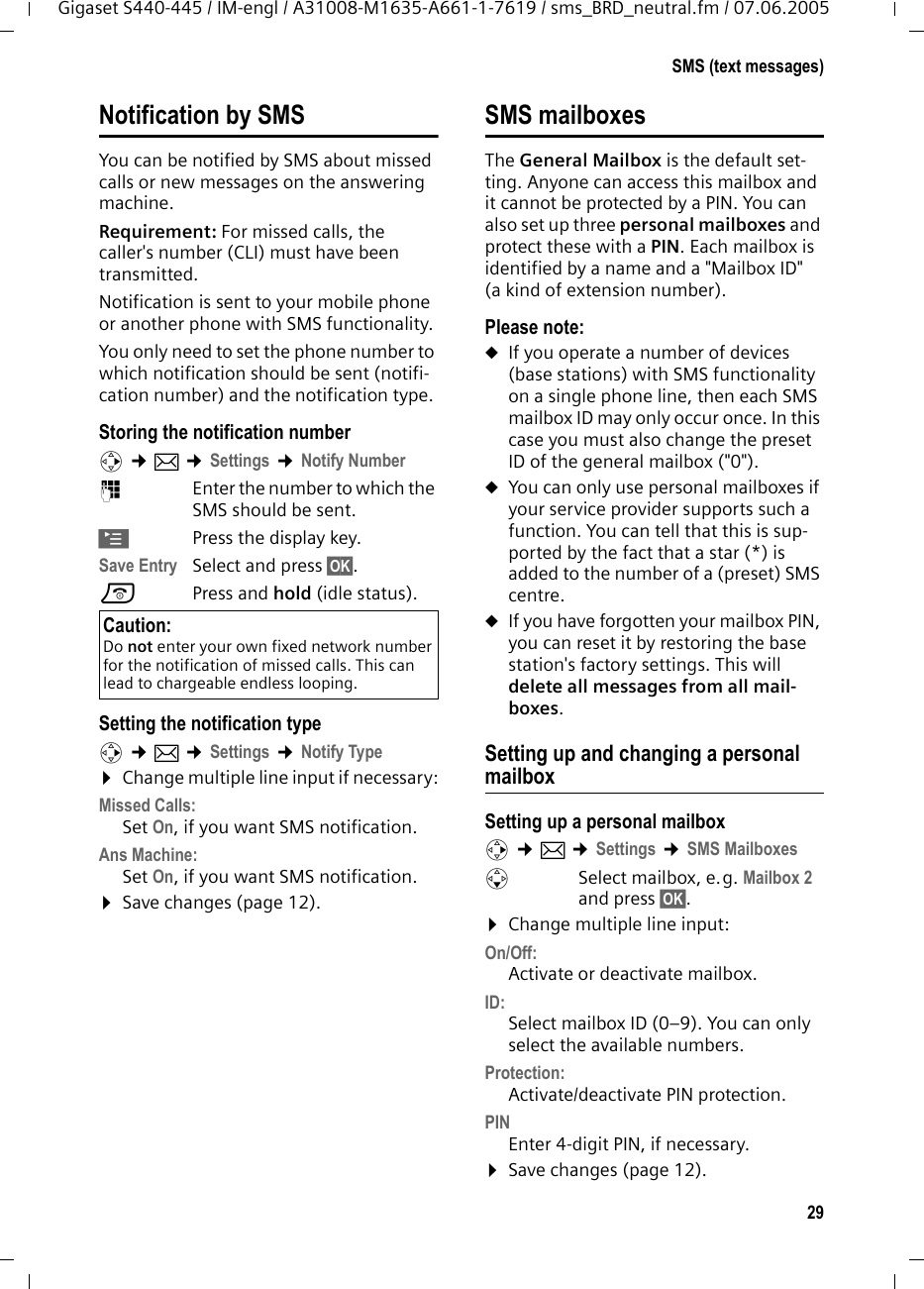
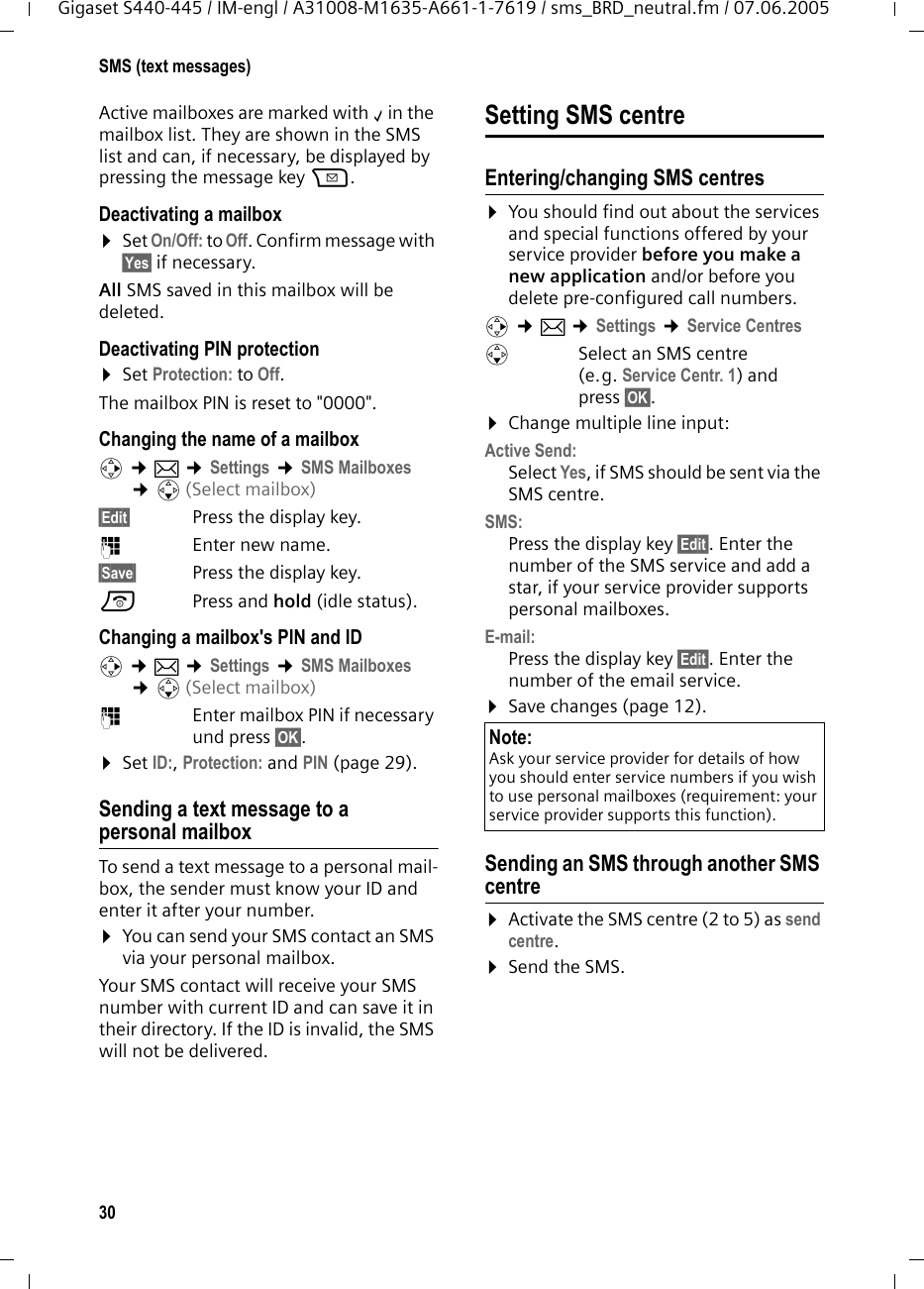
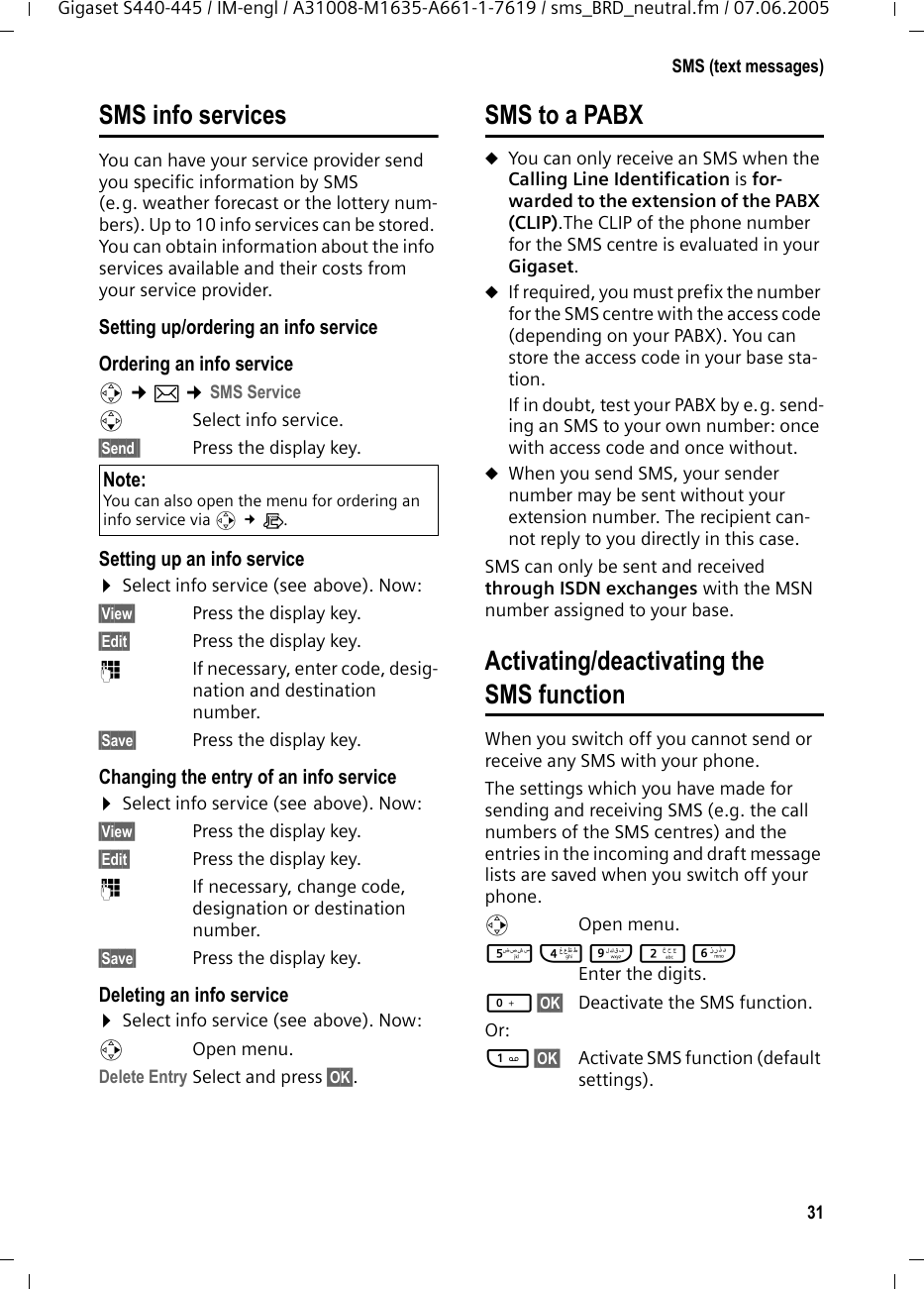
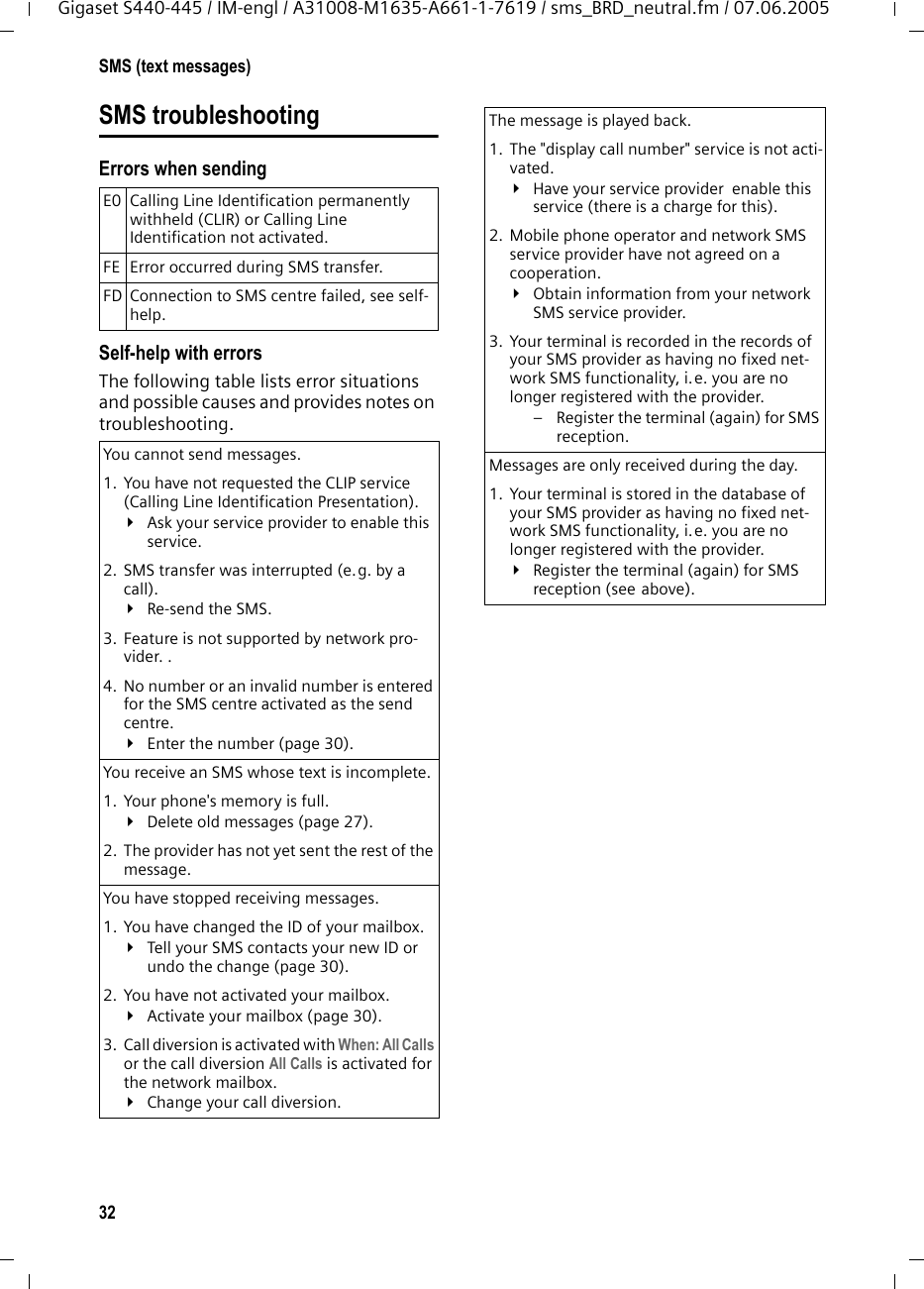
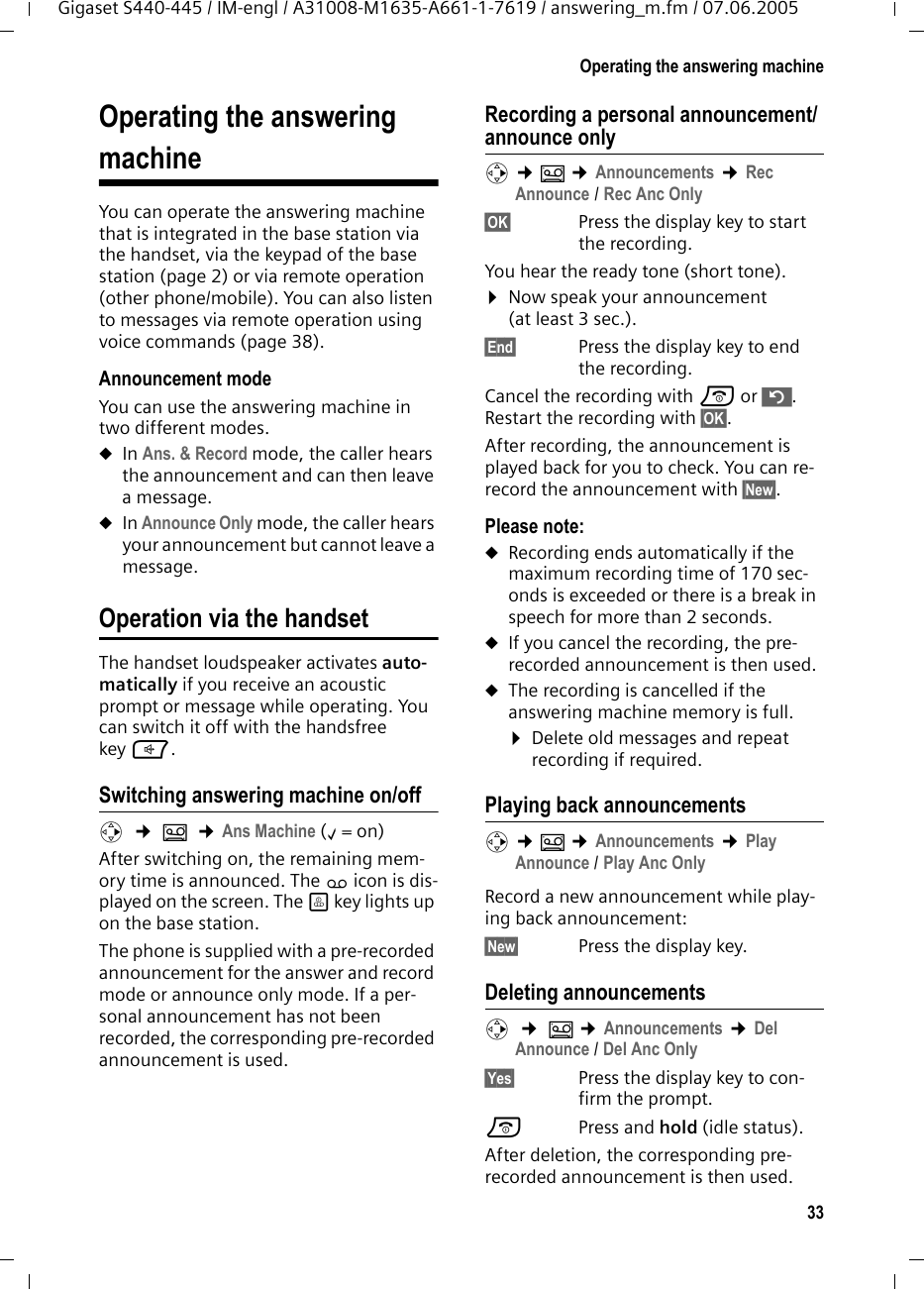
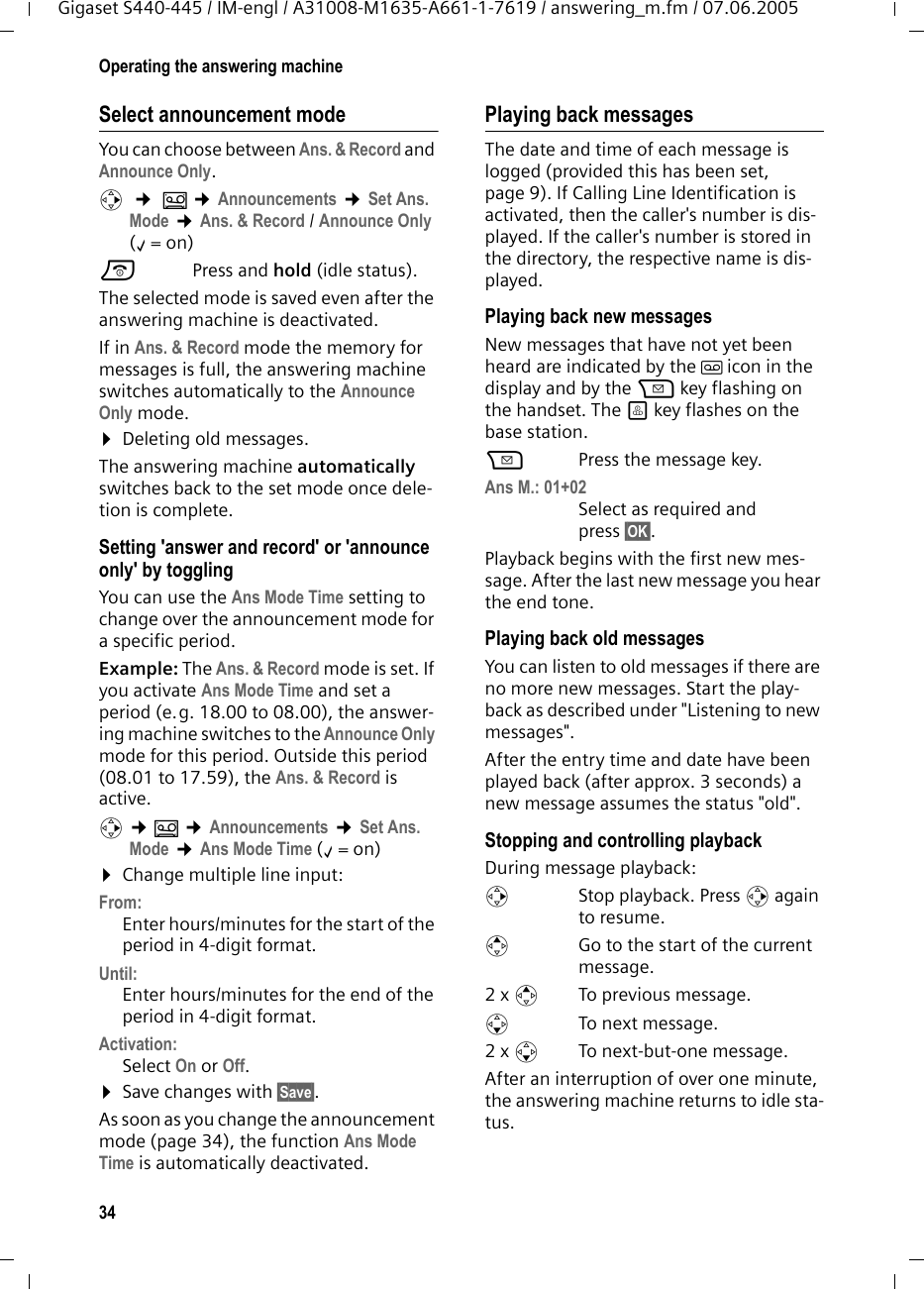
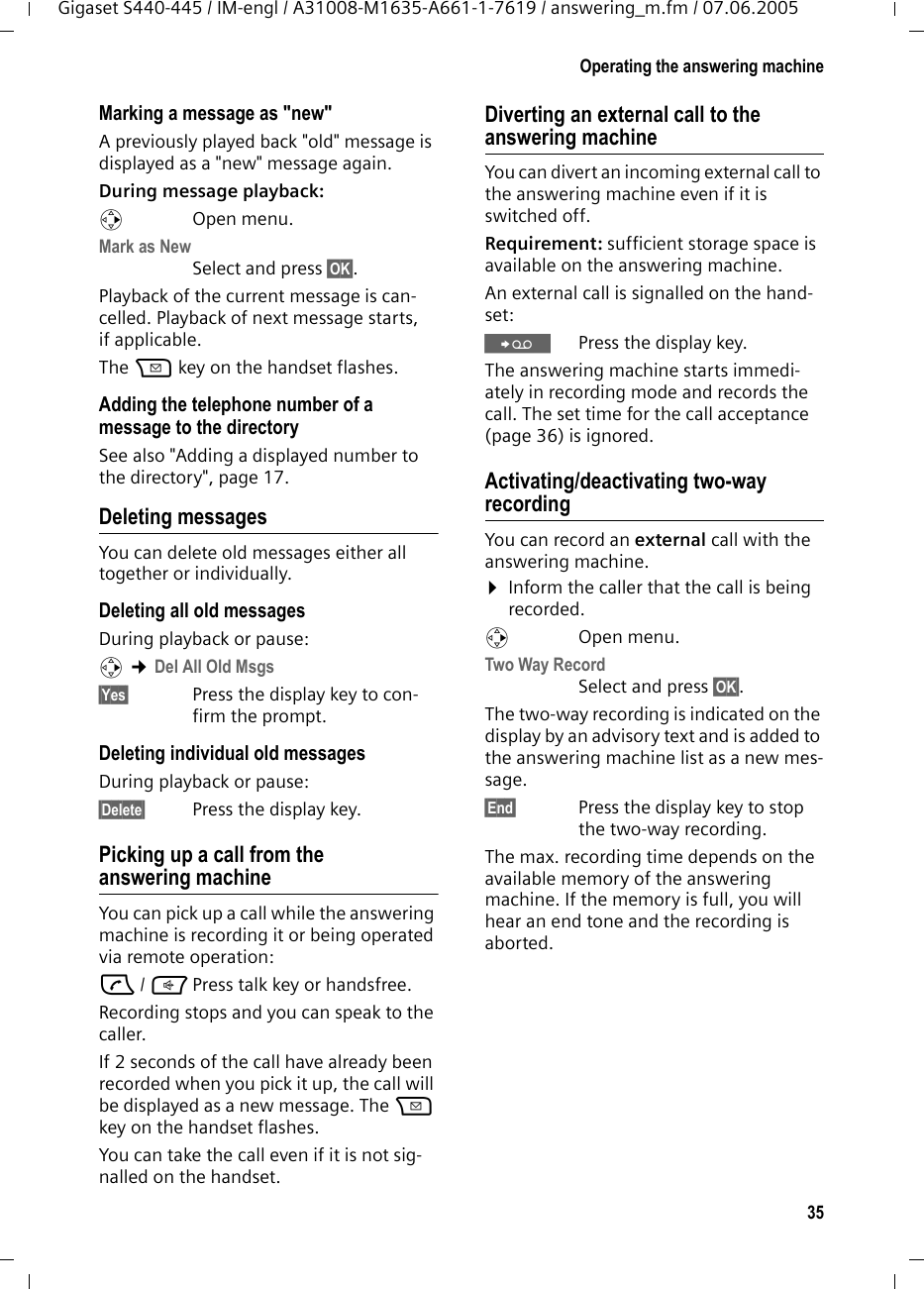
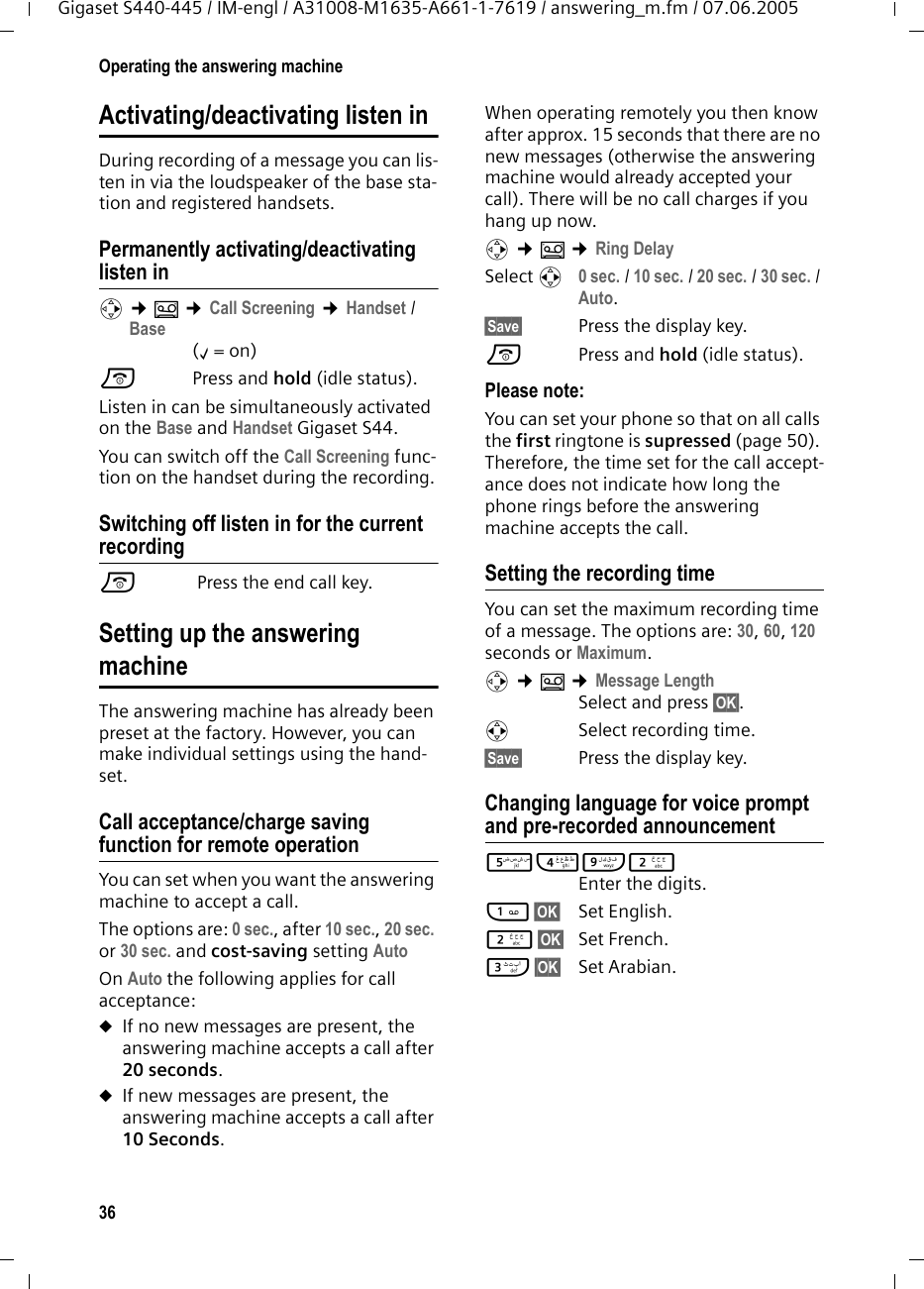
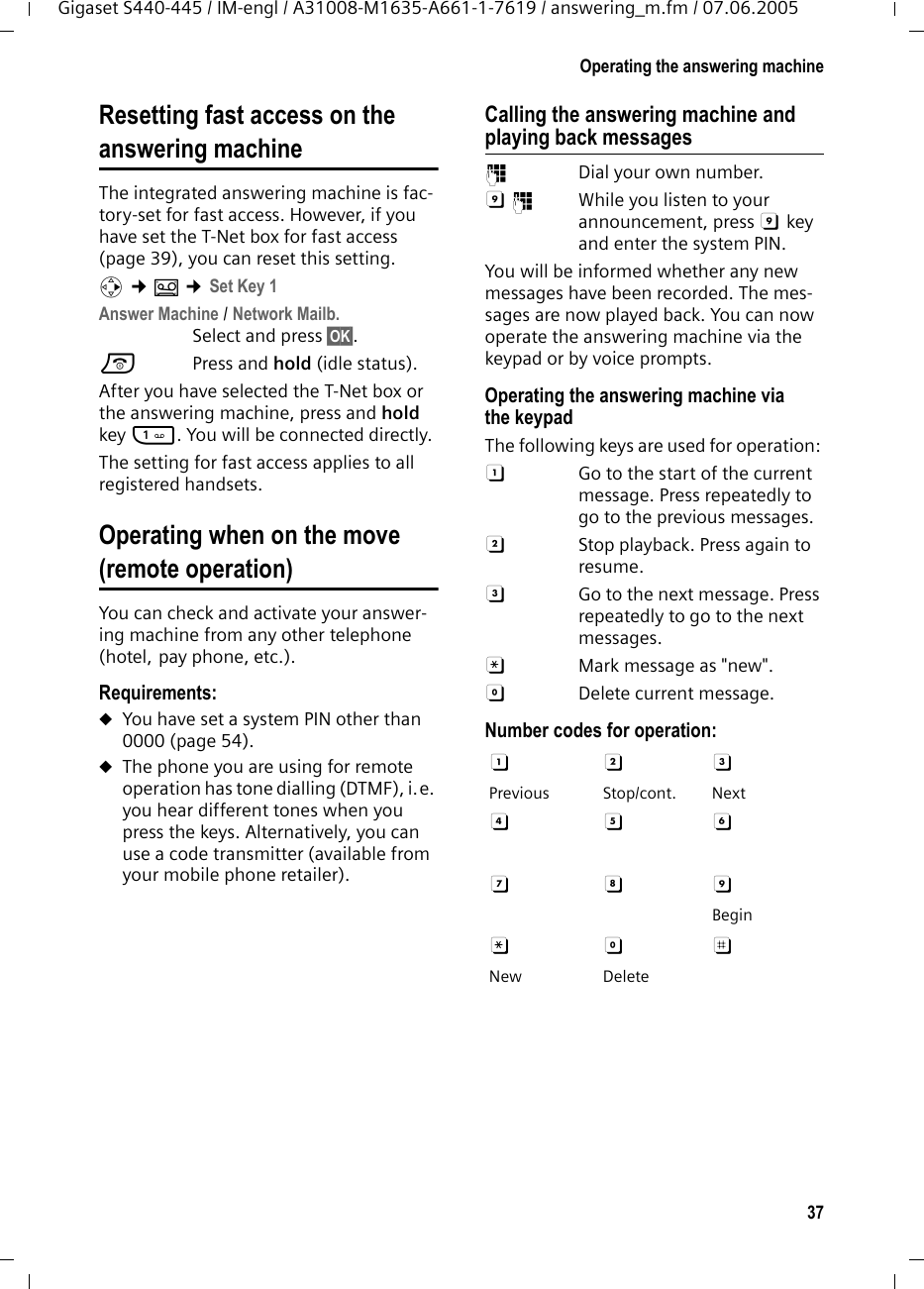
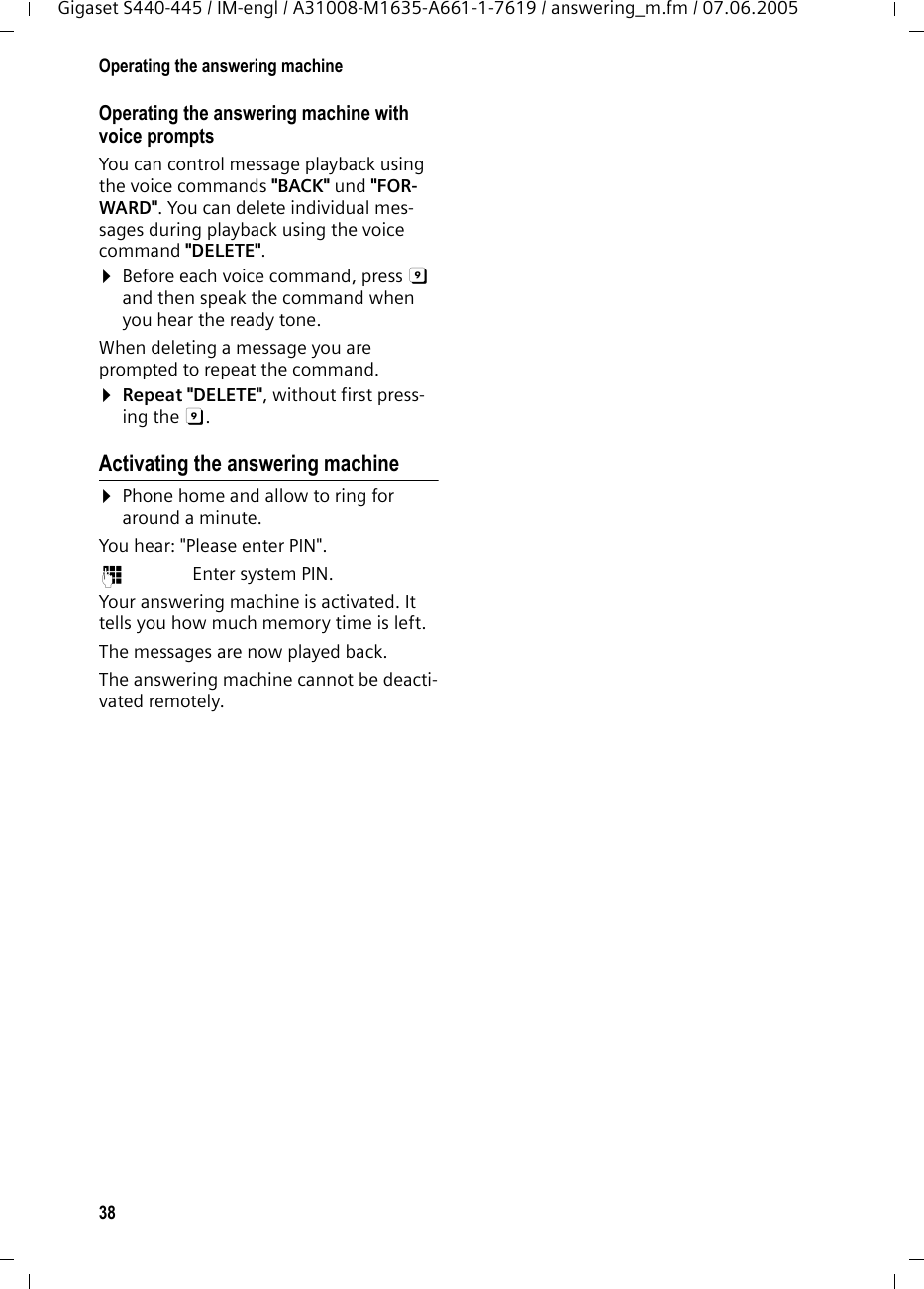
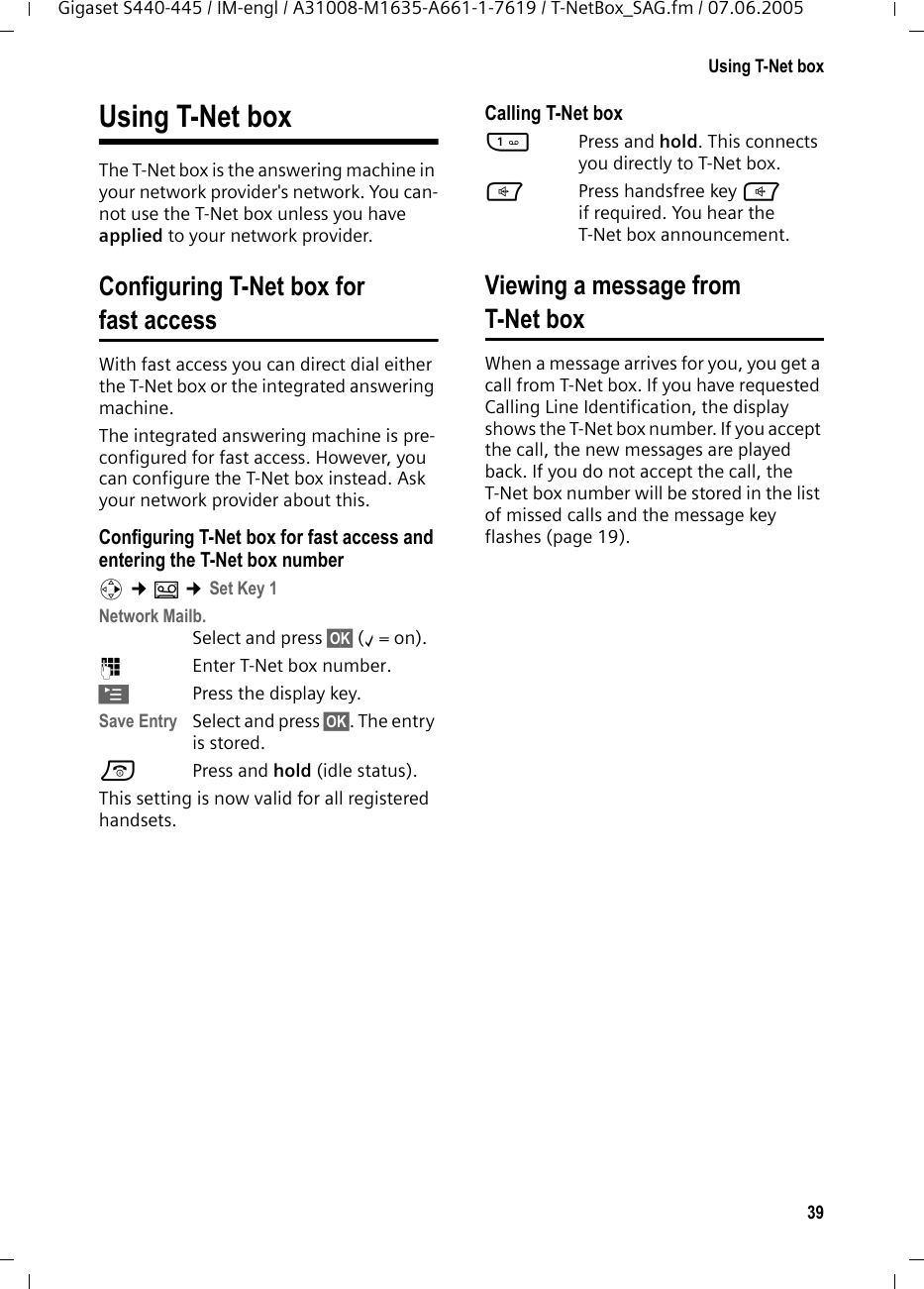
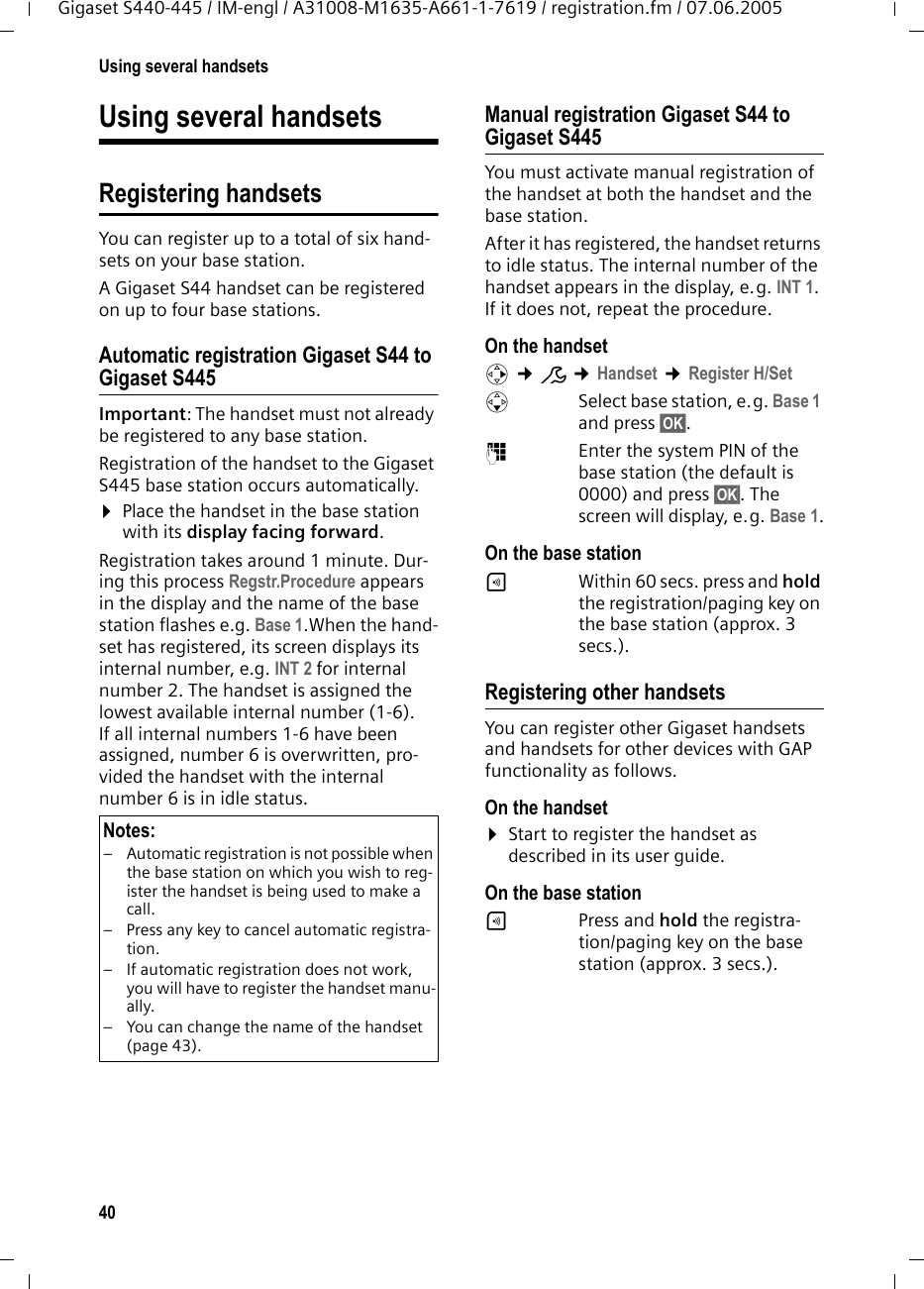
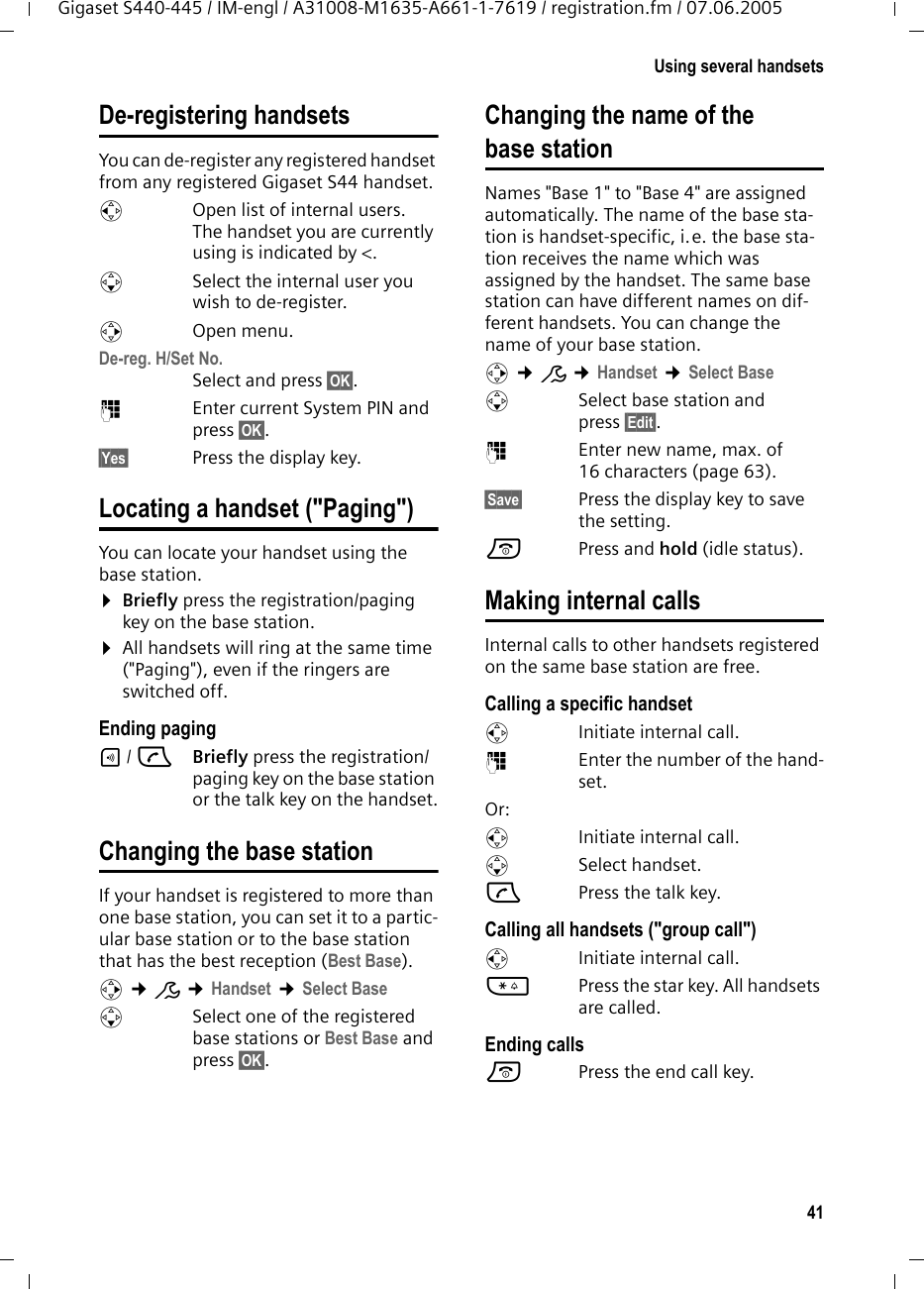
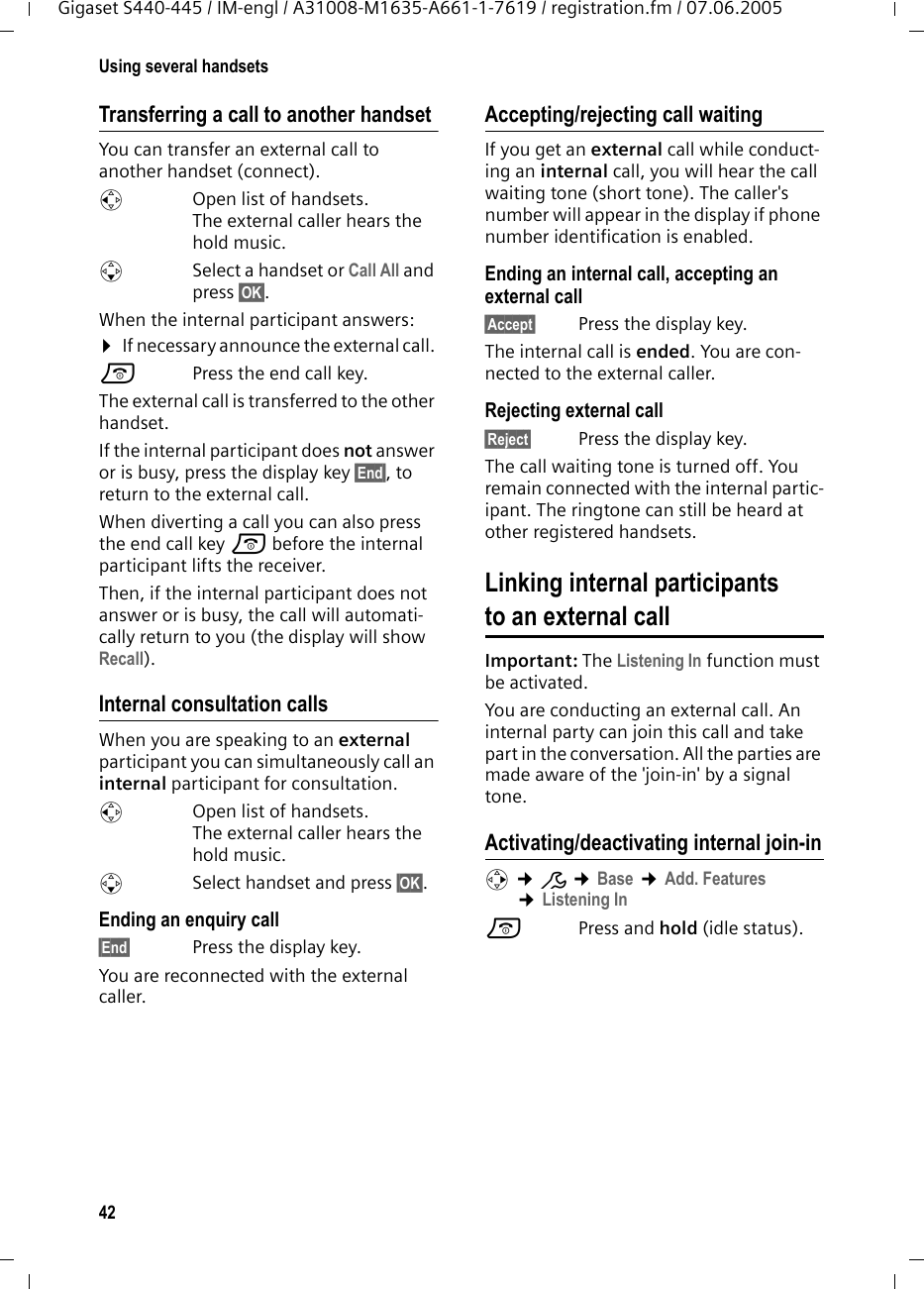
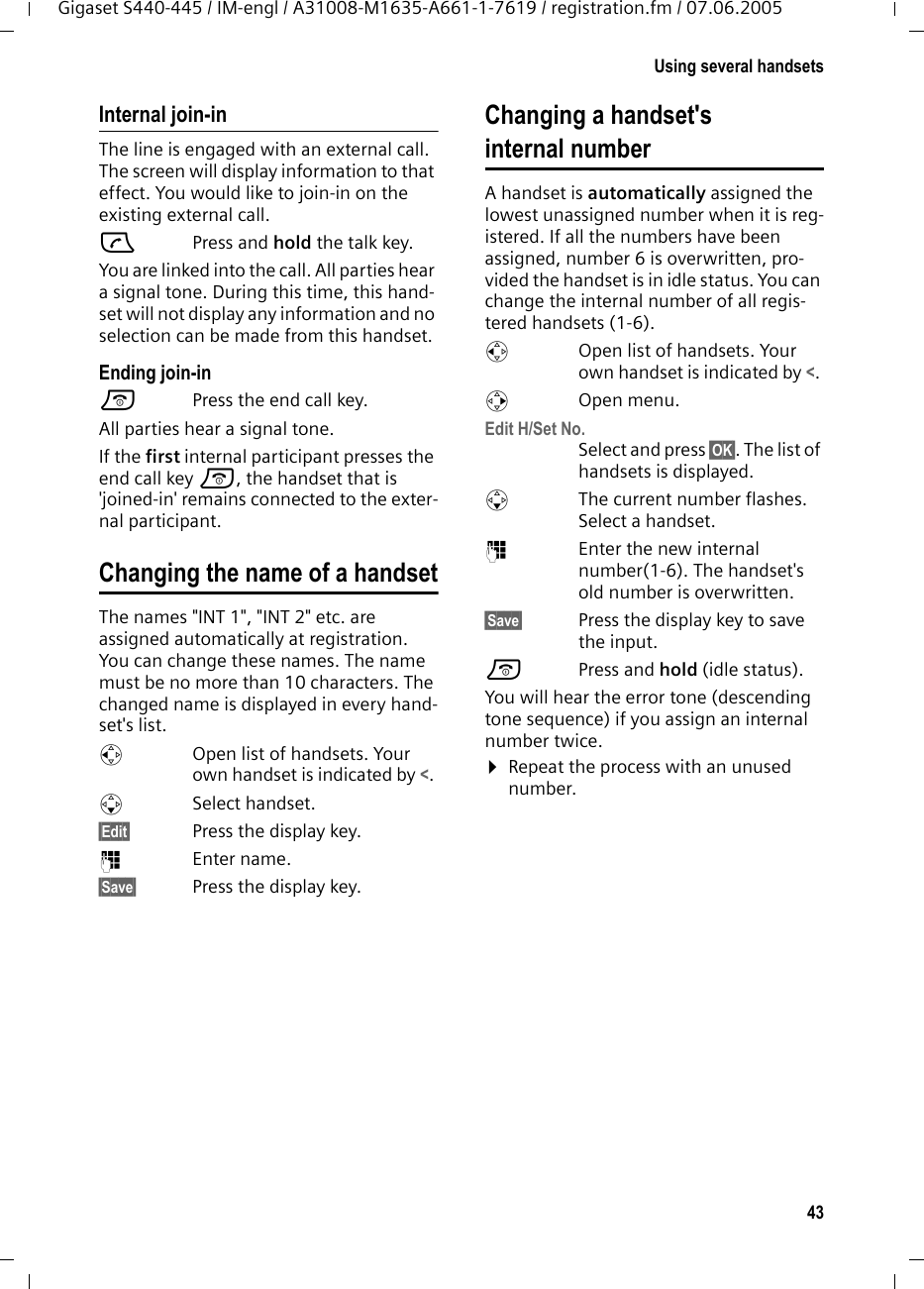
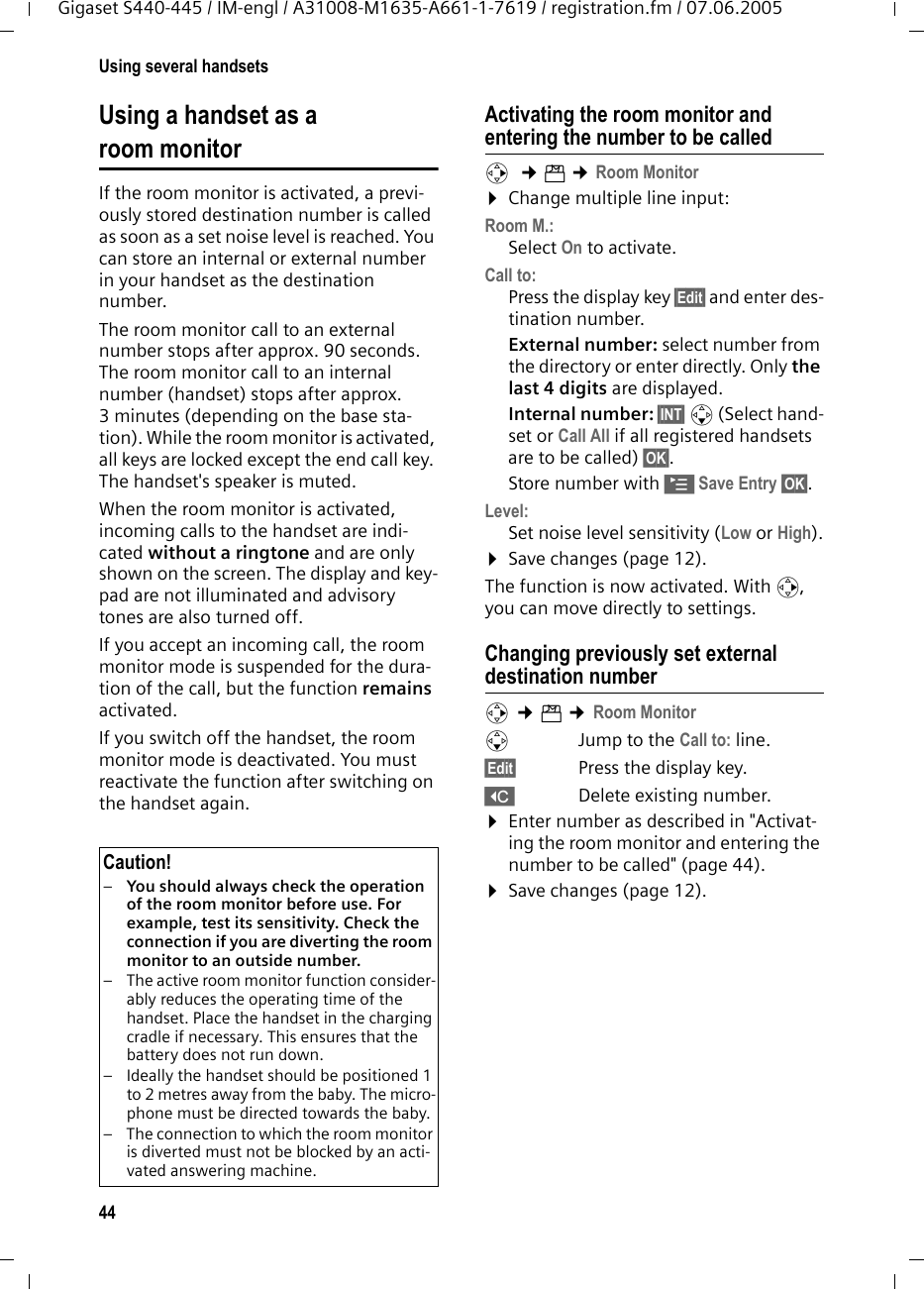
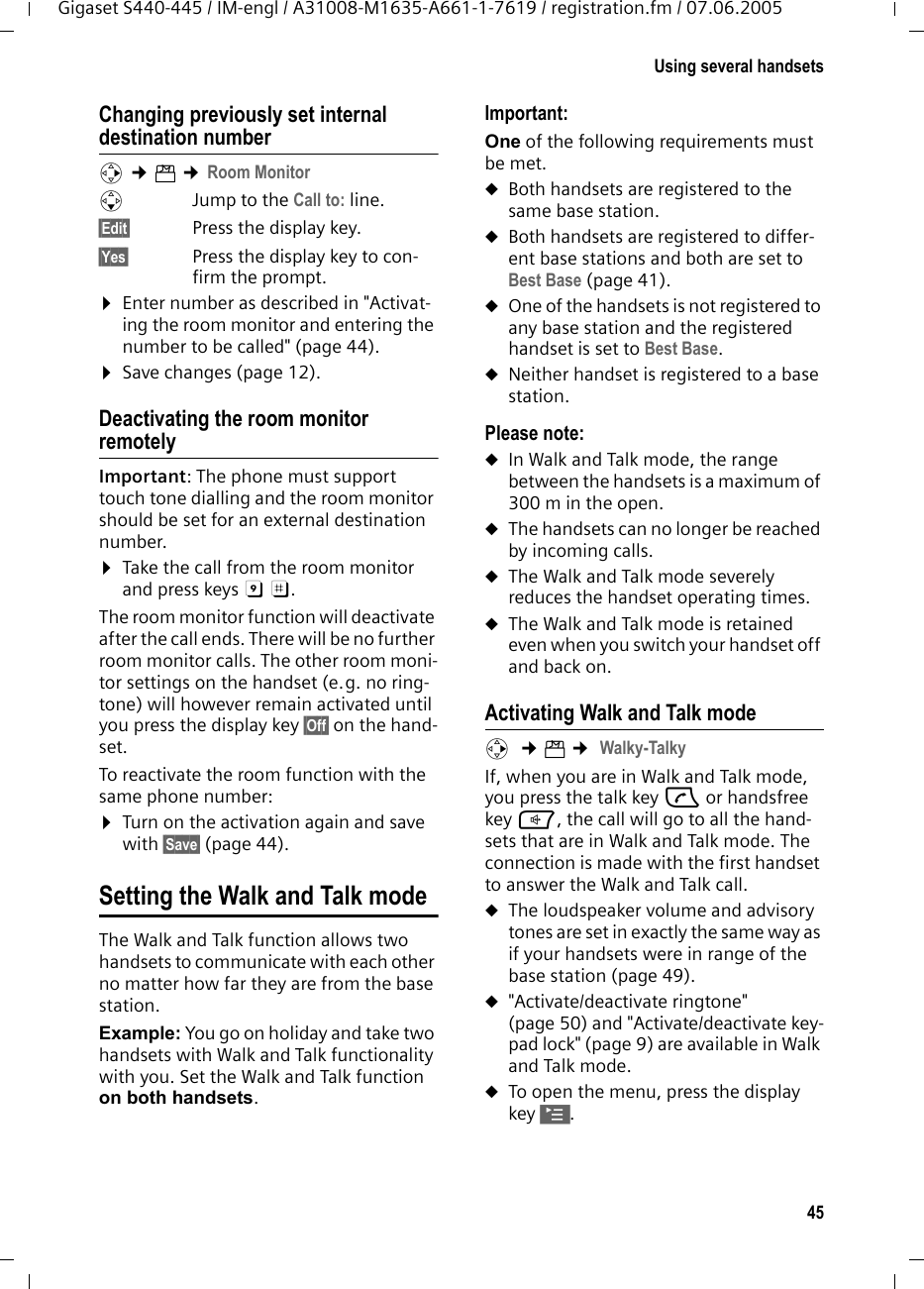
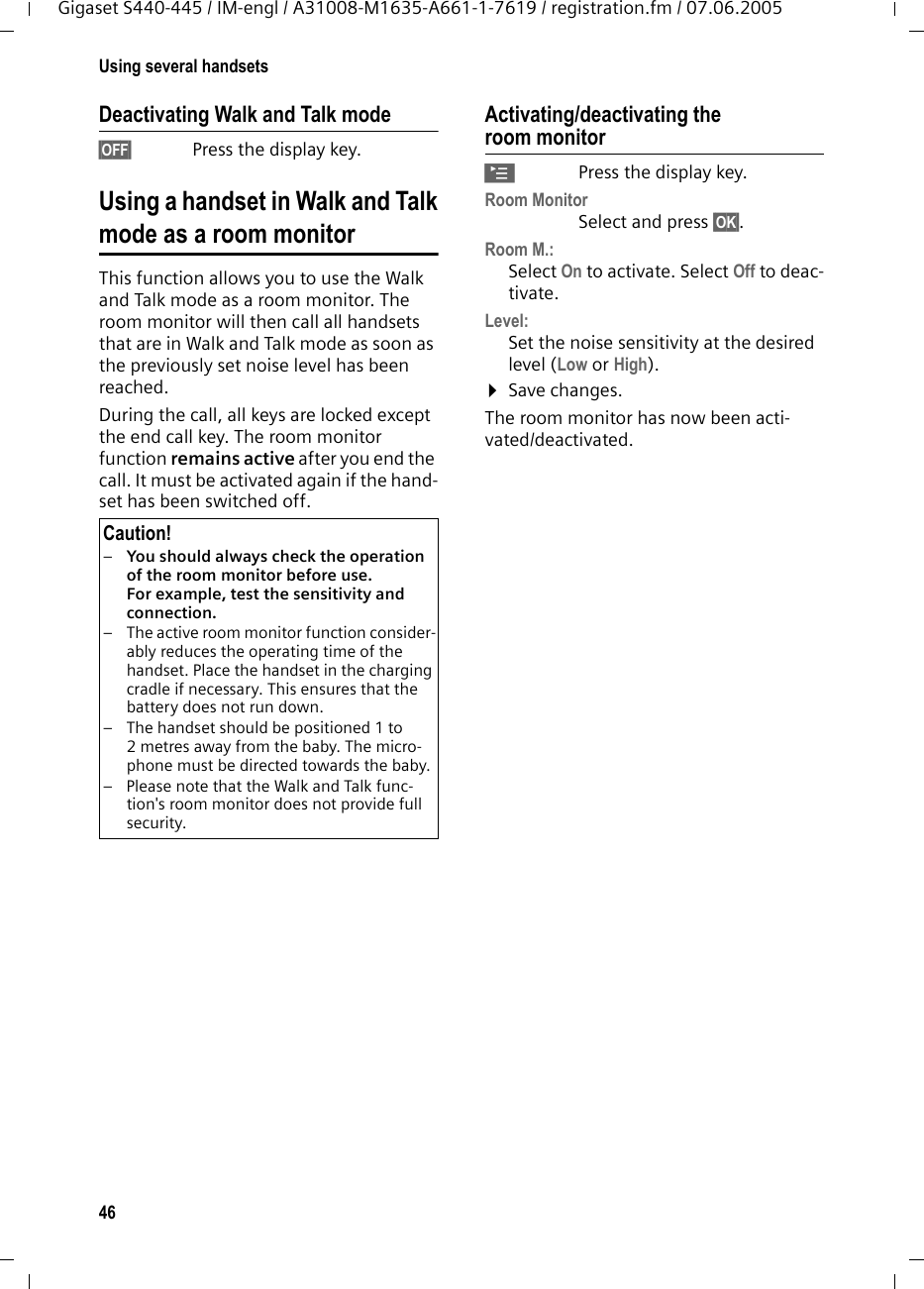
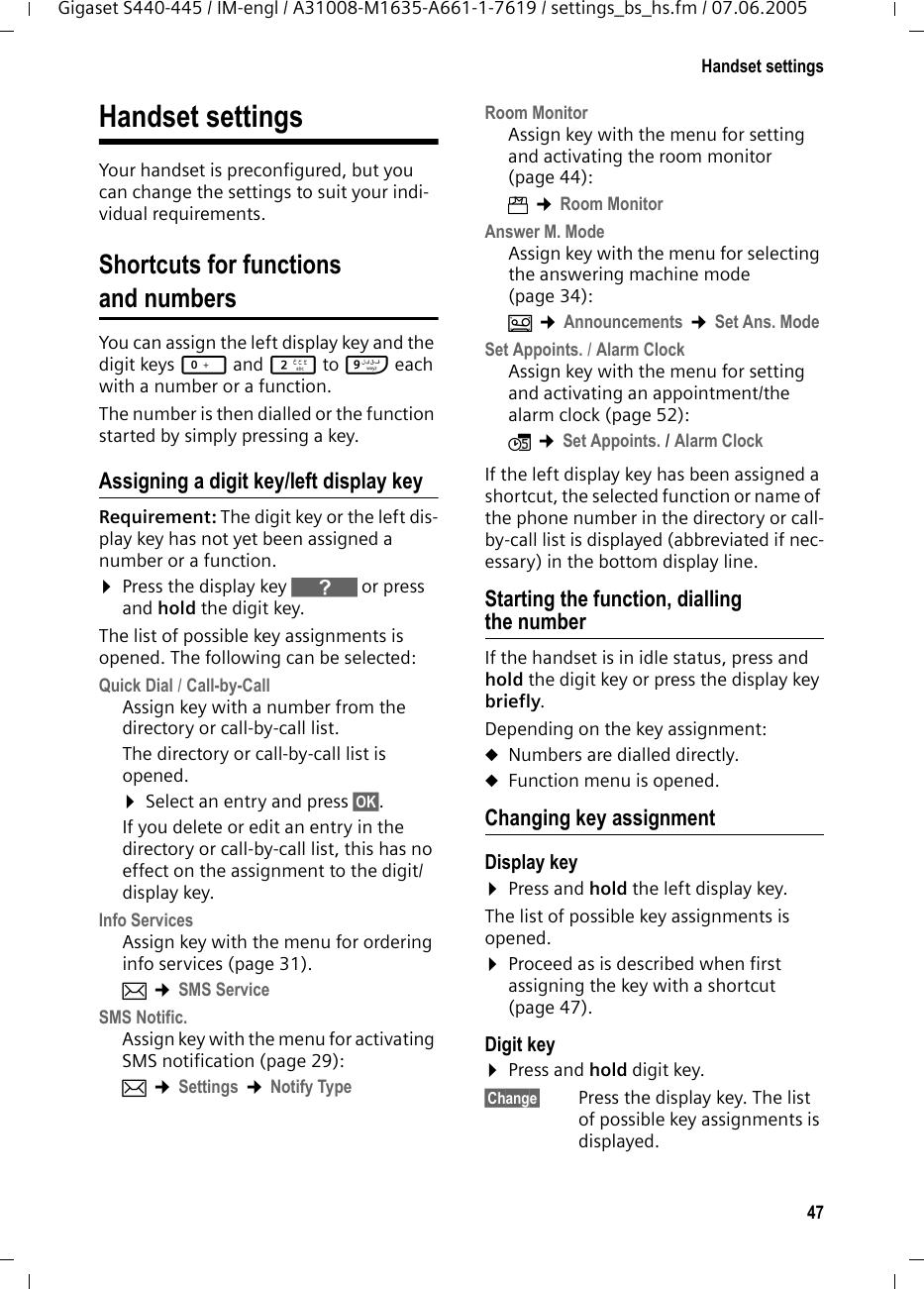
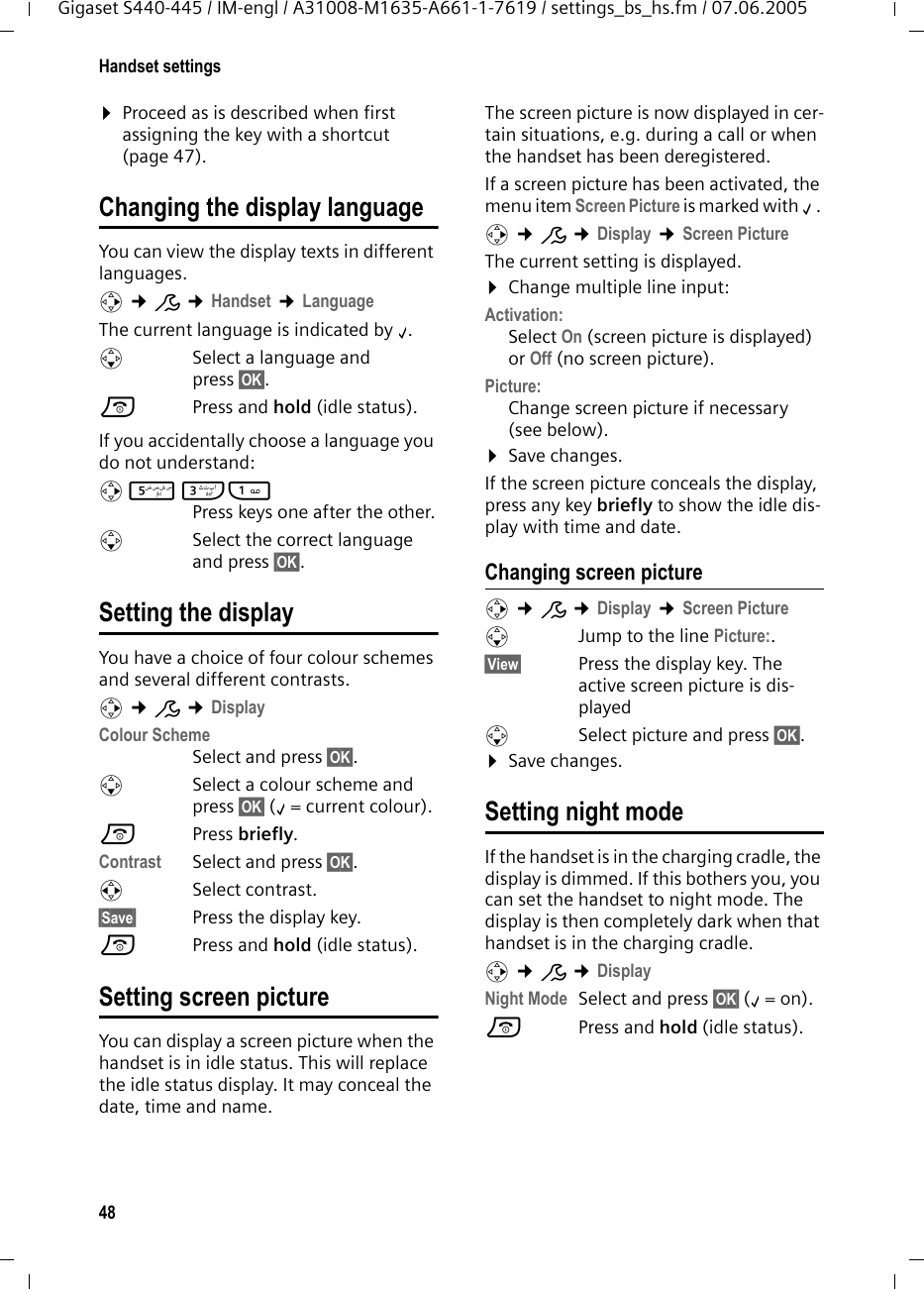
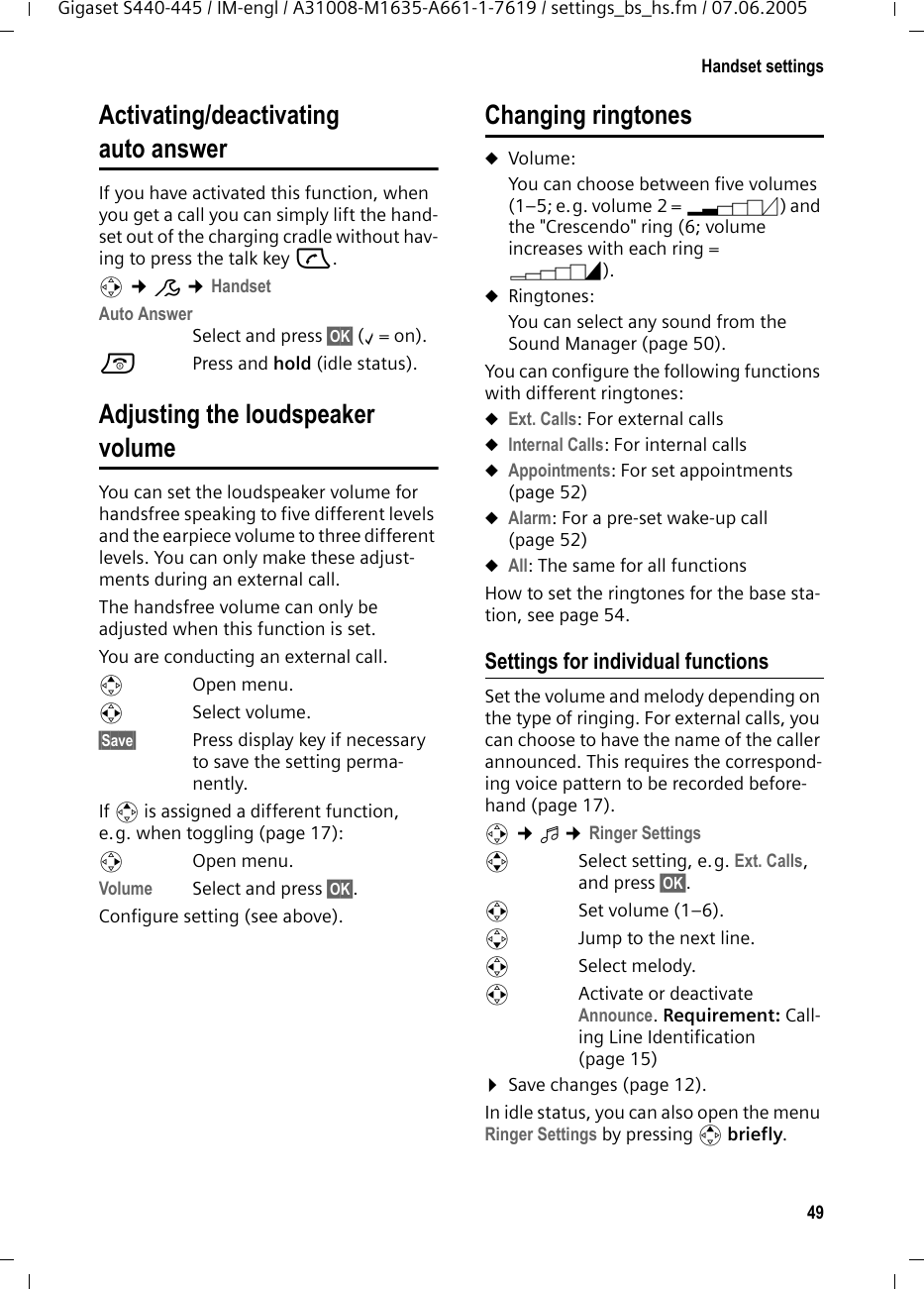
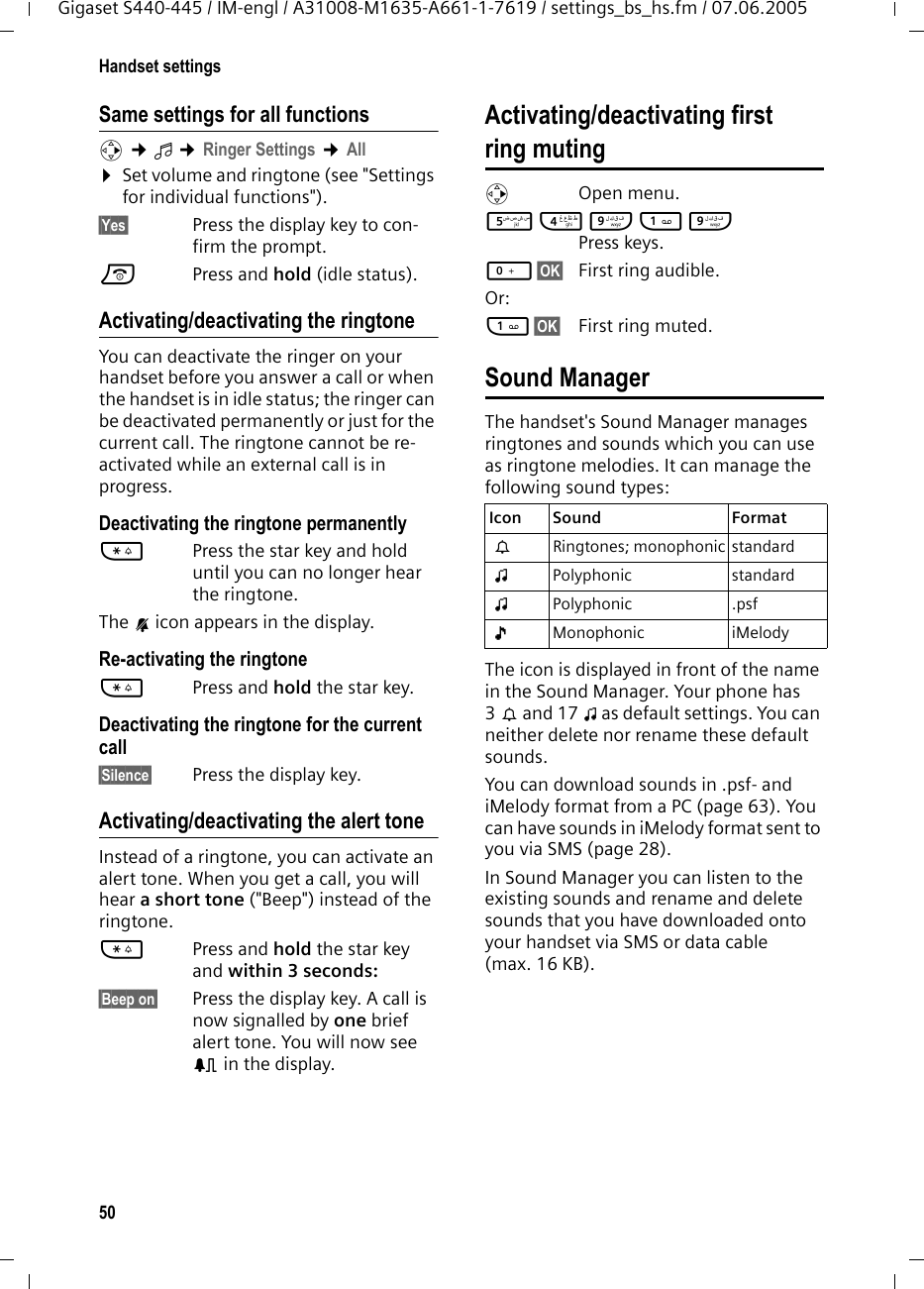
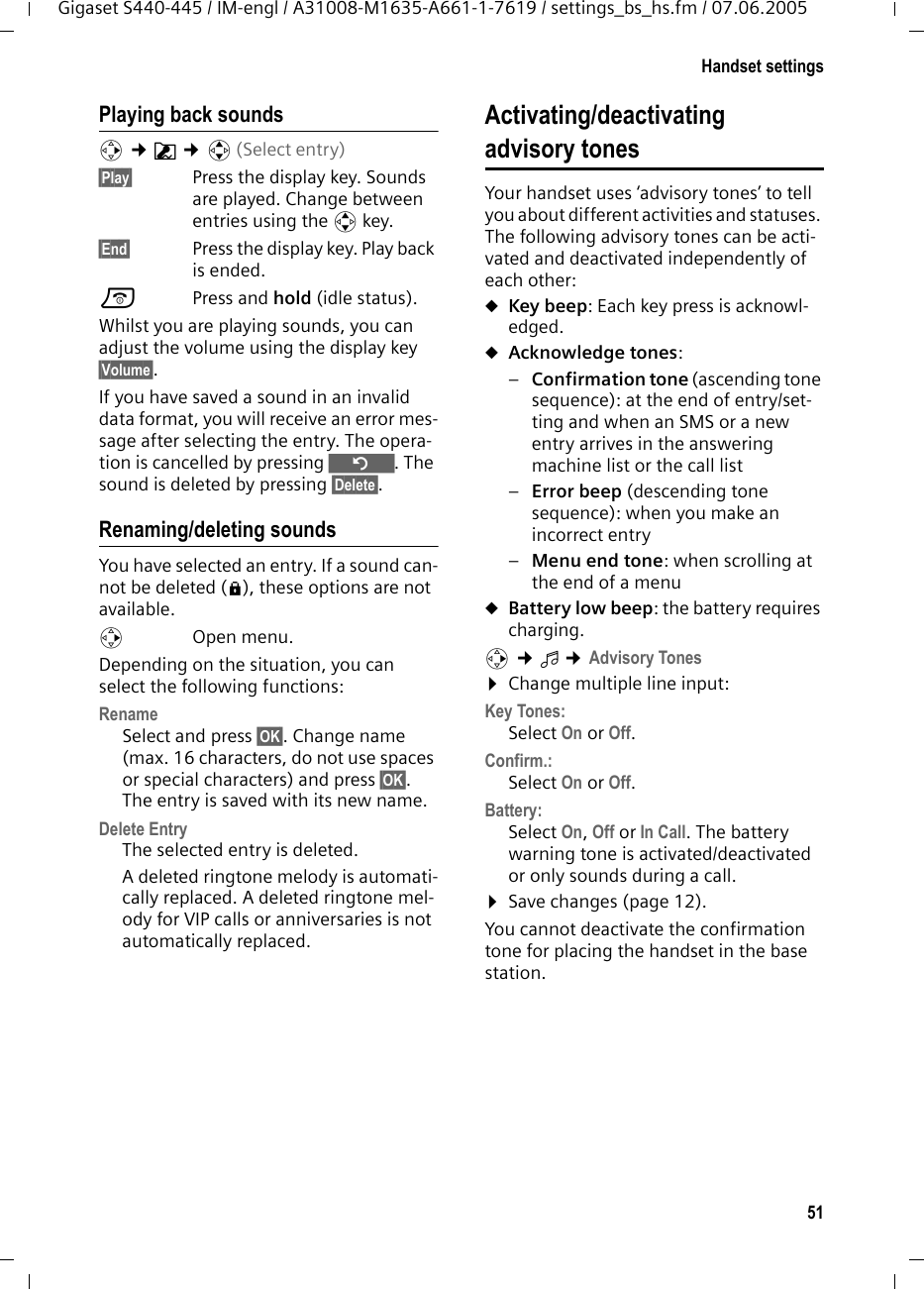
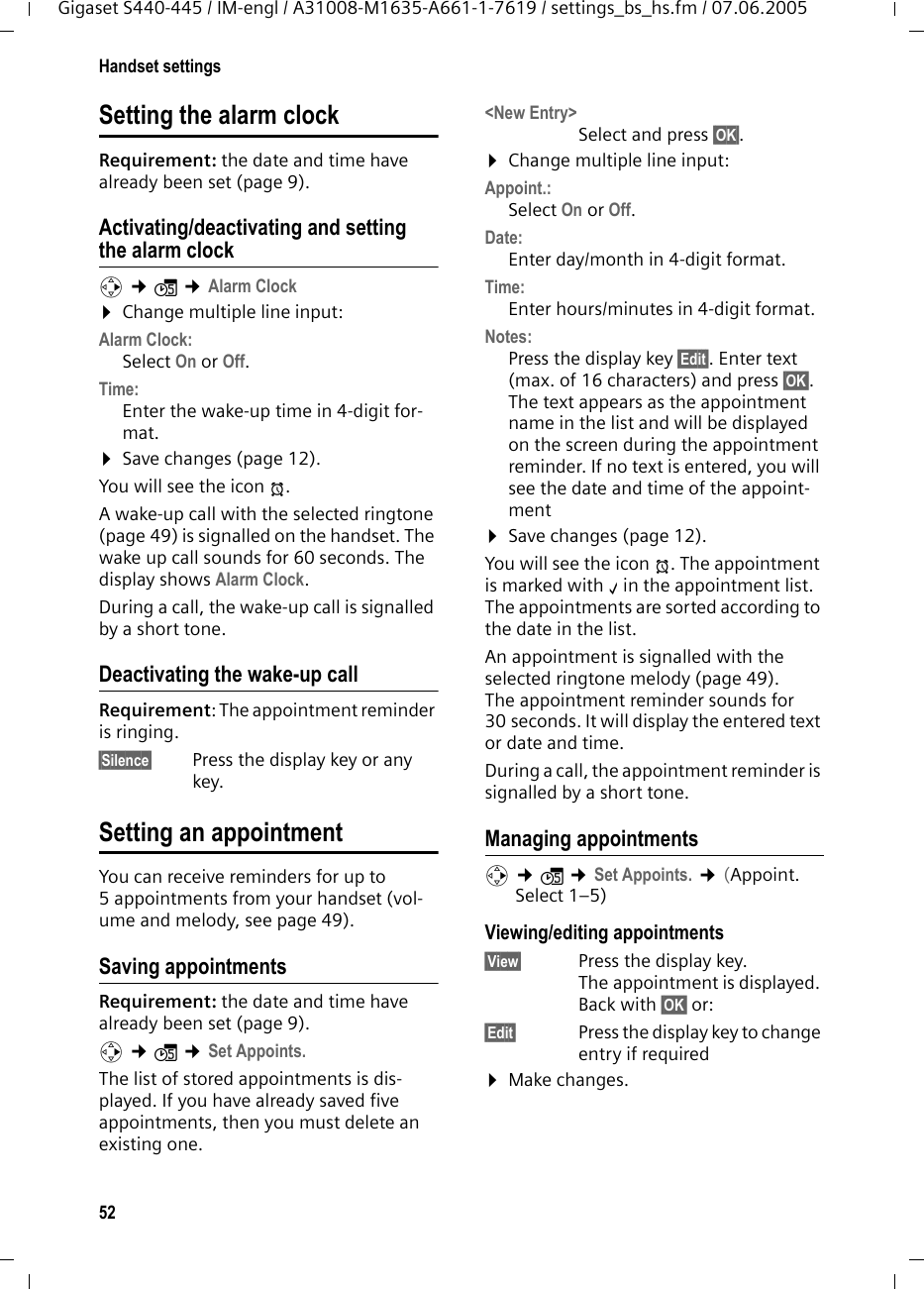
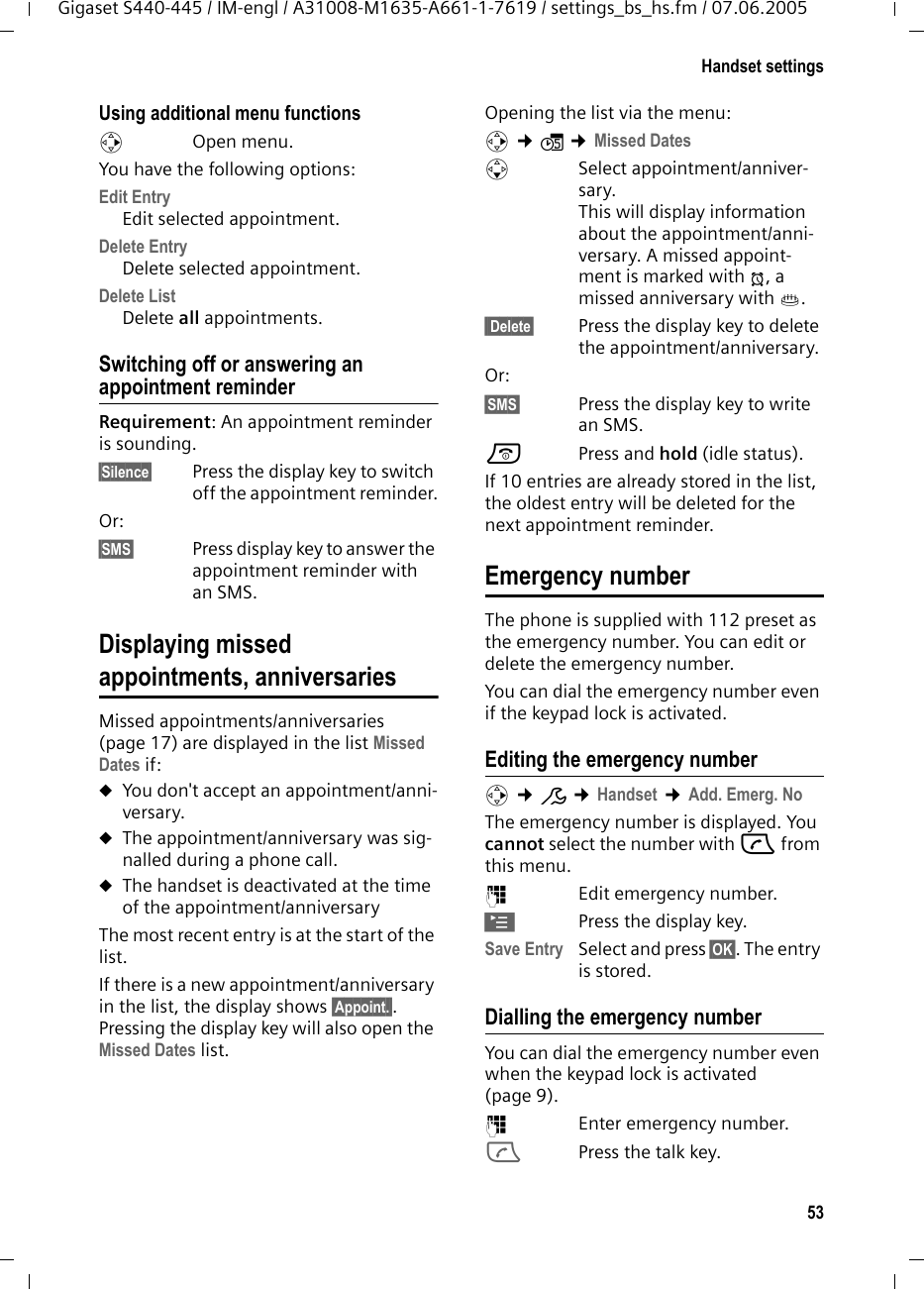
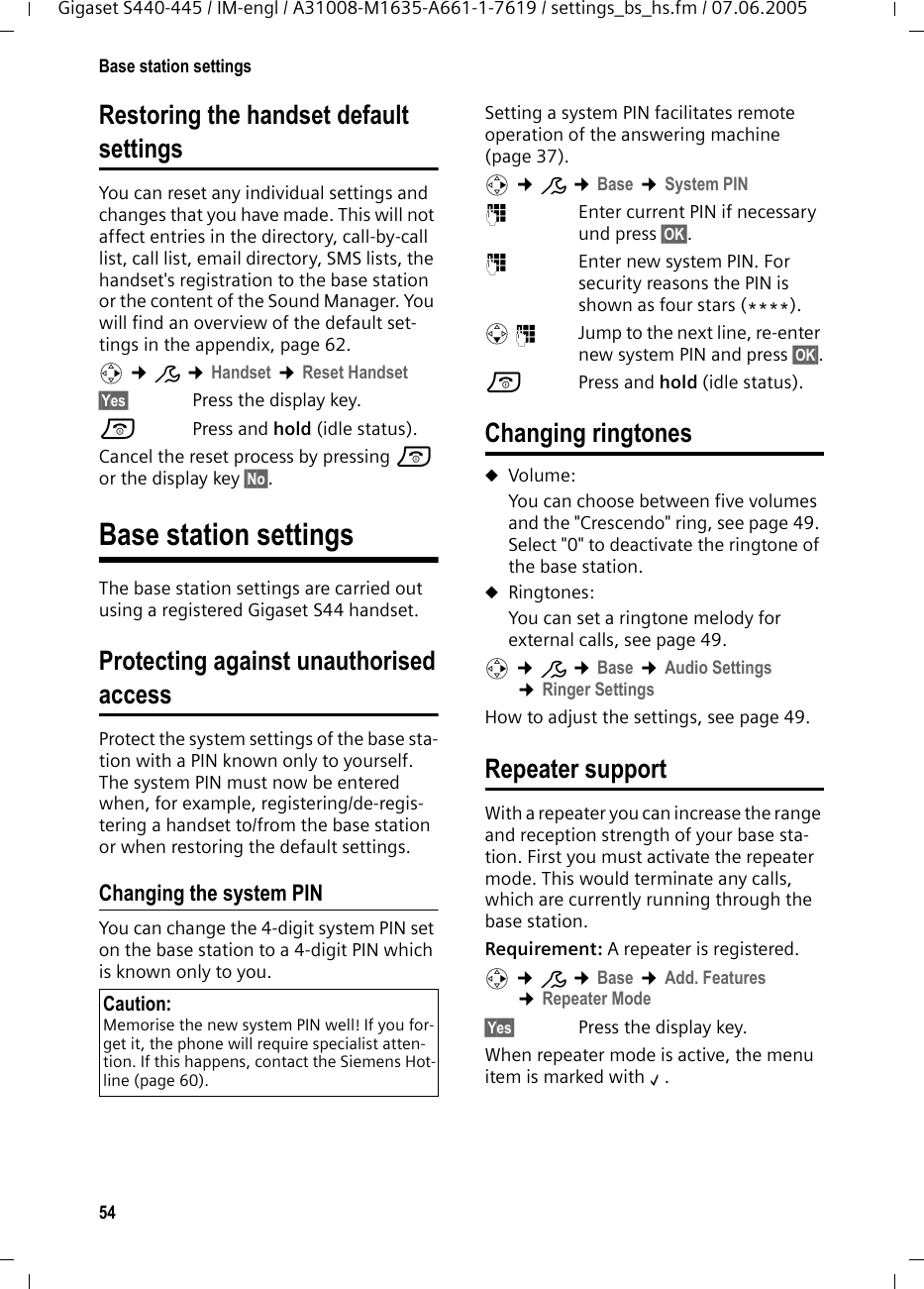
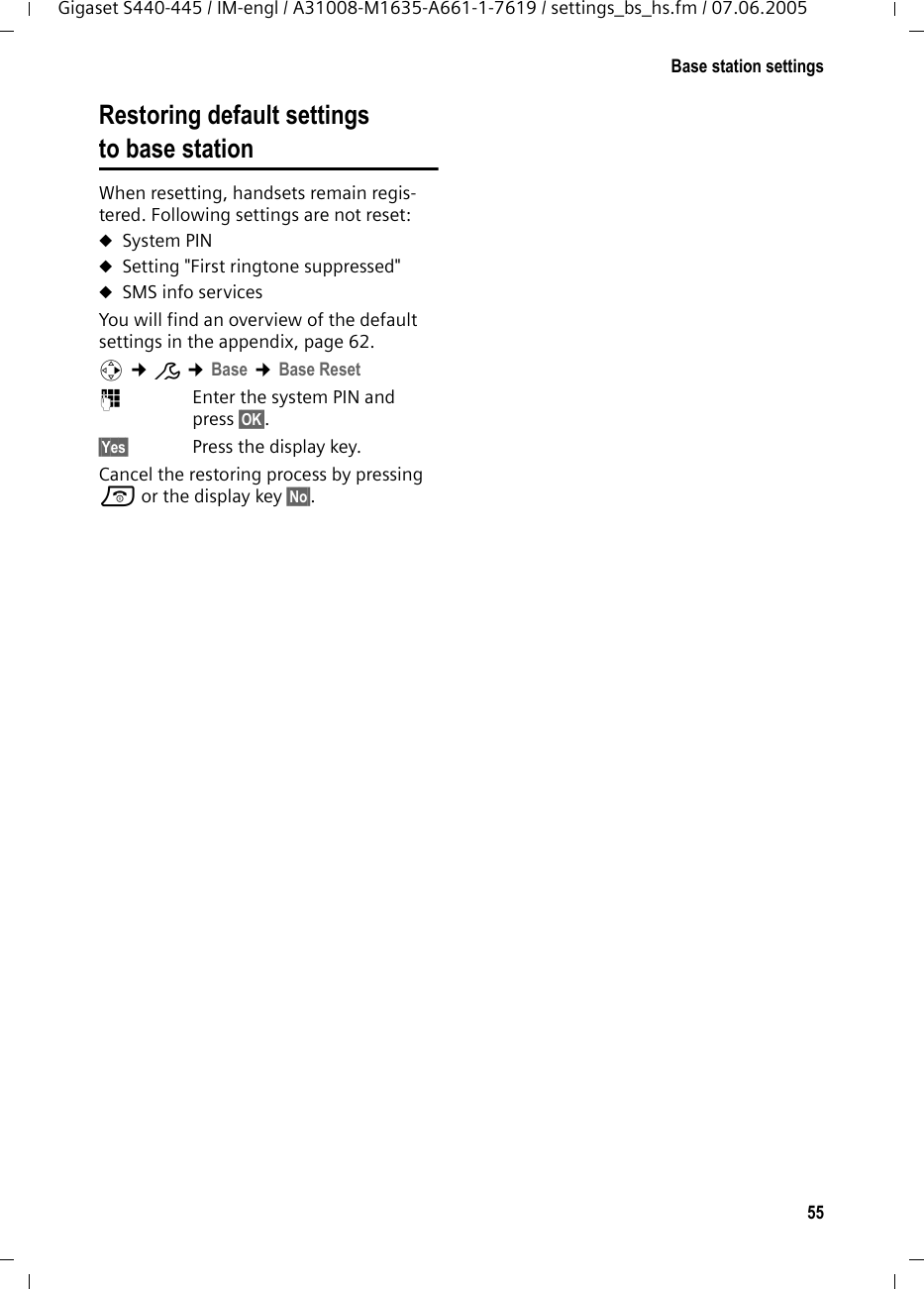
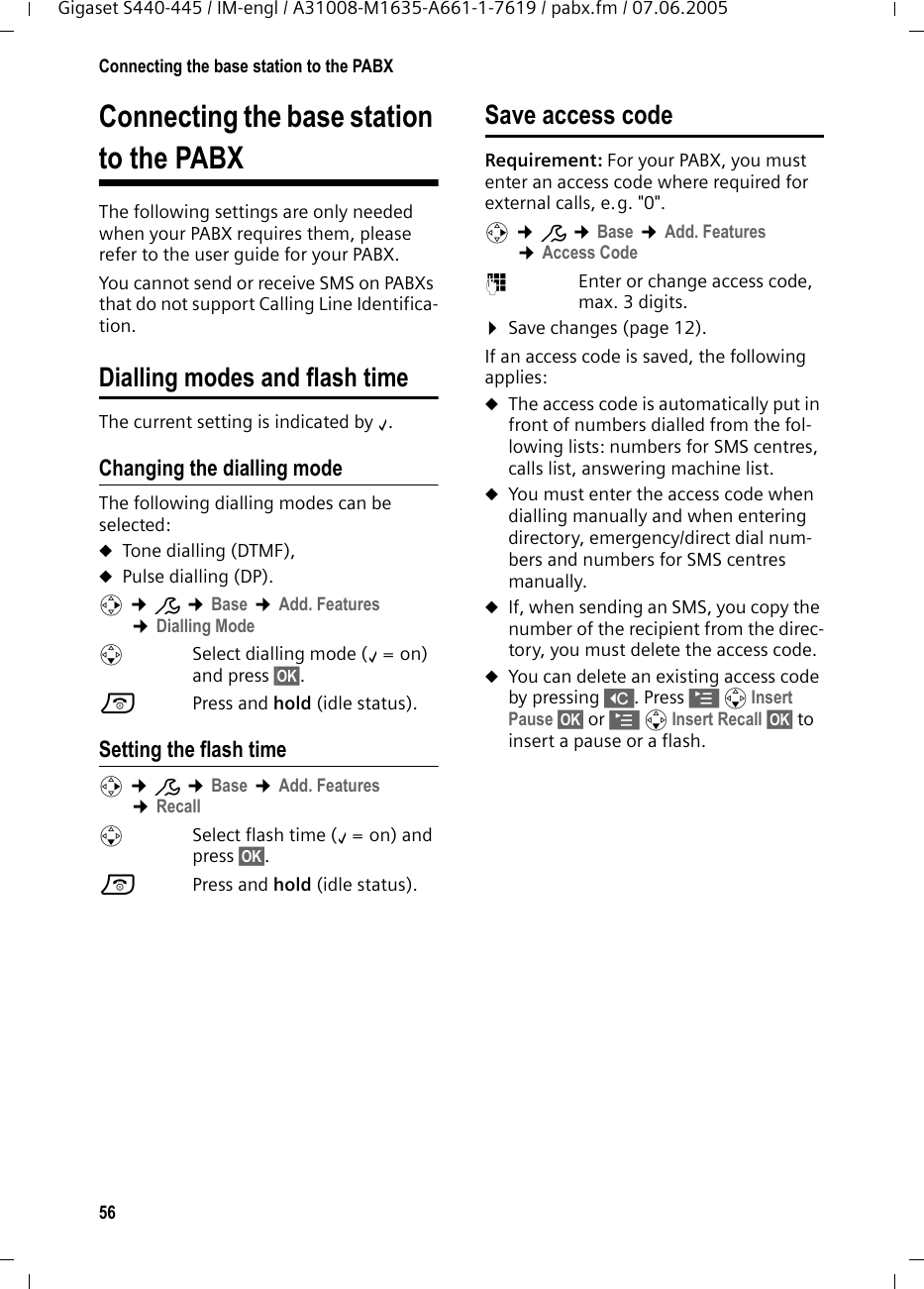
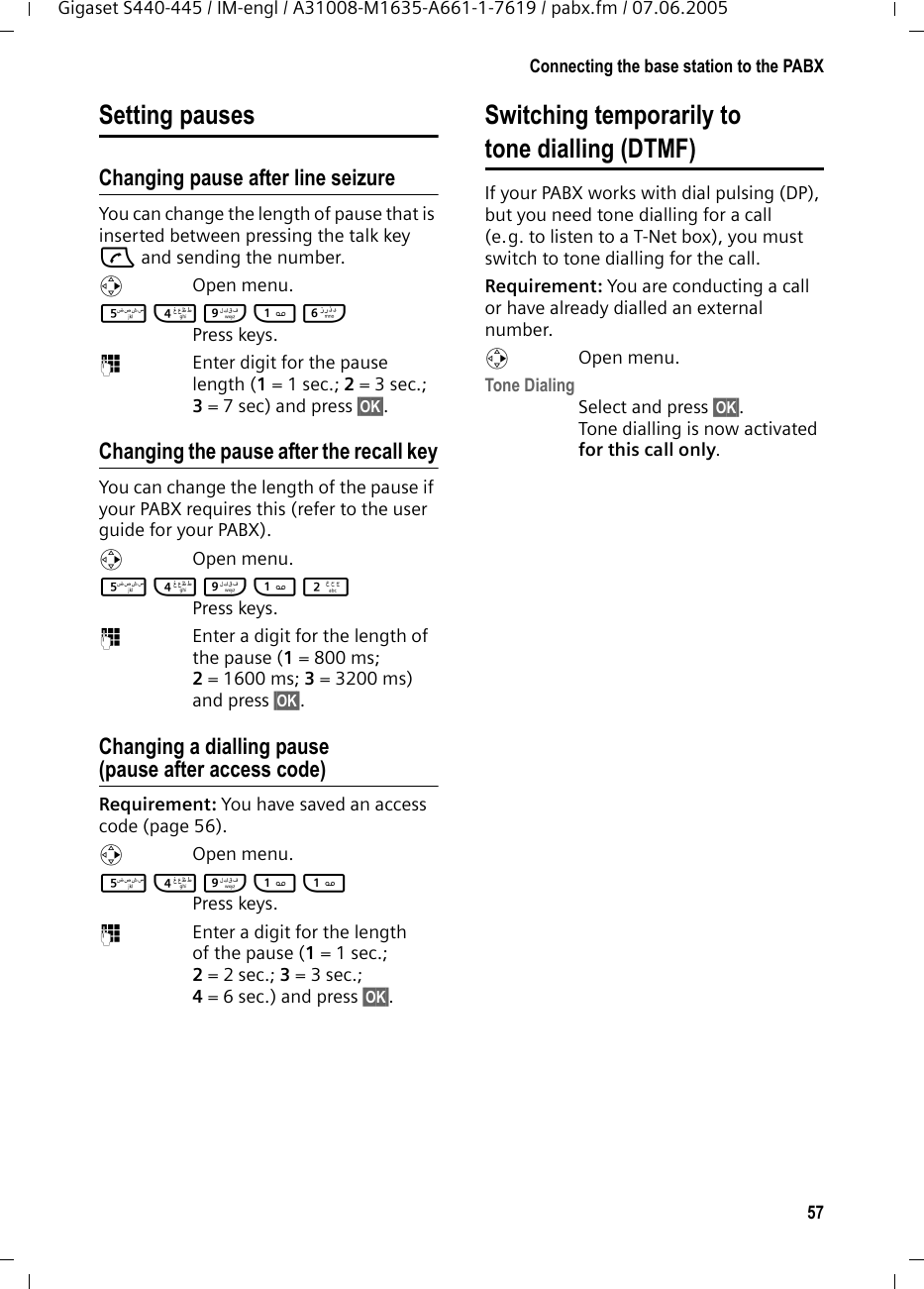
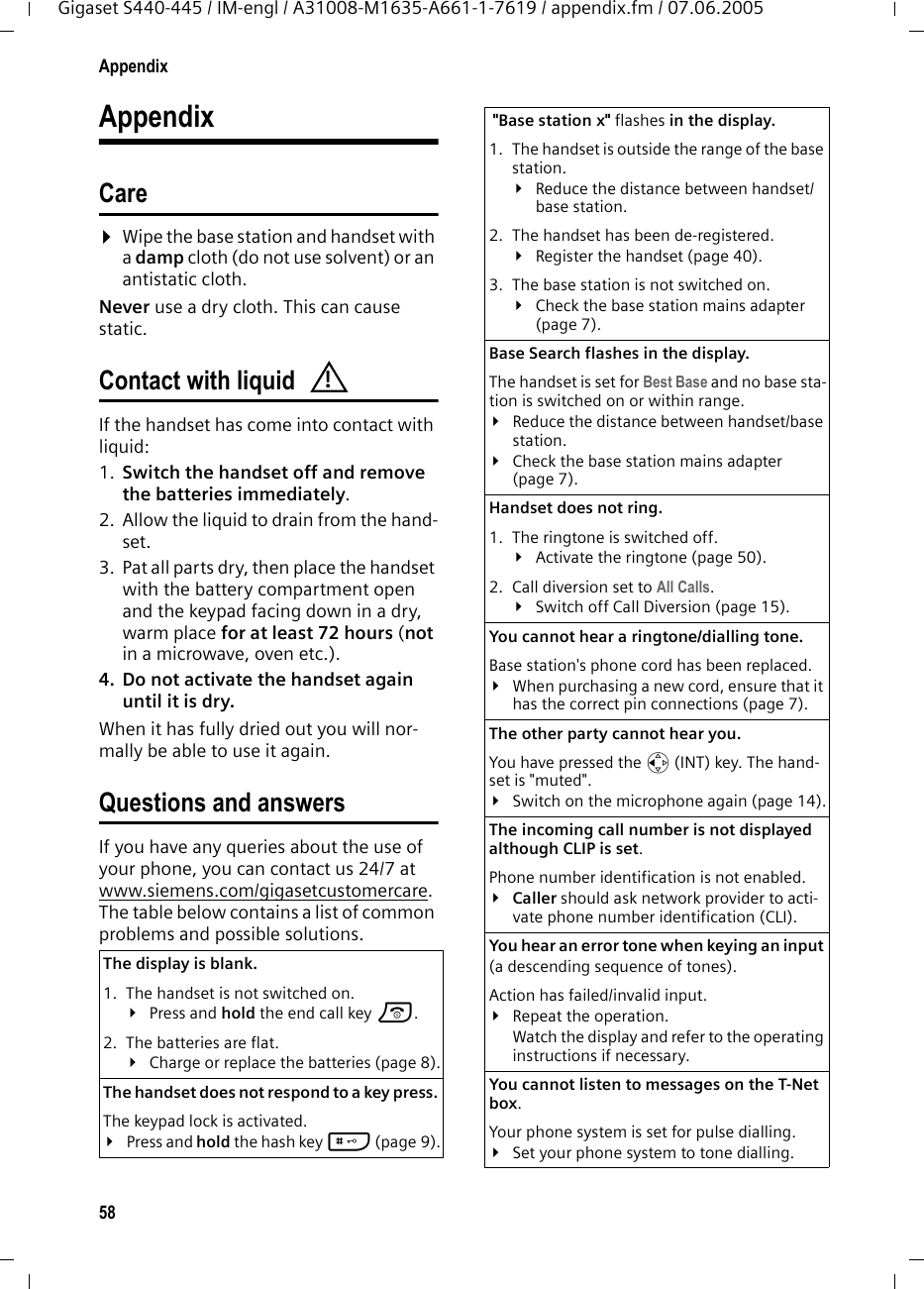
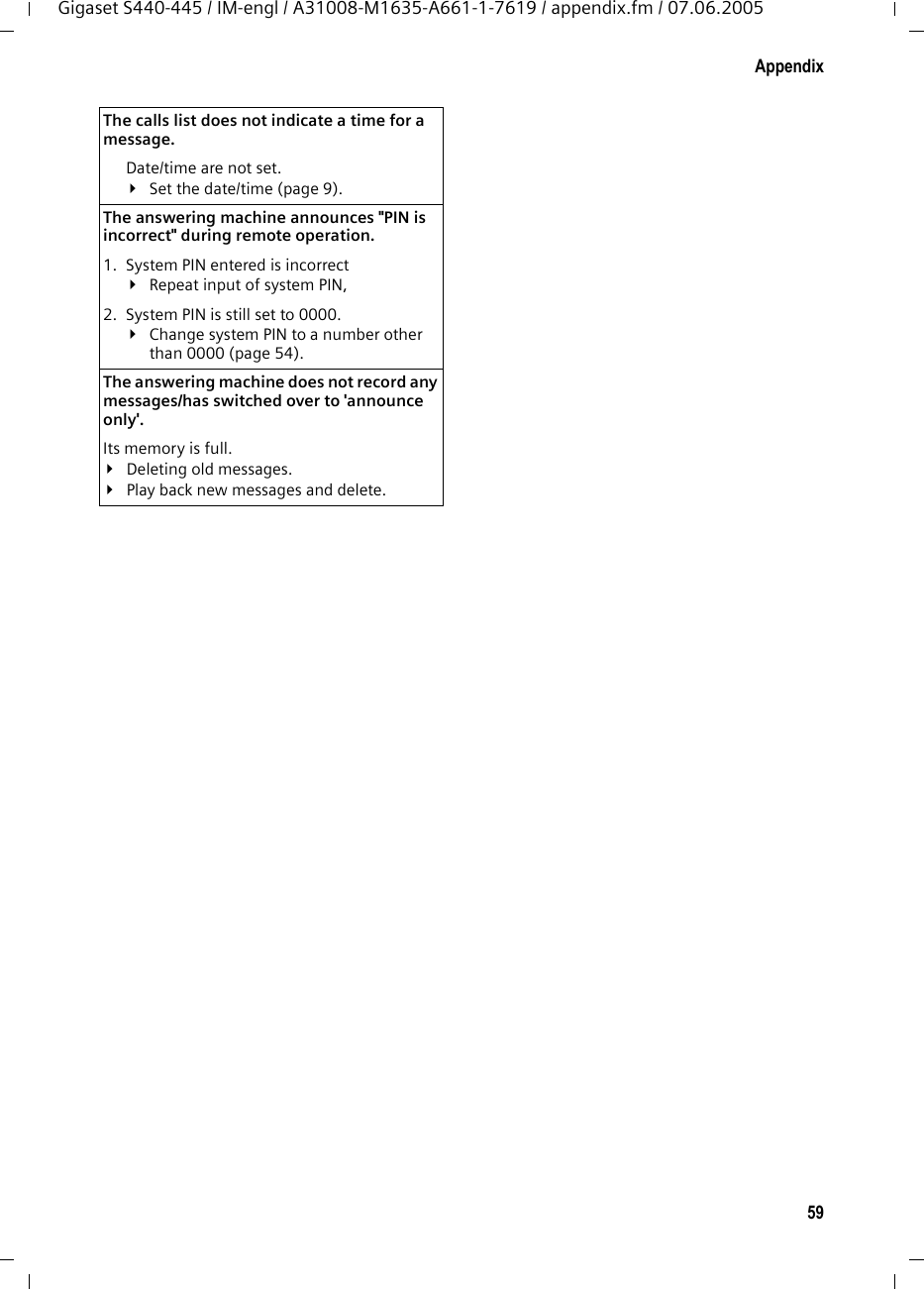
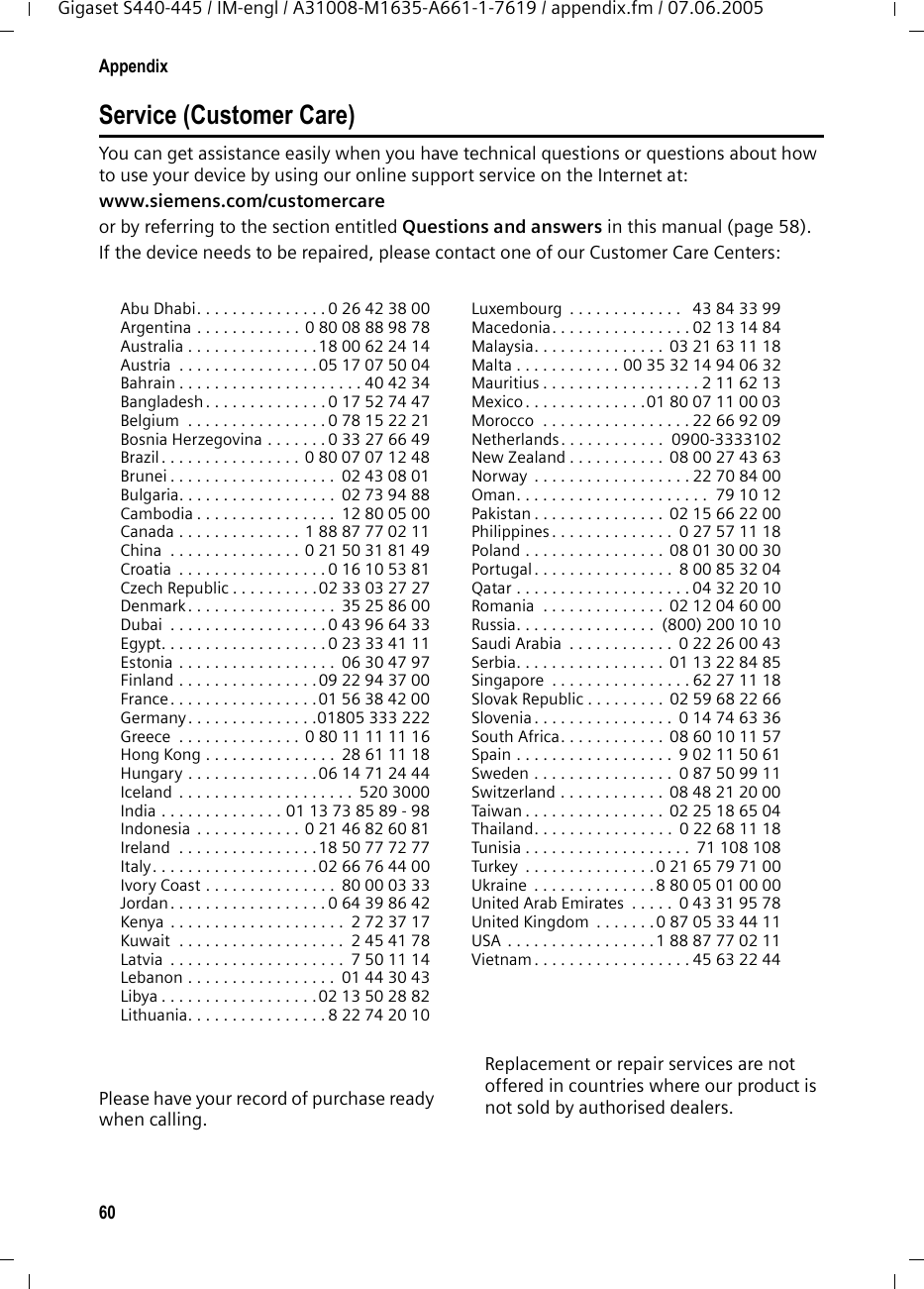
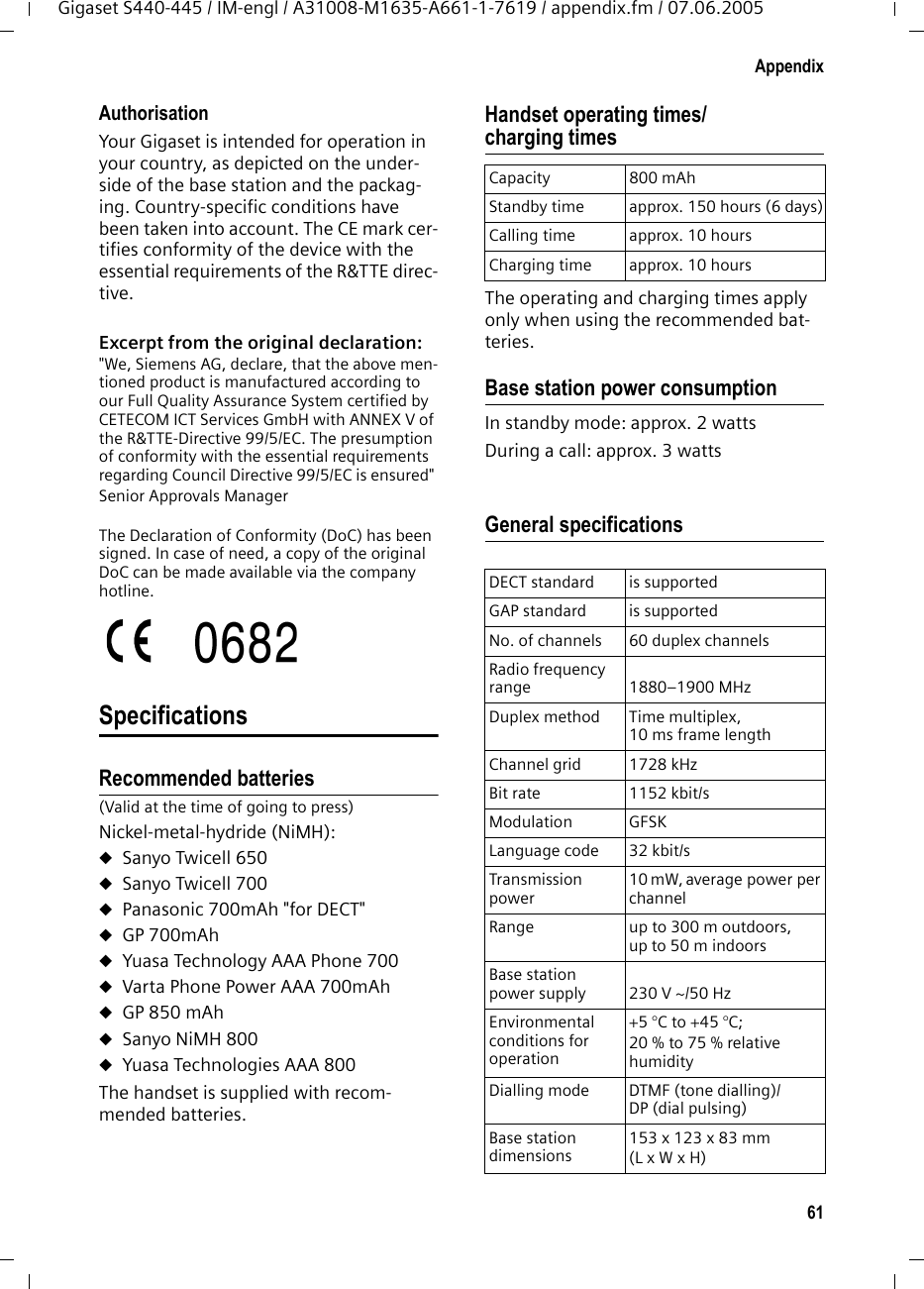
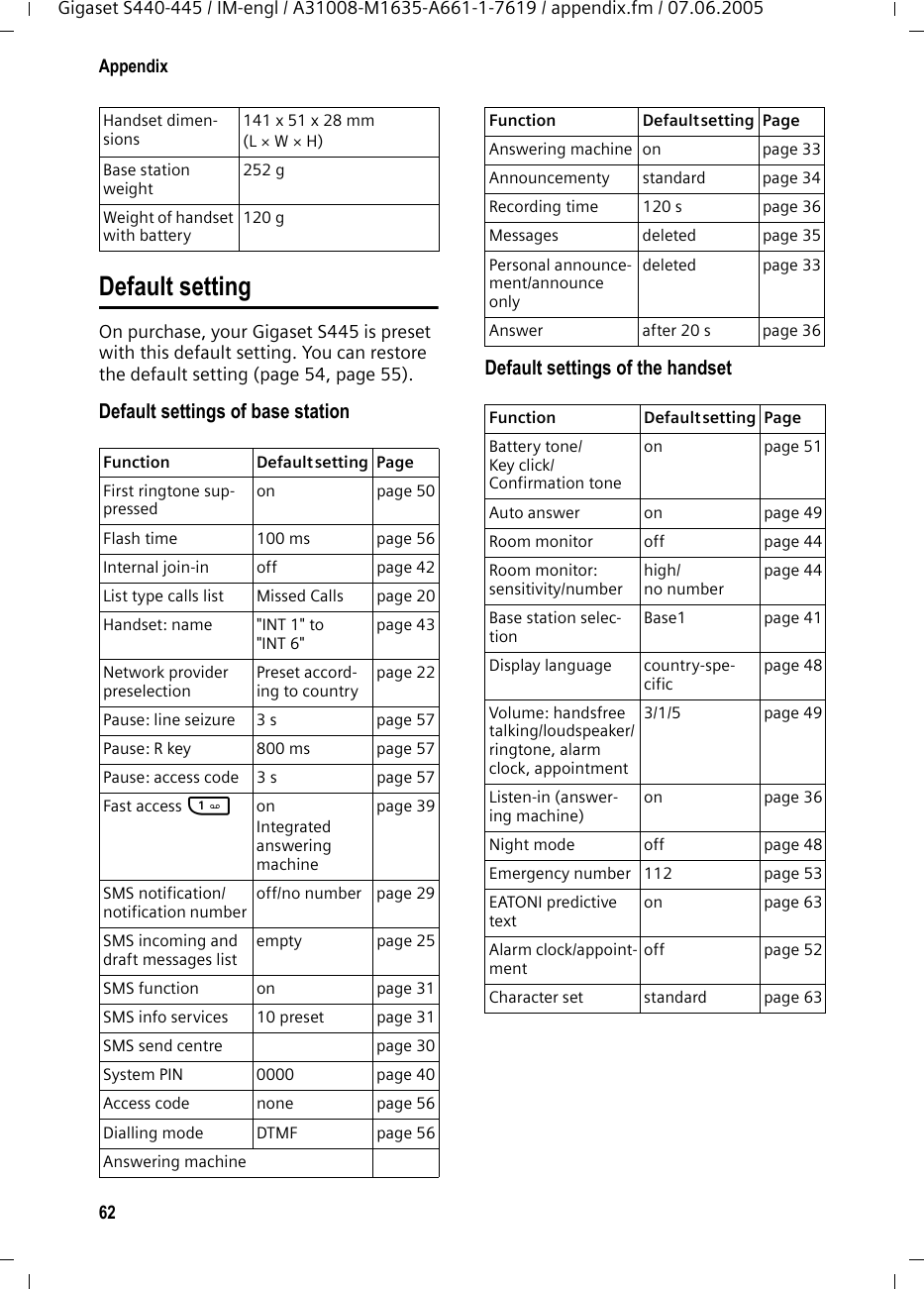
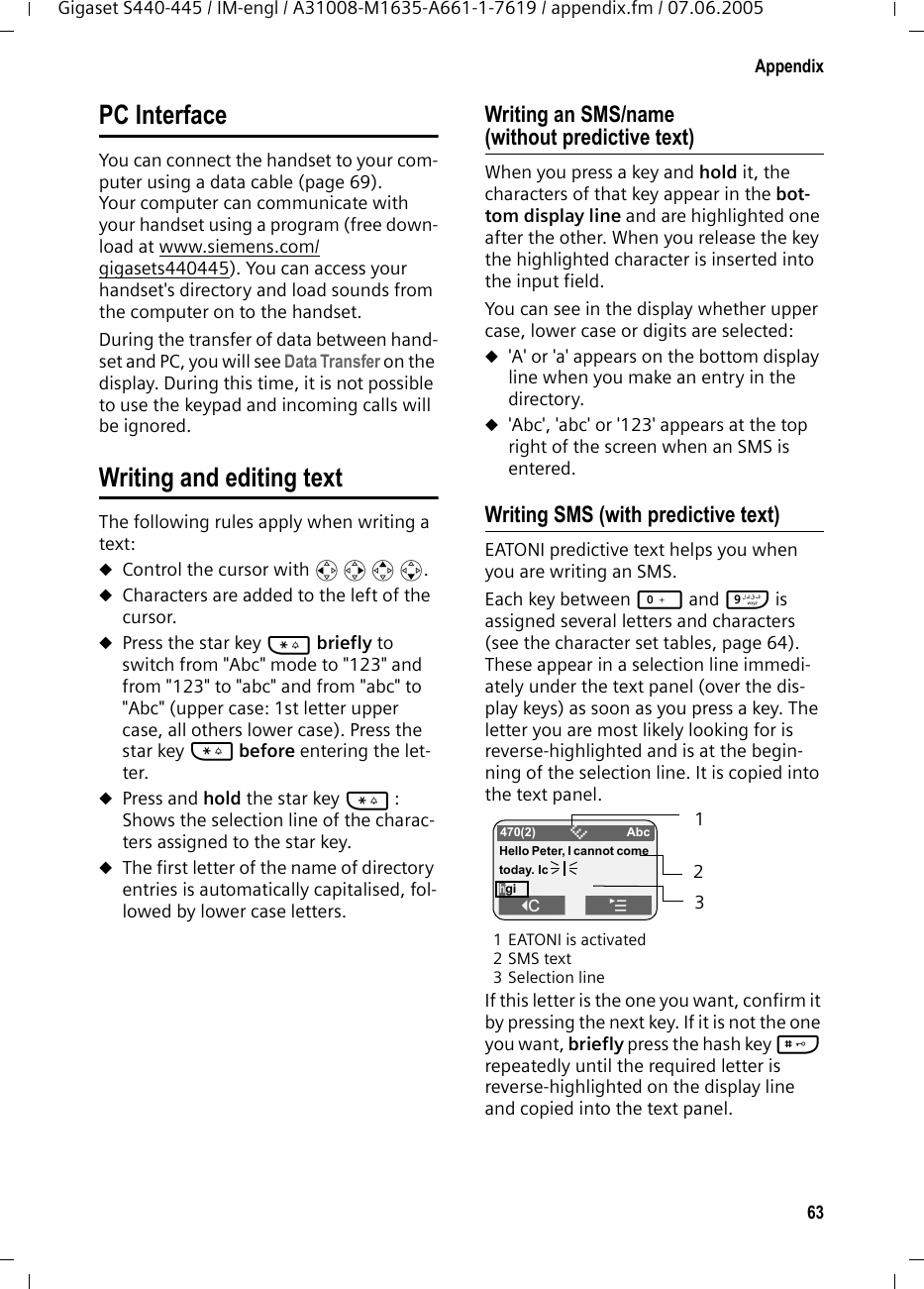
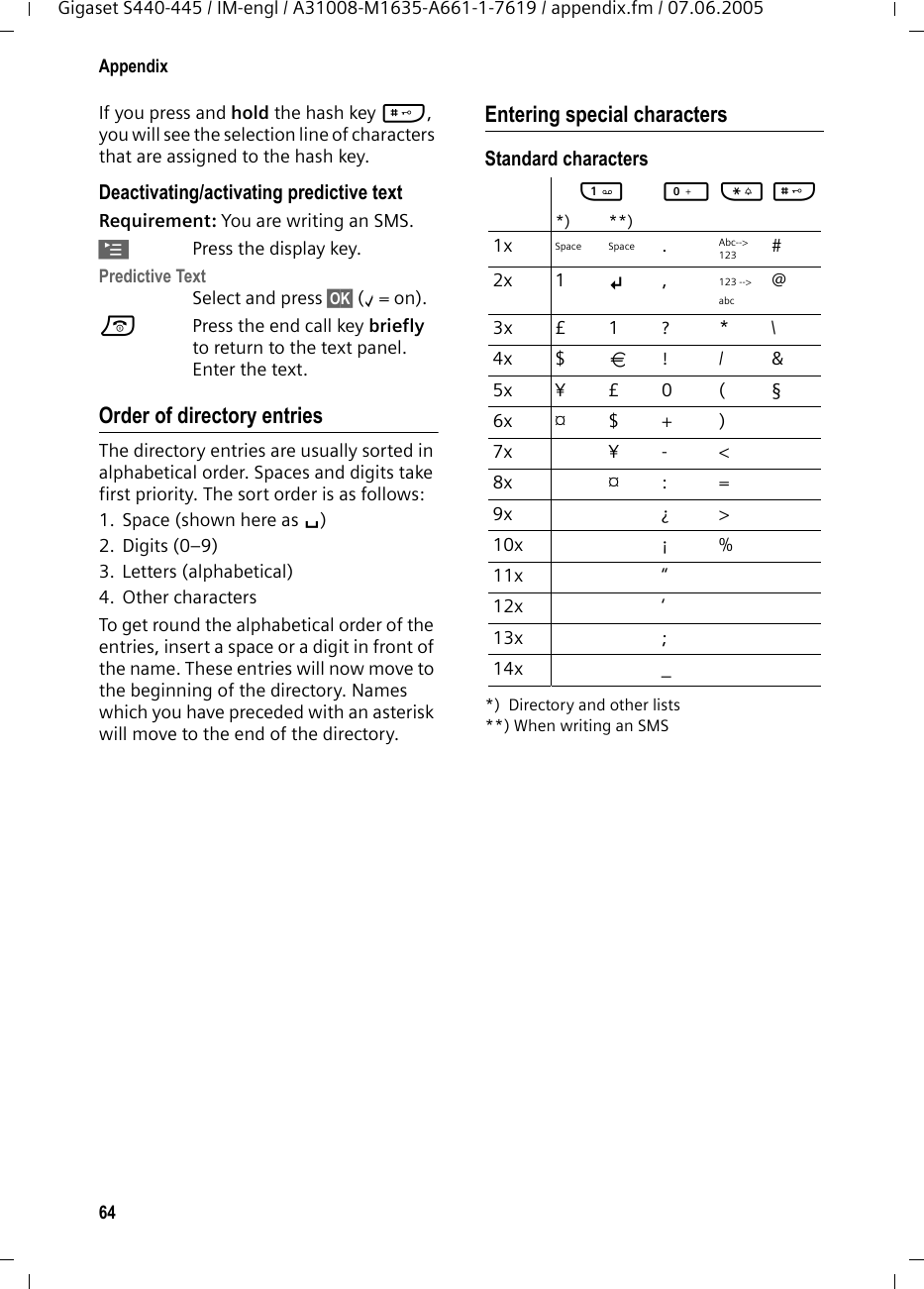
![65Menu treeGigaset S440-445 / IM-engl / A31008-M1635-A661-1-7619 / menuetree.fm / 07.06.2005Menu treeInstead of scrolling to locate a menu function, you can select a menu function faster by opening the menu and keying in the digit combination ("Shortcut").Example: v414 for "Set ringtone for the alarm clock".With the telephone in idle status, press v (open main menu):1 SMS î You have activated an SMS mailbox (general or private) without a PIN 1-1 Write Message1-2 Incoming 00+001-3 OutgoingYou have activated an SMS mailbox or 2-3 mailboxes with a PIN1-1 Mailbox 1-1-1 Write Message1-1-2 Incoming 00+001-1-3 Outgoing1-2to1-4Mailbox 1Mailbox 2Mailbox 31-2-1to1-4-1Write Message1-2-2to1-4-2Incoming 00+001-2-3to1-4-3Outgoing1-5 SMS Service1-5 SMS Service 1-5-1 Info Centre1-5-2 Ordering1-6 Settings 1-6-1 Service Centres 1-6-1-1 Service Centr.1 … [to]1-6-1-5 Service Centr. 51-6-2 SMS Mailboxes 1-6-2-1 Mailbox1-6-2-2 Mailbox 11-6-2-3 Mailbox 21-6-2-4 Mailbox 31-6-3 Notify Number1-6-4 Notify Type1-6-5 Status Report](https://usermanual.wiki/Siemens-Information-and-Communication-Mobile/S445.Users-Manual-Addendum/User-Guide-594585-Page-66.png)
![66Menu treeGigaset S440-445 / IM-engl / A31008-M1635-A661-1-7619 / menuetree.fm / 07.06.20053 Add. Features í 3-1 Room Monitor3-2 Walky-Talky4 Audio Settings ï 4-1 Ringer Settings 4-1-1 Ext. Calls4-1-2 Internal Calls4-1-3 Appointments4-1-4 Alarm4-1-5 All4-2 Advisory Tones5 H/Set Settings Ð 5-1 Date/Time 5-2 Display 5-2-1 Screen Picture 5-2-2 Colour Scheme5-2-3 Contrast5-2-4 Night Mode5-3 Handset 5-3-1 Language5-3-2 Auto Answer5-3-3 Add. Emerg. No5-3-4 Register H/Set 5-3-4-1 Base1 … [to]5-3-4-4 Base4 5-3-5 Select Base 5-3-5-1 Base1 … [to]5-3-5-4 Base4 5-3-5-5 Best Base5-3-6 Reset Handset](https://usermanual.wiki/Siemens-Information-and-Communication-Mobile/S445.Users-Manual-Addendum/User-Guide-594585-Page-67.png)
